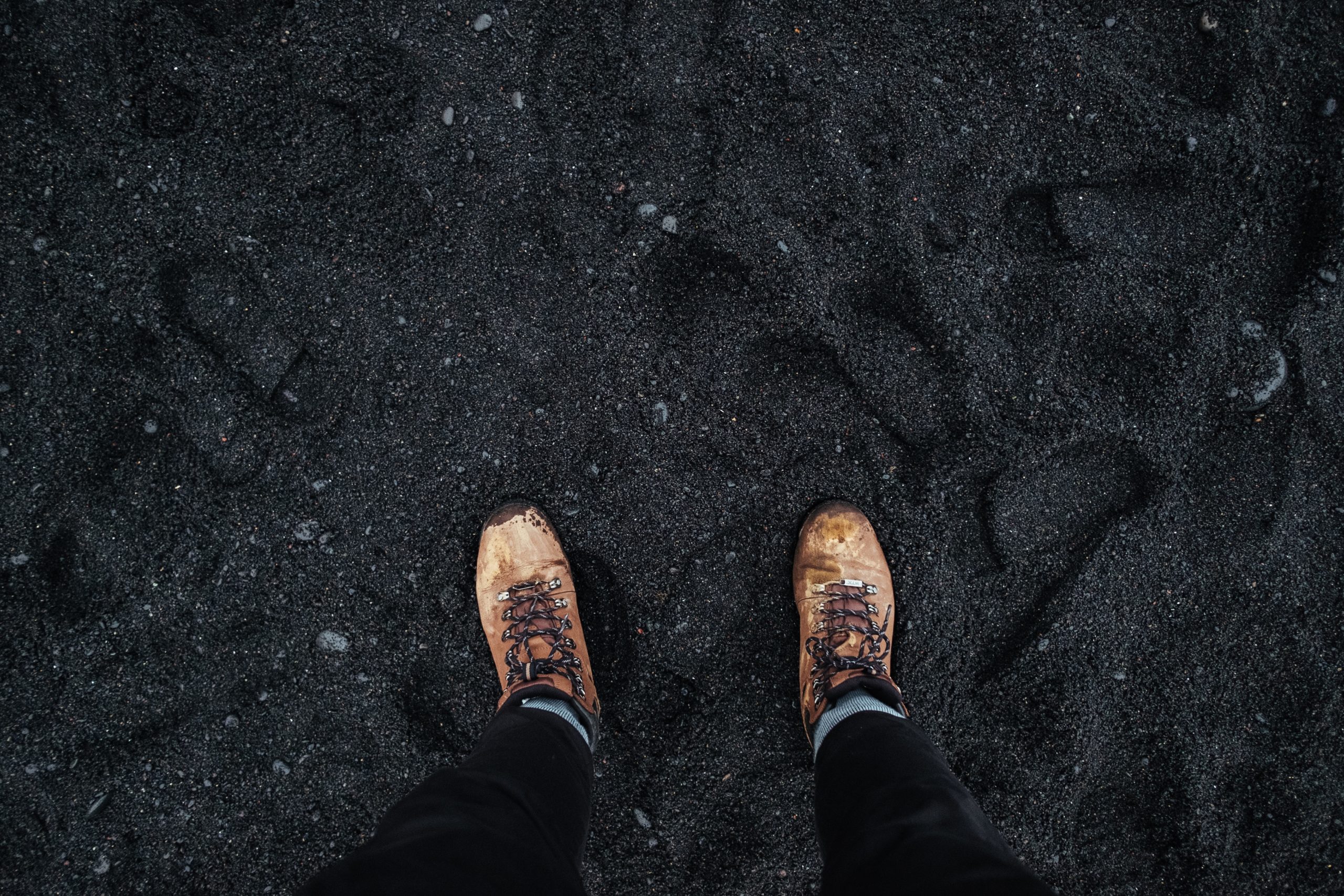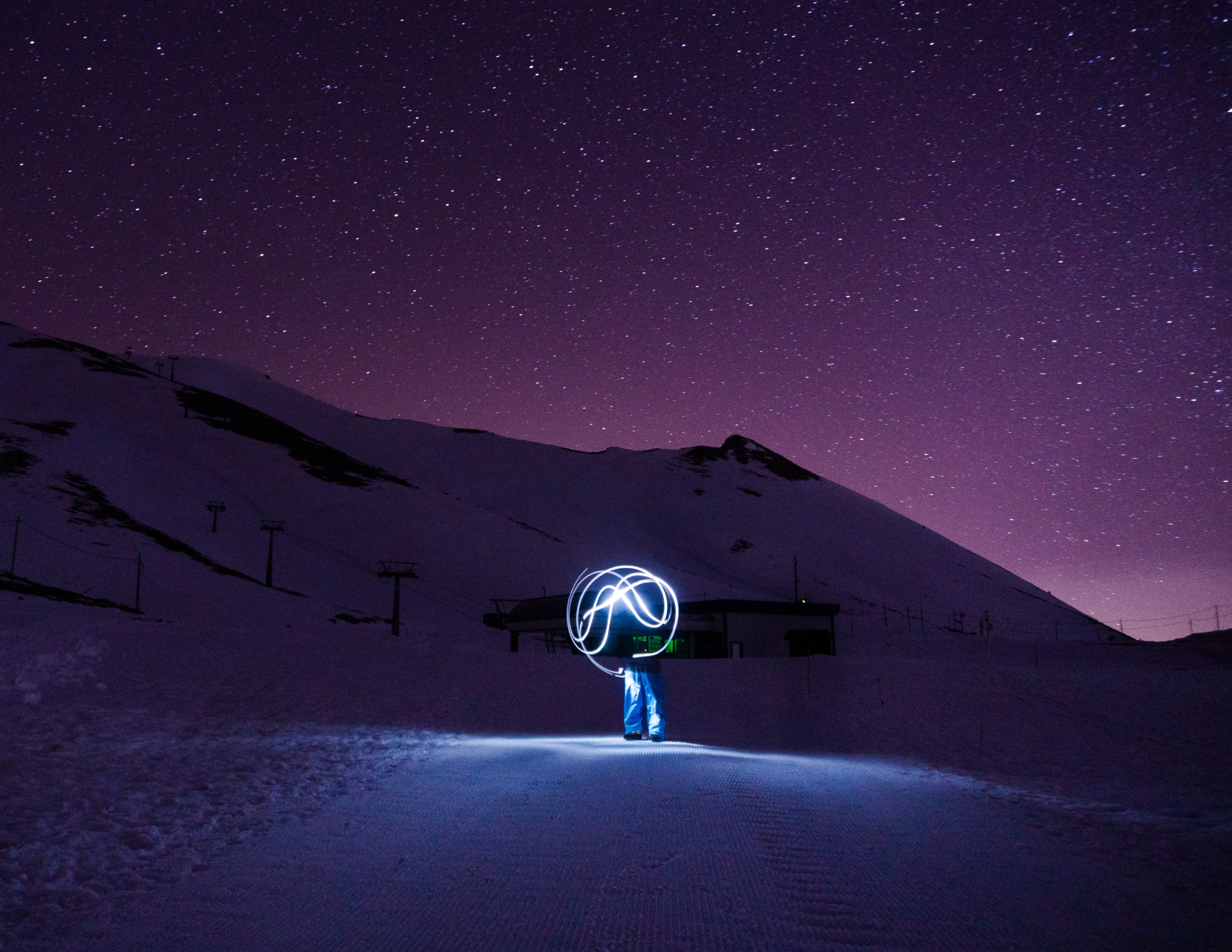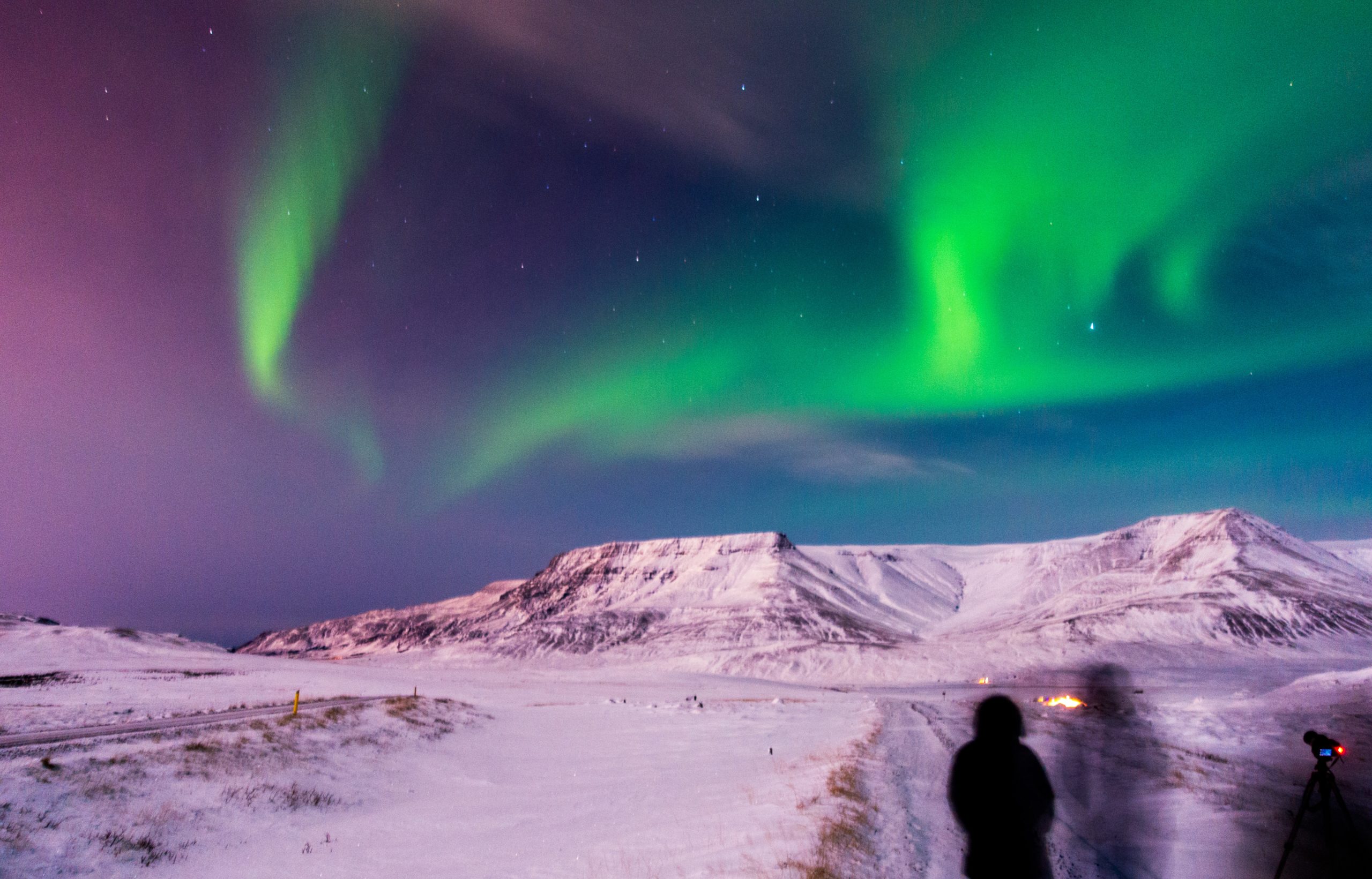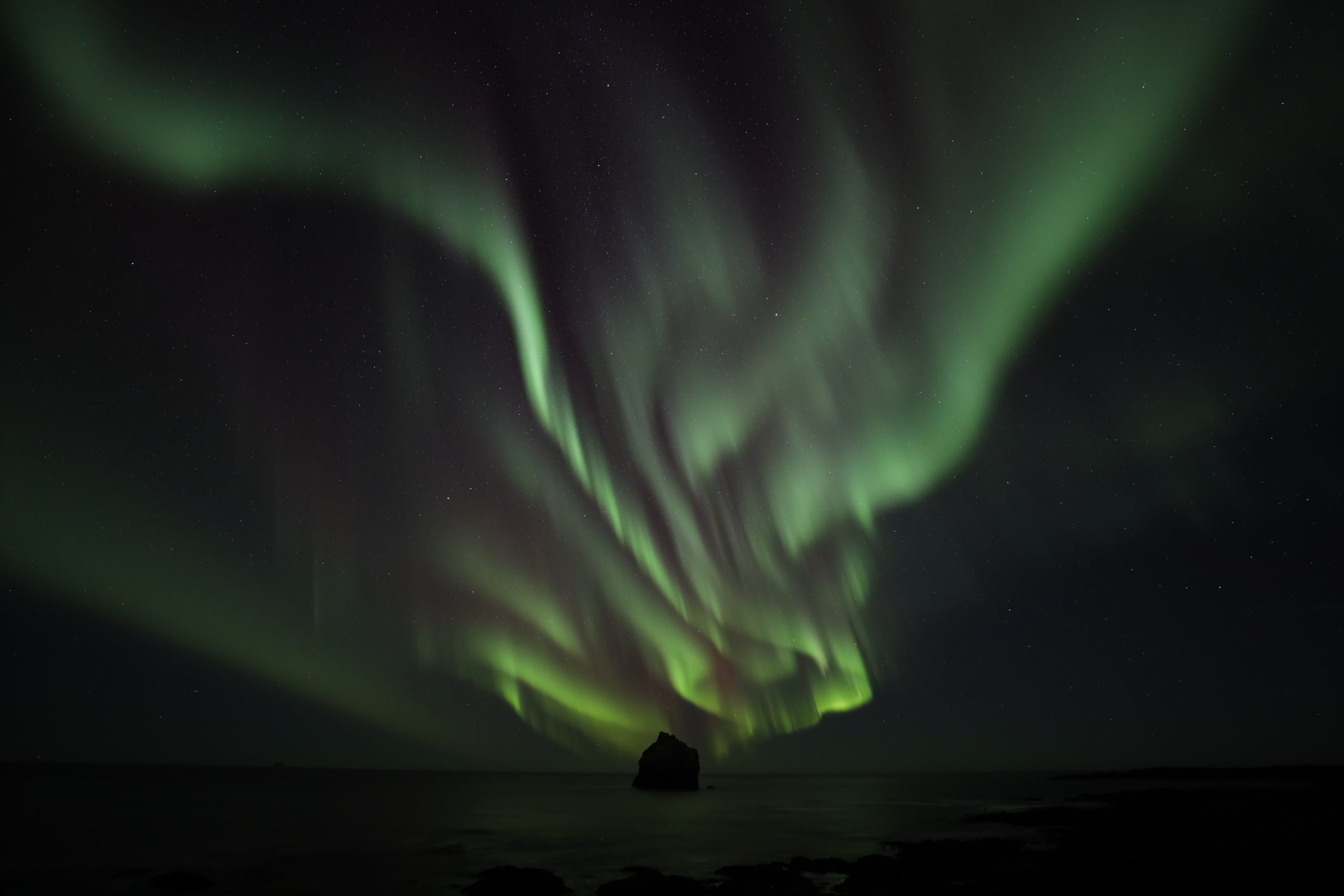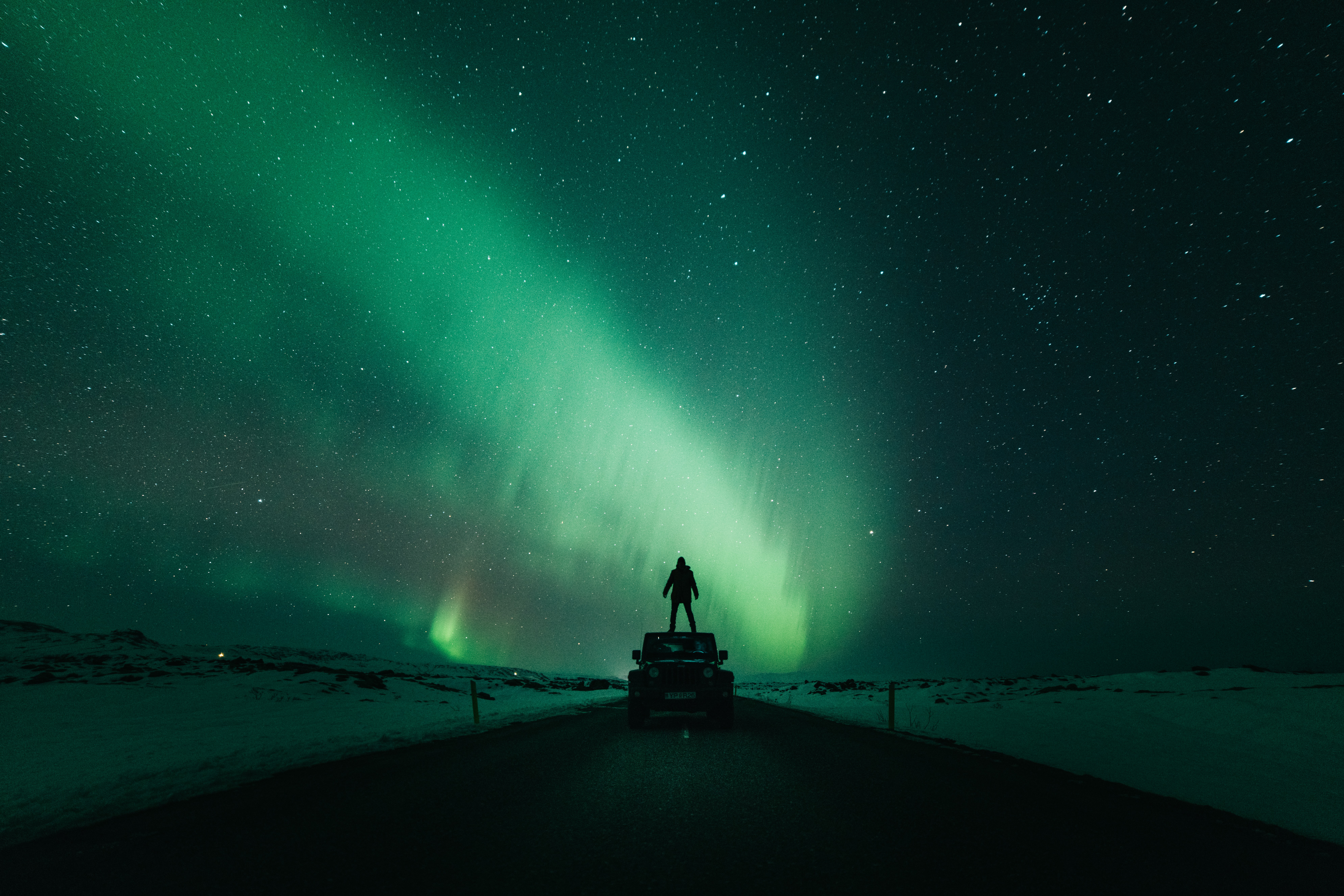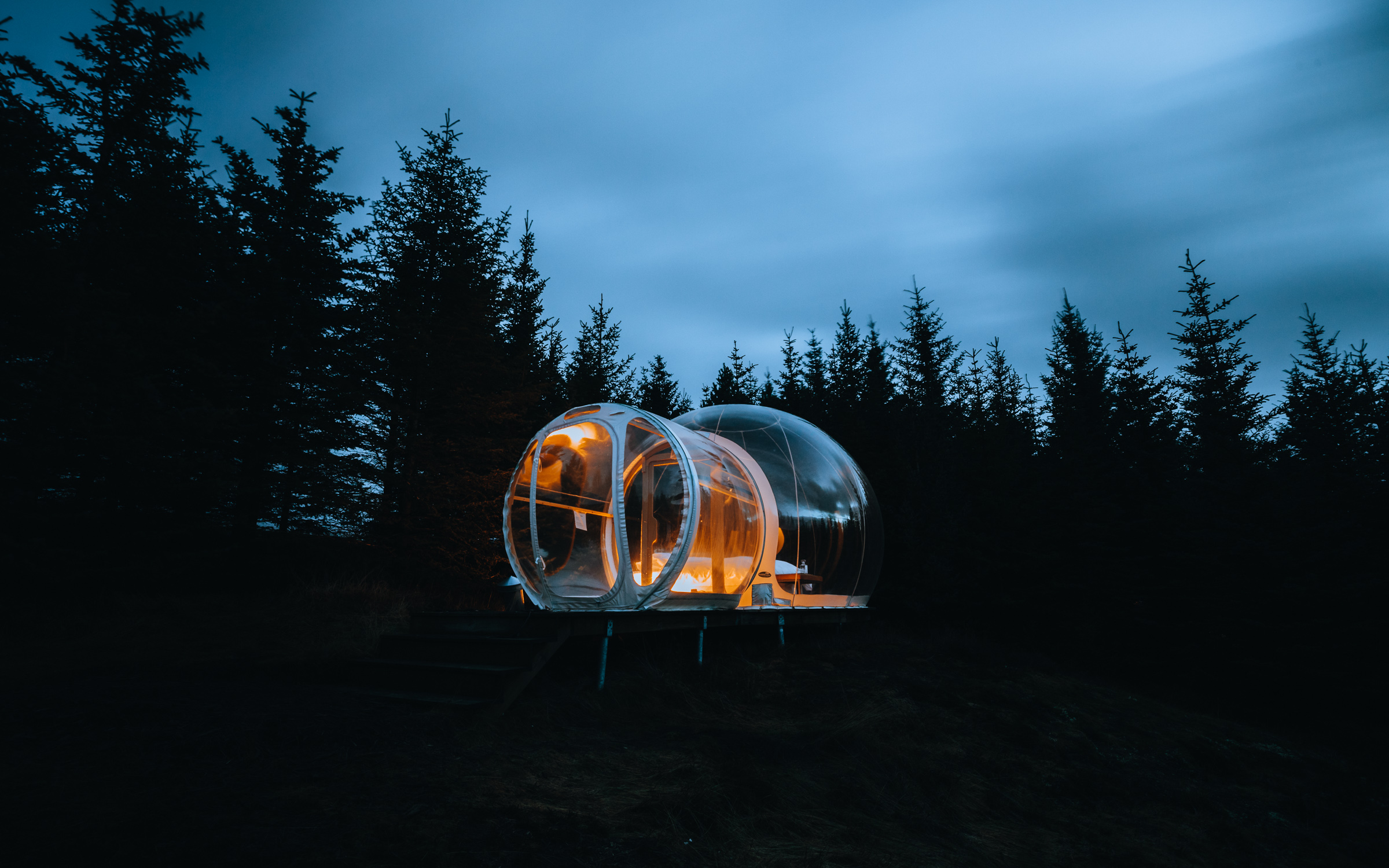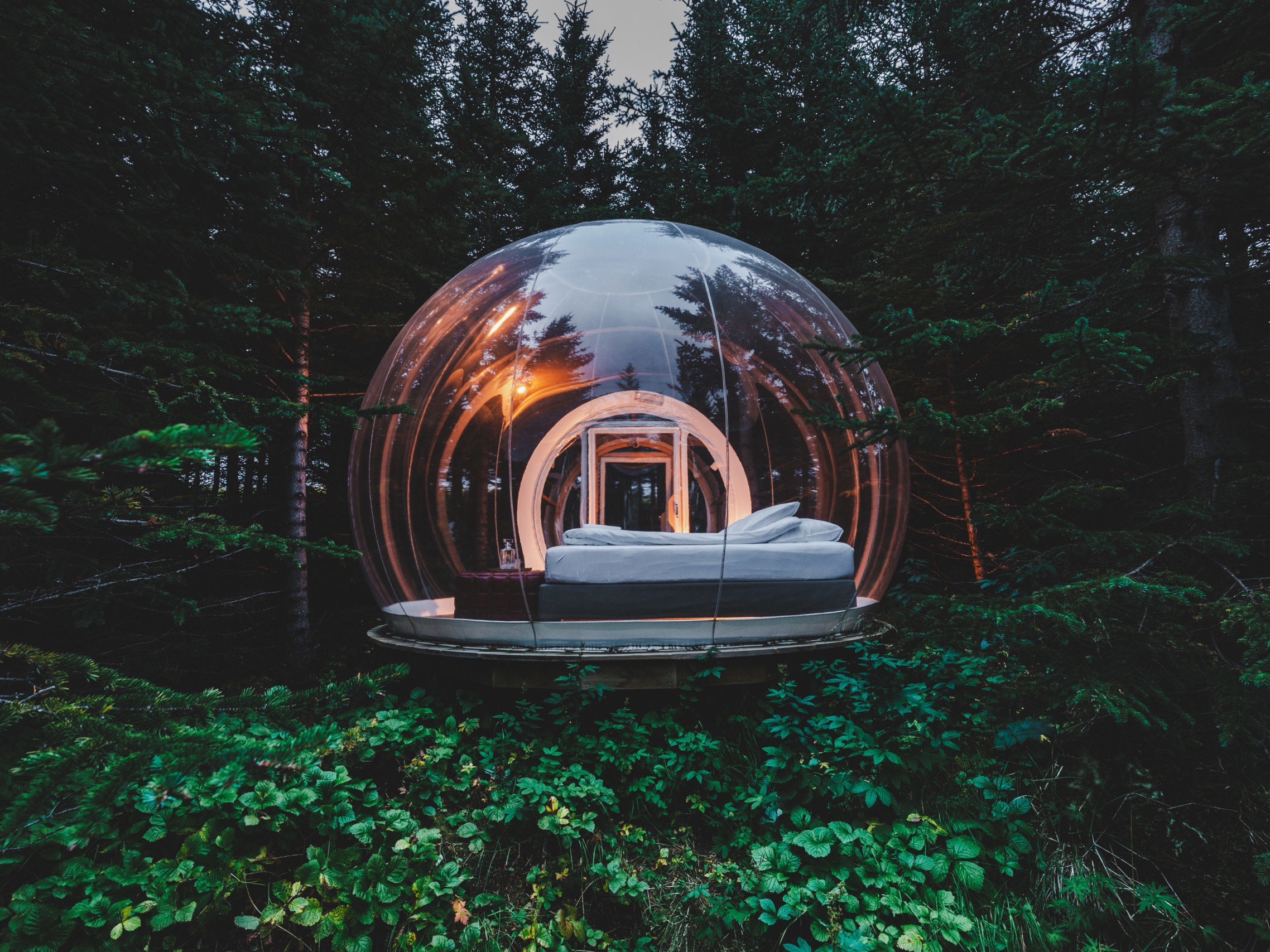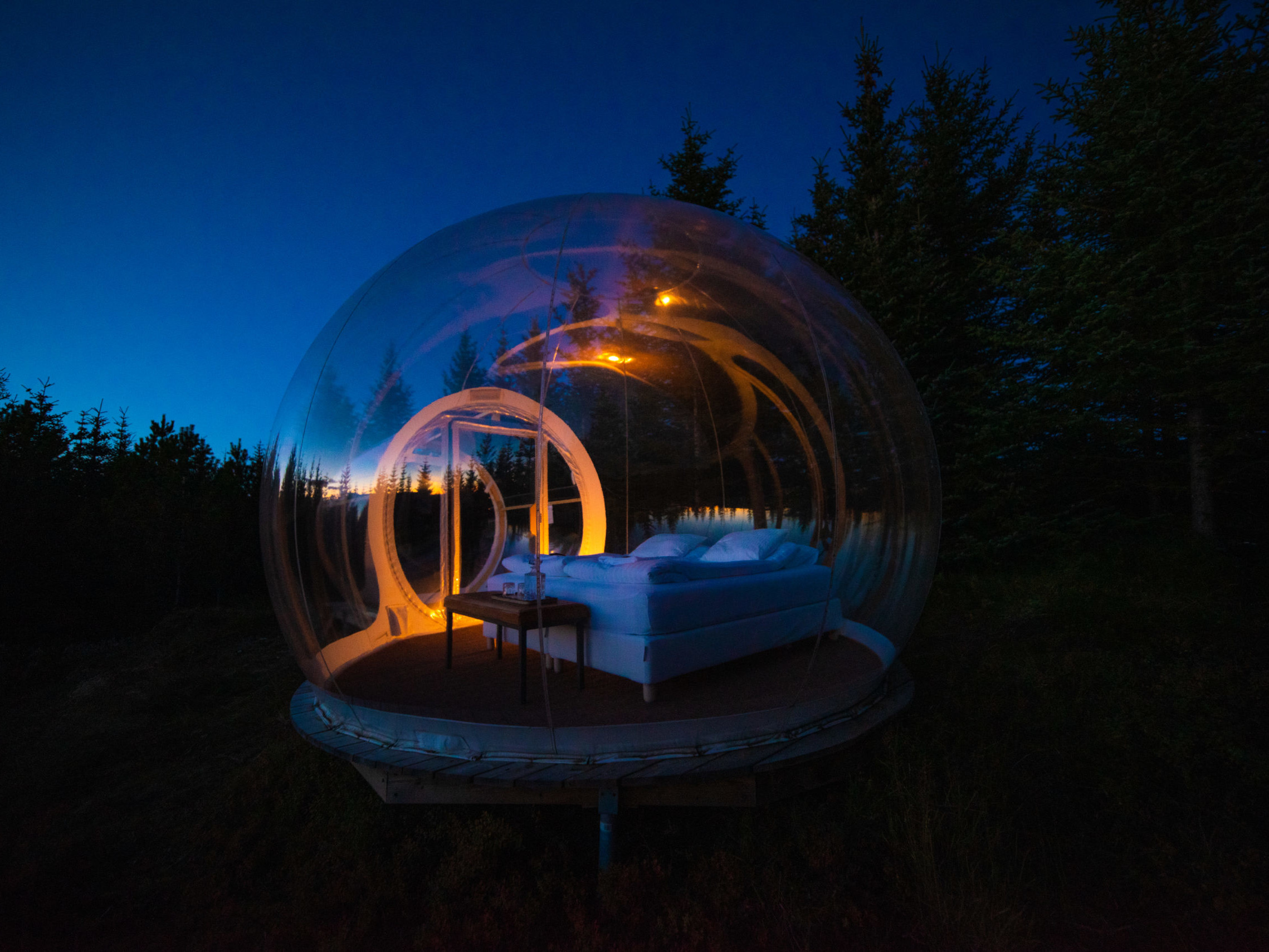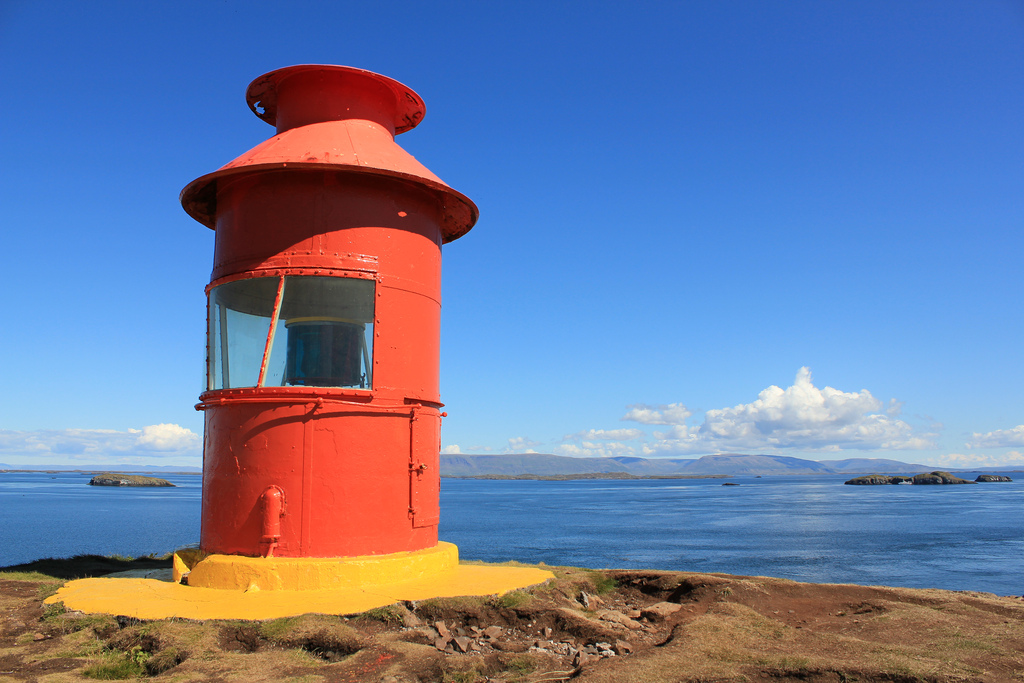Destination black sand beach Iceland: 10 of our favorite unforgettable beaches to watch the northern lights from
If you’re looking for some black sand to aurora watch from, look no further. With nearly 5000 km. of coastline, Iceland has you covered.
Picture it. Destination: black sand beach Iceland. Sparkling dark sand is the gift of many volcanic hotspots, but up here in the North, Iceland is among the few. Imagine the incredible darkness of sitting on the velvety black sand, while auroras dance in the black night.
Aside from the mystical moving lights, the only thing you can see are the stars and the white surf. It’s not a sight to miss, so we’ve gathered up a few of our favorites. Many things are otherworldly about black sand Iceland- but this is surely one of the most surreal.
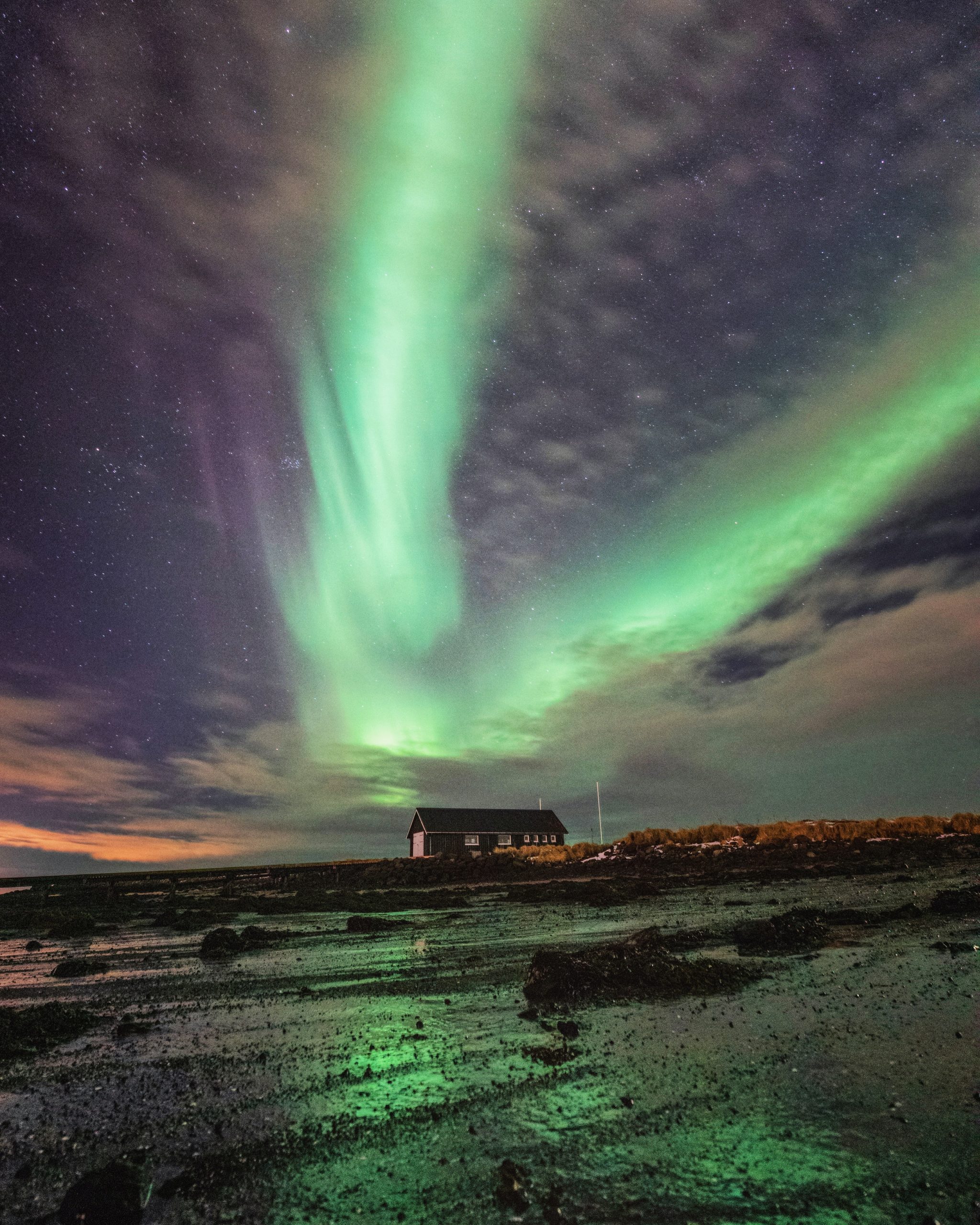
1. Seltjörn, Ægisíða, and Kirkjusandur: The City Coast
Despite Reykjavik’s cosmopolitan appearance, this is a seaside town. And with the sea, comes miles and miles of coastline. There are many places where you can’t access the water because of barriers, big rocks, or just a lack of places to stand, but these are not among them.
These three beaches represent only a fraction of the accessible coast, but they are gorgeous hideaways to stroll in the sunlight. (Or the moonlight, if you’re keeping an eye out and watching the tide.) If you’re enjoying a walk on the seafront paths, you can find Seltjörn and Kirkjusandur at either end of it.
Kirkjusandur is the closer beach to the city center, and like many city spots, depending on the tide it may or may not be there when you arrive! It is a good reminder that despite our concrete home, we are never too far from nature in black sand beach Iceland.
If you find yourself down by Grótta, you will have plenty of time to enjoy Seltjörn. The home of one of Reykjavik’s most notable lighthouses, a nature reserve, and a beloved aurora watching spot- this entire area feels lightyears removed from the hustle and bustle of the city just behind it.
And if you find yourself in Reykjavik’s cozy Vesturbær neighborhood, you can enjoy a walk down Ægisíða. An area of trails and recreation, Ægisíða is a tiny stretch of shore dotted with fisherman’s huts and reminders of a time when a day’s work was a good catch and a small boat.
On a clear day, you can see all the way to Reykjanes from this spot. There are many tiny beaches in the city, some of them with no name at all.
They are all different windows into what life used to be like, with different gifts like sea glass, urchin shells, and long strands of luminous seaweed decorating their shores. And if you’re careful, each one of them is a glorious place to watch for northern lights.
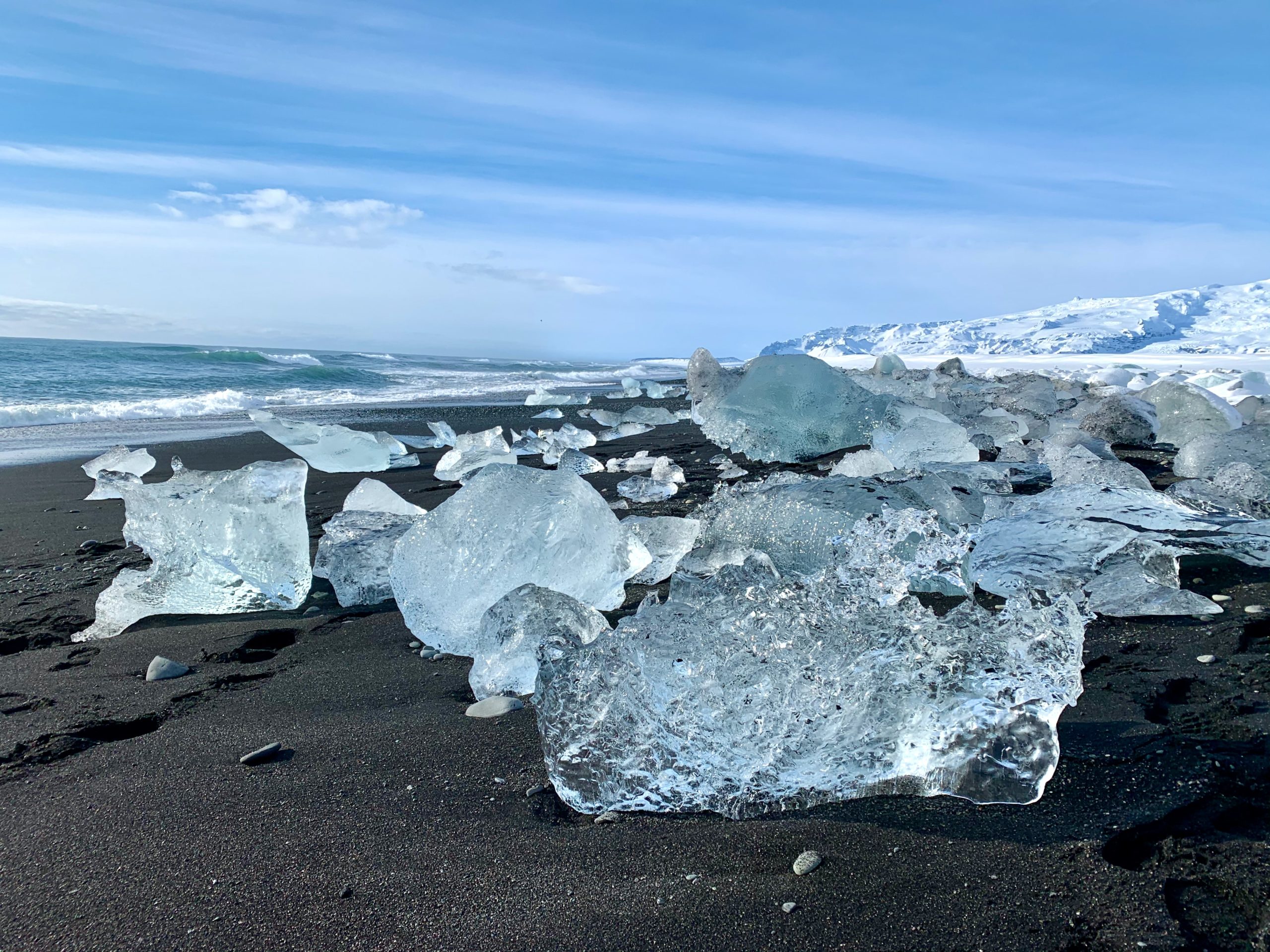
2. The world-famous Diamond Beach, also known as Breiðamerkursandur
When reading about black sand beach Iceland, it’s hard to miss the glory of Diamond Beach. A small piece of the larger Breiðamerkursandur coastline, this is a popular spot. Though it’s a bit of a drive from the capital this is the home of the Jökulsárlón glacial lagoon, and it is from there that the diamonds are provided.
This area is fed by the glacier Vatnajökull, which is so big that pieces of it have their own names. This part of the glacier is called Breiðamerkurjökull. As pieces of ice calve off of the glacier, they fall into the Jökulsárlón lagoon.
From here they travel out to sea, sometimes finding themselves festooned upon the beach there. These enormous chunks of ice bob up and down in the waves, heavy when they’re on the shore, but light as air when they’re being thrown about by the waves.
If you’re visiting black sand beach Iceland- you simply cannot miss a night spent among these titans. Black sand, chunks of ice as big as a man, and the lights coming down to dance on the lagoon.
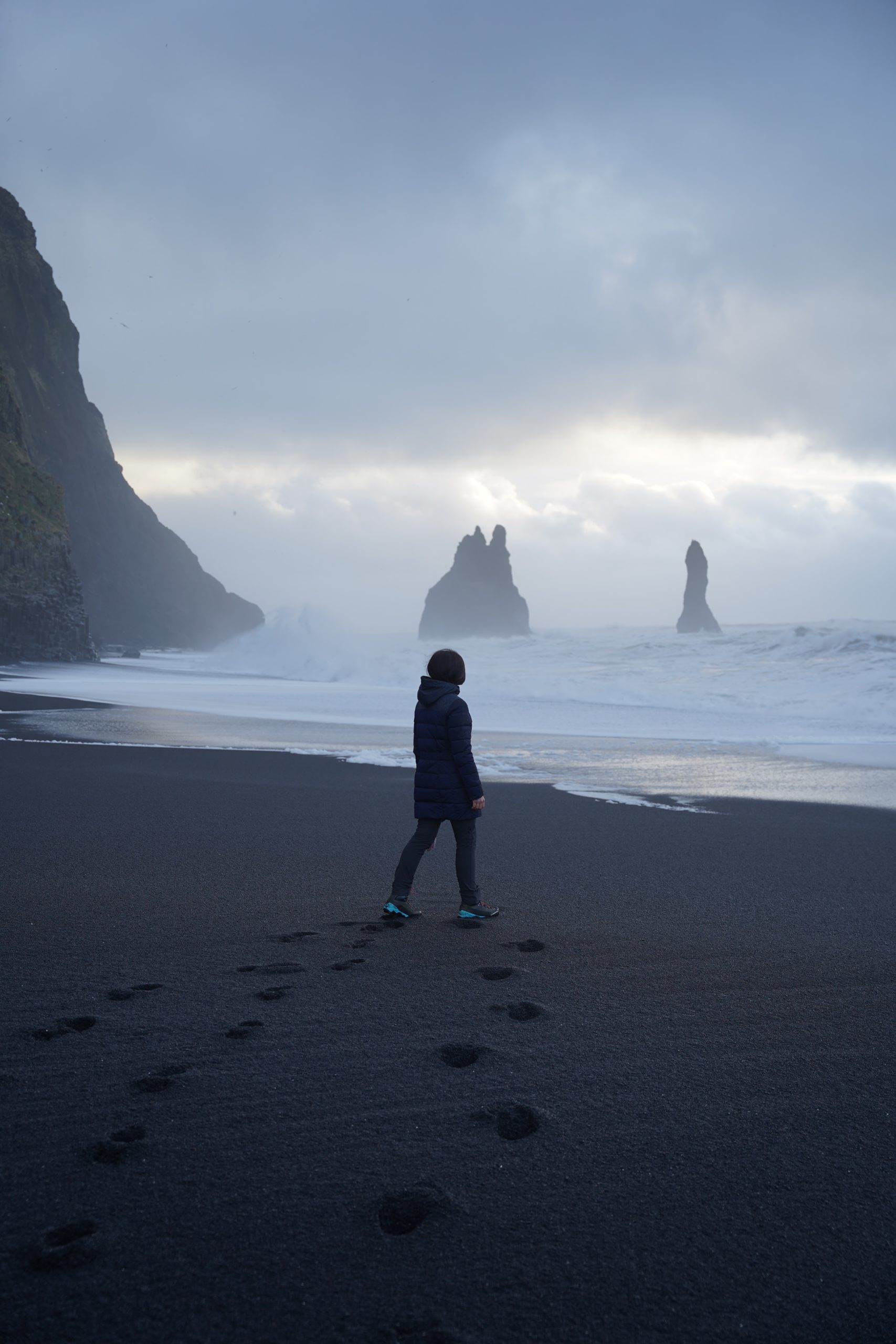
3. Reynisfjara: The postcard beach
A trip to black sand beach Iceland can’t happen without a stop on Reynisfjara. Charting as one of Iceland’s most dangerous beaches due to strong currents and sneaker waves, this beach in front of Vík has been featured in countless films and television shows.
Instantly recognized by its huge basalt caves, rock stacks, and the Dyrhólaey promontory. Iceland’s south coast is one long stretch of beaches and sand deserts. Many of these formed because of powerful volcanic eruptions and the glacial outburst floods (or jökulhlaup) that they created.
Reynisfjara is a great spot for grabbing a bite to eat or staying the night. If you plan to aurora hunt from here, make sure to keep a safe distance from the water. This beach is not staffed and getting caught in a sneaker wave can be deadly.
Fortunately, the town is right up on the beach, and you can watch the aurora from a cozy little bench among the dunes, while you listen to the crashing of the big waves on one of the most famous spots in all of black sand beach Iceland.
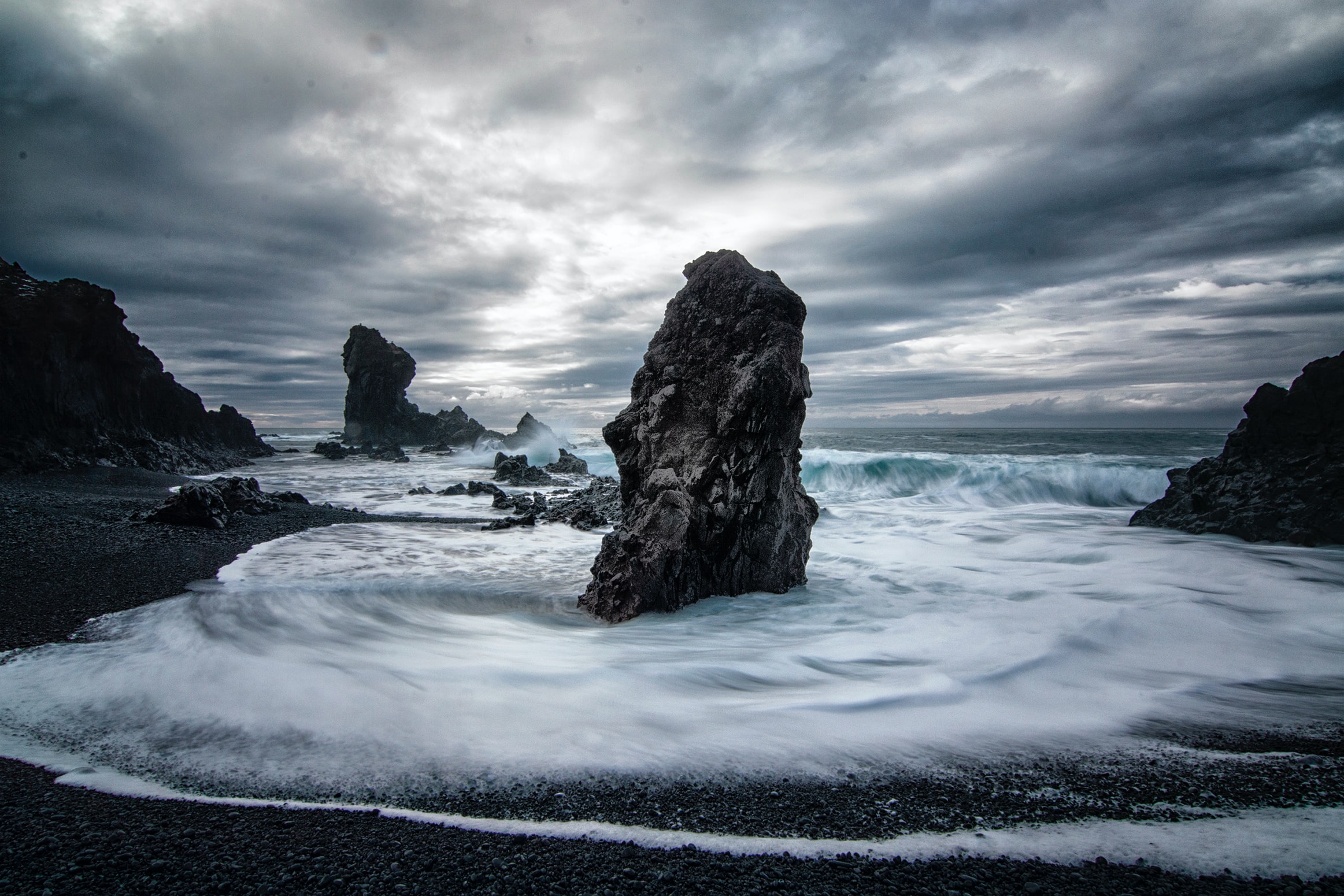
4. Djúpalónssandur at the edge of the world
If you find yourself in Snæfellsnes at the foot of another famous glacier, you must certainly make a stop at Djúpalónssandur. This is a place of many curiosities and treasures in black sand beach Iceland, so tread carefully here.
Located at the edge of the Snæfellsnes peninsula, you’ll find that the sand is hidden under a layer of polished black pebbled. These are Djúpalónsperlur, or the “Pearls of Djúpalón”.
They are protected, and so are the twisted pieces of metal that rest on top of them. These are pieces of the British trawler the Epine GY7, and they rest on this beach in memory of the men that lost their lives in a blizzard there.
This is only one of many stories on this beach, as it used to be an epicenter of activity when fishing was a smaller industry in the hands of the people.
Nearly all of the rock formations, springs, and sea stacks have names and stories, and tales of being elven structures or frozen trolls who saw the daylight. You could spend weeks in these coves learning the history of each mark in the land.
If you’re a history buff or a story lover in black sand beach Iceland, make sure to grab some literature about this area, and leave nothing but footprints in the sand behind you. This is a hallowed place of memories gone by, and a protected zone.
Not to mention, a remote area with similar wave patterns to Reynisfjara. Enjoy the aurora from a safe distance, and be respectful of the different souls that may be watching with you.
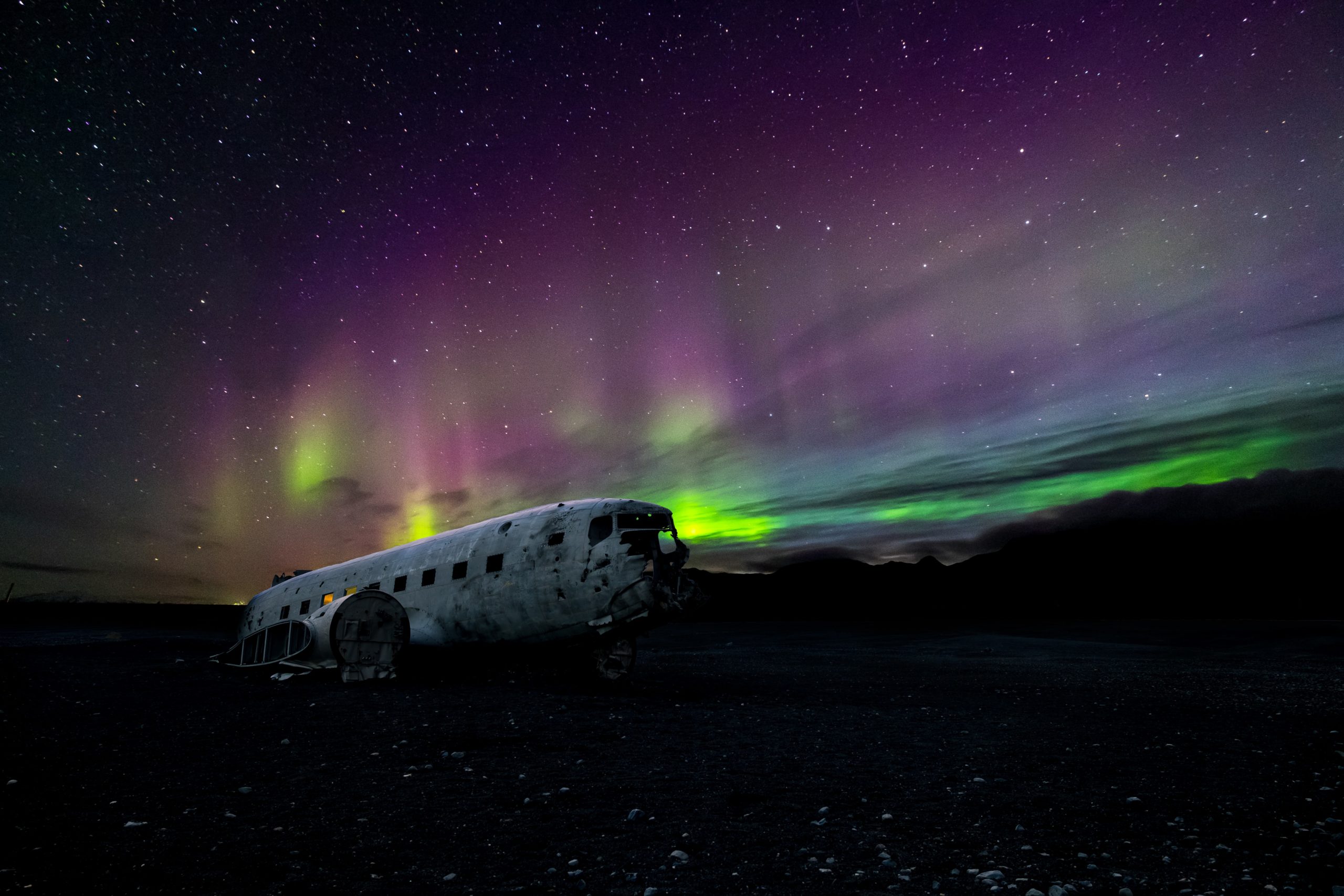
5. Solheimasandur and the plane wreck
There are a lot of beaches in black sand beach Iceland, but this is a special one. A smaller part of the big stretch of the long southern coast, Solheimasandur is another creation of volcanic eruptions creating glacial outburst floods, and the sand flats of this area are vast.
Because of its volcanic history, Solheimasandur is not home to any villages or large settlements. It is, however, home to the US Navy DC-3 plane wreck, a landmark sought by photographers and curiosity seekers alike.
In 1973 due to a fueling problem, this plane crash-landed here on the sand. All parties involved survived, and walked away from this impromptu landing in one piece, so it is not truly a memorial piece.
Getting to the wreck takes a bit of a walk, but it’s worth it to gaze upon this strange visitor among the sands. This is a truly desolate place, so take caution if you are visiting here in the nighttime or the winter season.
It is good to check ahead on the weather, as the sand wastes are disorienting and visitors in the past have gotten lost here. With little to nowhere to hide, it is possible to risk exposure and it is unlikely that you will come across much help.
Though this is a popular northern light photo opportunity, look out for your safety first. Those airmen walked away from this wreck, and in order to enjoy more of black sand beach Iceland, so must you.
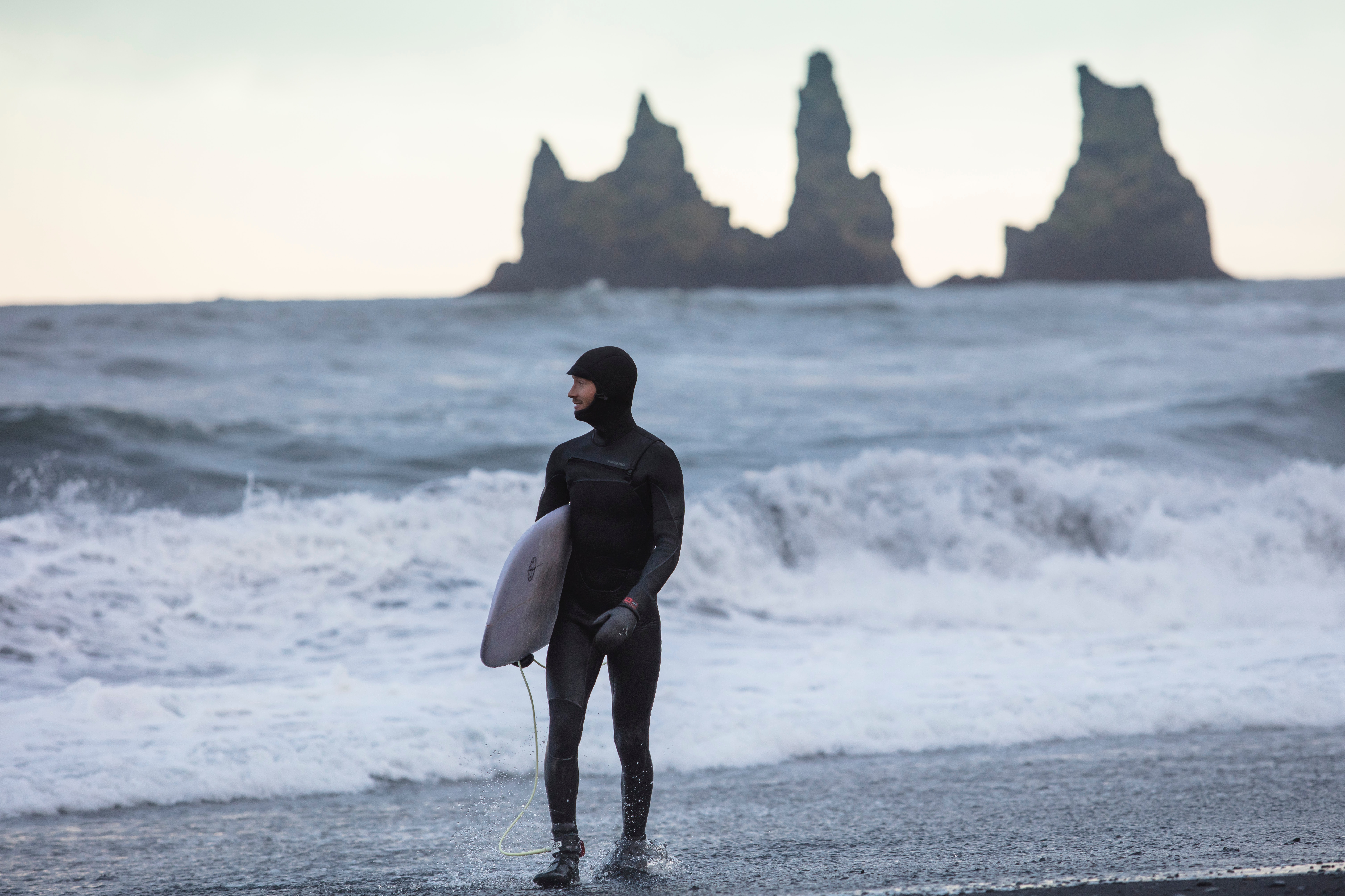
6. Catch a wave on Thorli Beach
The Reykjanes peninsula is known for its big, consistent waves, and believe it or not, is a long time favorite of arctic surfers. Thorli is a fairly advanced spot near the town of Þorlákshöfn (Thorlákshöfn) and it sports an unusual mix of both black and yellow sands.
Beloved by local and visiting surfers, Thorli is a long crescent of sand at the heart of Iceland’s surfing community. And though there are different waves to catch throughout the year, the high point for big surf is right smack in the middle of aurora season.
If you’re a seasoned surfer, this is the beach for you. (And if you’re an aurora hunter- the best of both worlds!)
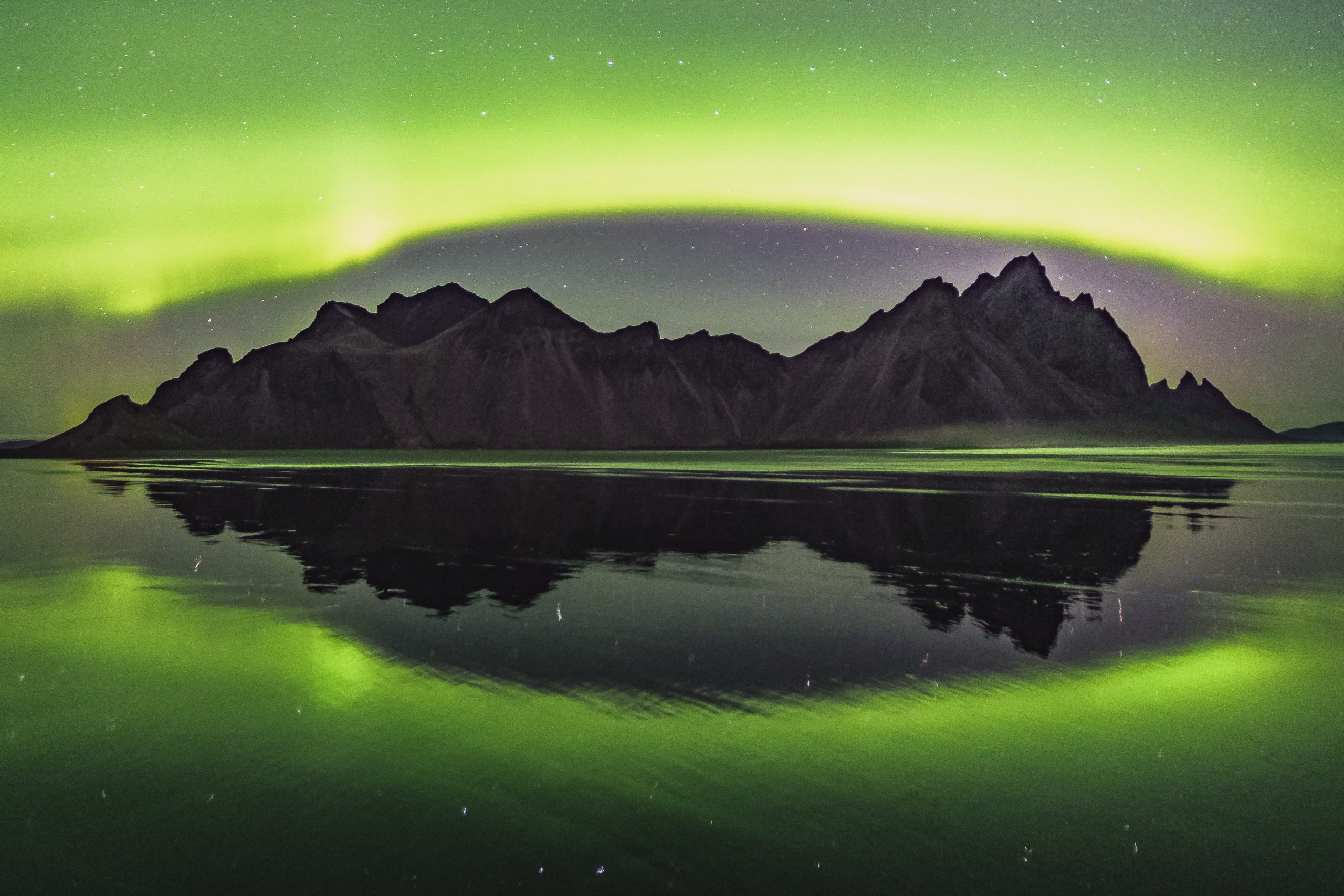
7. Stokksnes the Mirror Beach
Stokksnes is a photographer’s dream. At the eastern edge of Iceland lies the long flat shore of Stokksnes, and the jagged dragon’s-teeth peaks of Vestrahorn. Close to the town of Höfn, this area either welcomes you back to the sand deserts of the south or announces your arrival to the dramatic mountains of the east.
But before you go further either way, you should take a moment to stop at Stokksnes. This beach is wide and flat, which causes the tide to leave water behind as it recedes. This creates a shallow and incredibly reflective surface, allowing incredible reflection pictures of the mountain Vestrahorn, the surreal black dunes, and potentially, the colorful, dancing aurora.
There is a small fee to visit the beach, as it is privately owned land- but it is more than worth it to help preserve the majesty of this place.
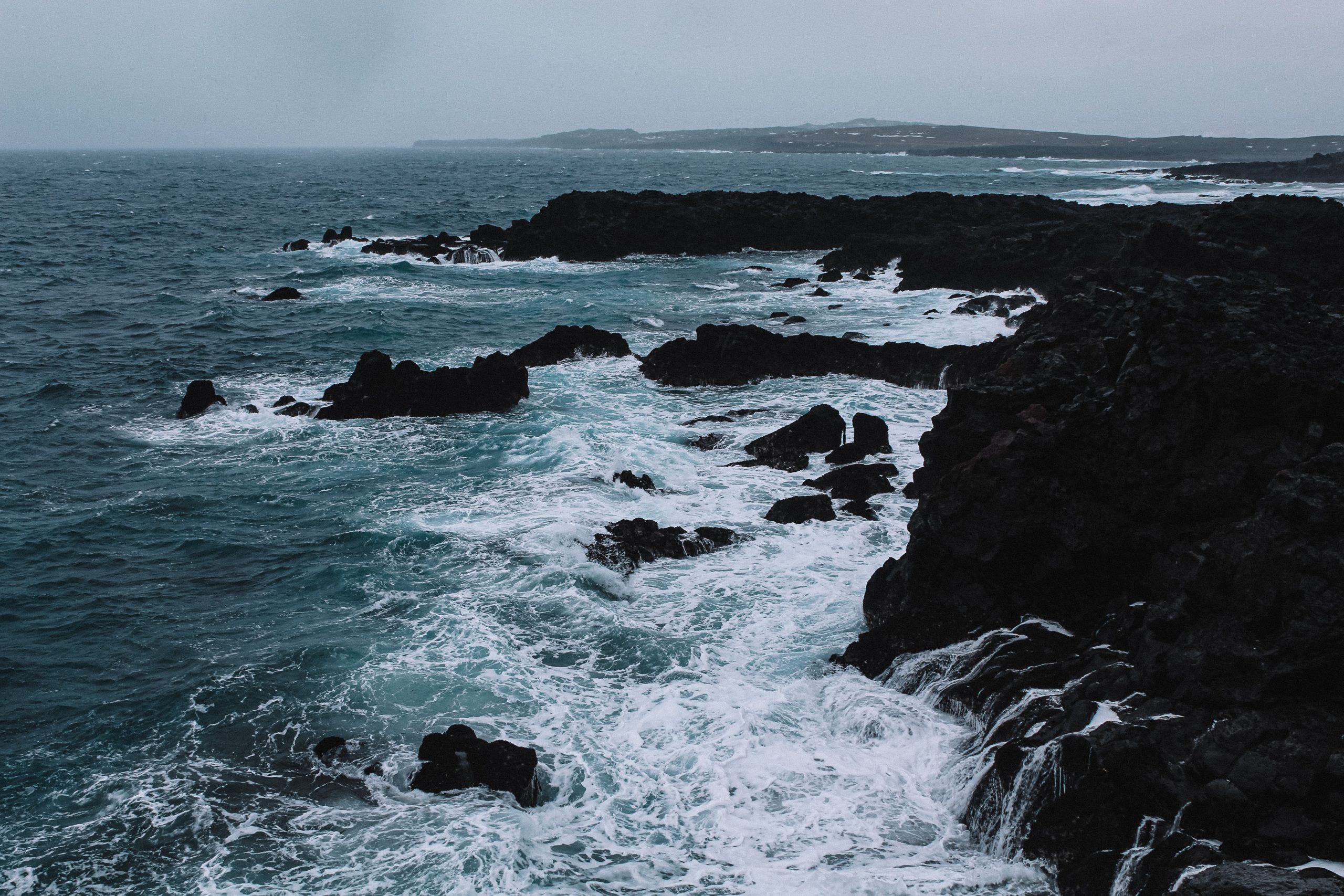
8. Everybody’s gone surfin’...In Sandvík and Grindavík
For those who aren’t ready to catch a big Thorli wave, there is the slightly more forgiving beach break of Sandvík, where many locals catch their first waves. Most of Iceland’s surfing beaches are reef or point breaks, which means you’ll be dodging a lot of sharp volcanic rocks, and maybe some sea urchins.
For those who are only here to watch auroras, you are in great company. The peninsula of Reykjanes boasts long coasts of lonely beaches, and many friendly seaside towns to pick up snacks in.
(Including Grindavík, one of Iceland’s happiest towns! And the nearby neighbor of our recent fissure volcano, Fagradalsfjall.) In black sand beach Iceland, you can’t go wrong with cruising quiet Reykjanes.
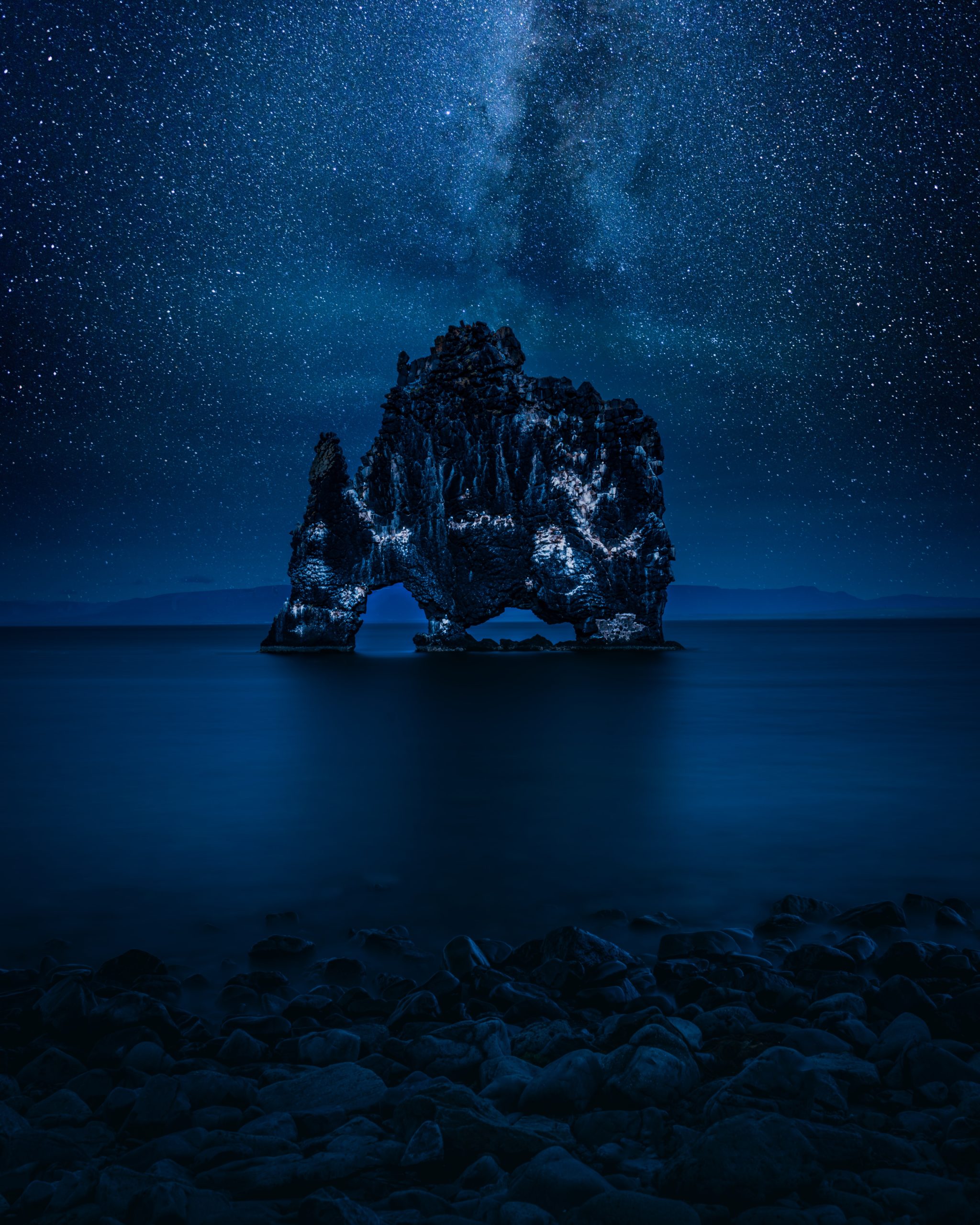
9. The Seal Circle at Vatnsnes
You’ve heard of the Golden Circle, and even the Diamond Circle- but what about the Seal Circle? The 711 road around the peninsula of Vatnsnes is a great spot for black sand, seals, and auroras. If you’re lucky, you can spot harbour seals, grey seals, harp seals, bearded seals, hooded seals, ringed seals, and maybe even a rare walrus or two!
The Illugastaðir beaches on the western side of the peninsula have been a notable home for them for many years, but these creatures can be spied year round throughout the peninsula. It is even possible to see them on the eastern side basking near famous Hvítserkur, a popular aurora photo spot.
You can stop in Hvammstangi to visit the Icelandic Seal Center to learn more about these curious residents, but don’t forget to keep your eyes on the sky. This is a popular aurora spot with low light pollution and many beloved foreground landmarks for great aurora shots.
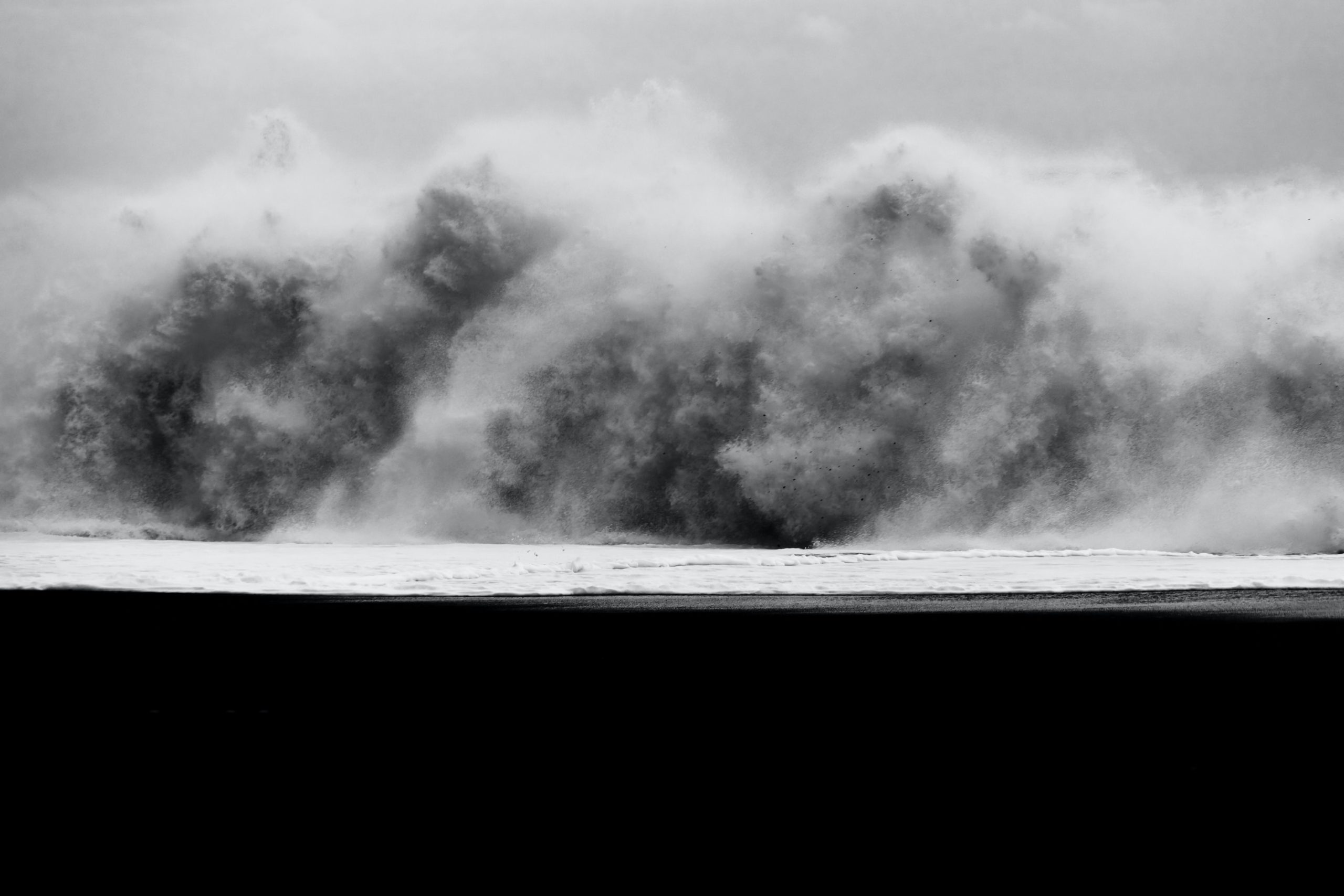
10. Ólafsfjörður on the Arctic Coast Way
North Iceland is a magical place punctuated by a more extreme climate, big mountains, and beautiful small towns throughout the fjords. There is a lot of history and tradition here, and even though it’s not by much- you are that much closer to the pole when you visit.
Ólafsfjörður is located in between the shark fishing village of Siglufjörður in the north, and Dalvík just below- home to world class skiing and “The Great Fish Day” festival (Fiskidagurinn mikli). This is another great peninsula to explore, and you guessed it, every single one of these towns boasts its own piece of black sand beach Iceland.
These are long, picturesque coastlines framed in by tall mountains and sweeping fjord views out to sea. They have long histories and unique cultures, even from village to village. And just like their skiing, when it comes to auroras- they are unparalleled.
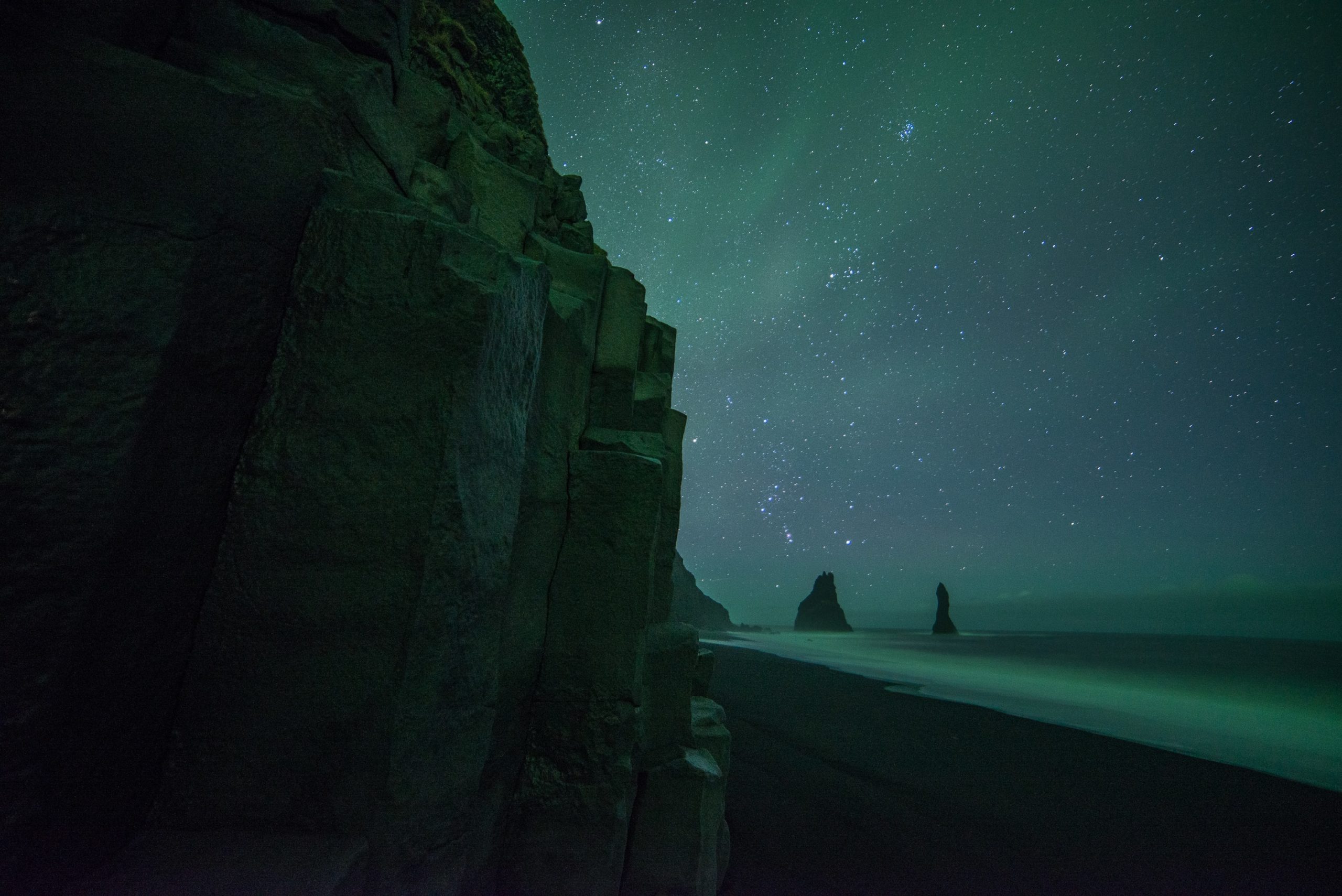
Northern Lights Painting...and 5 other fun things to do when the lights aren’t out
We spend a lot of time looking for auroras, but what do we do when we can’t find one? Fellow hunters, meet northern lights painting.
Northern lights painting may not be the first thing you think of when you pack your bags for a hunt. (And it might mean something different to different people! Don’t worry, we’ll come back later for the crafters.)
But if we’ve learned anything at all from years of chasing the aurora, it’s how to be prepared for any and all kinds of nights. Whether there’s a show to see, or not.
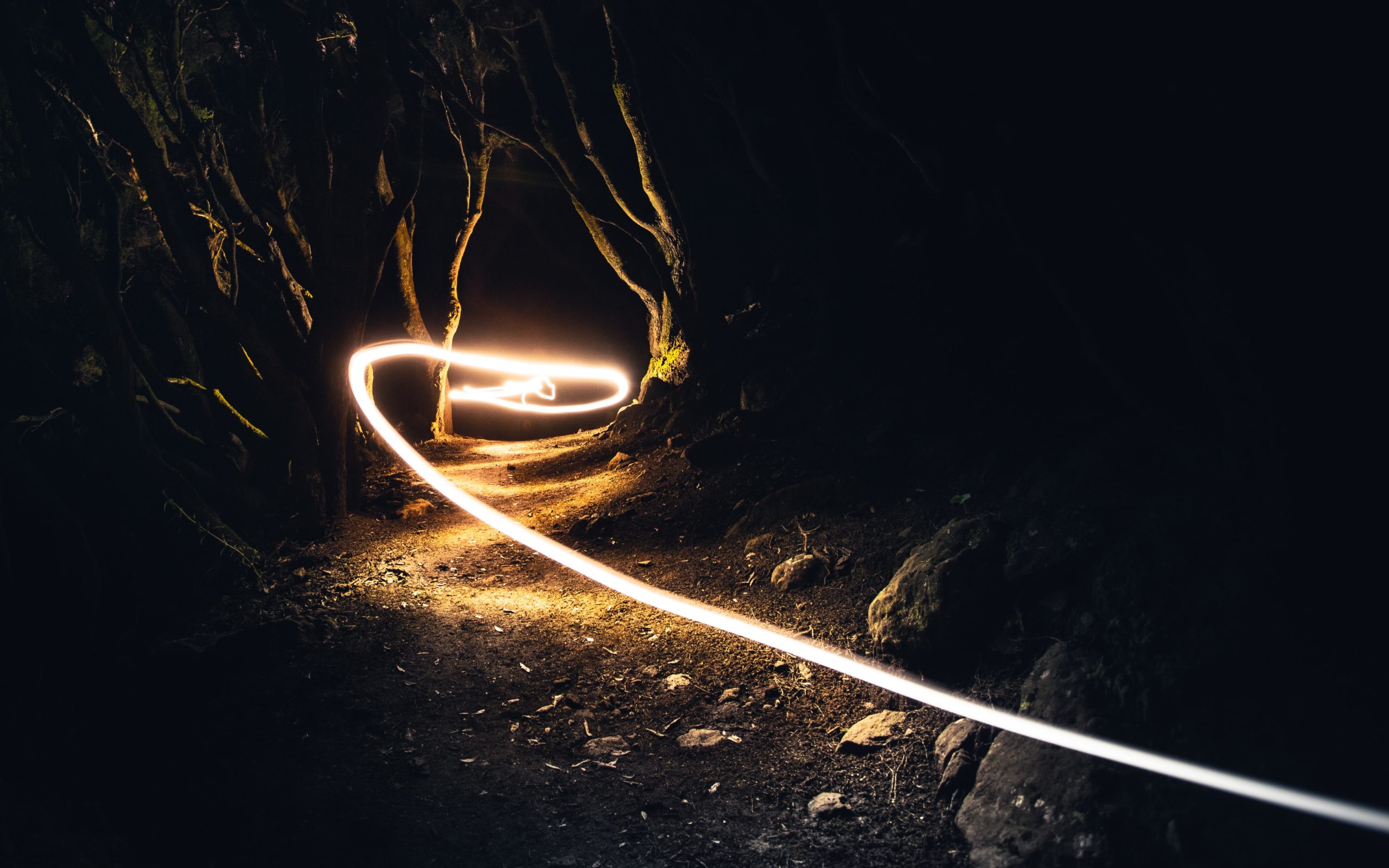
1. Light painting, or, Northern Lights Painting
Known as “Light Painting” or “experimental long exposure photography”, this is the ultimate activity when you’re waiting on the lights to show up. It may not be auroras, but it’s a fan favorite for a dark night with no show.
Popular in its own right, light painting or, northern lights painting, as we like to call it, is an activity that requires a camera. All you need to do this is a DSLR camera or a camera that can accommodate a long shutter setting, a tripod or flat surface, and a light.
This is an experimental process for a reason, and there is no wrong way to do your own northern lights painting. (Well, as long as you’ve got the flat surface and the long shutter. If your camera is moving you’ll have a hard time capturing an image, and if you can’t access a longer shutter, it will be harder to create these effects.)
That being said, this is an activity for people of all levels of artistic skill. The photos you make will look differently depending on where you are, what settings you try, and what tools you use to create light.
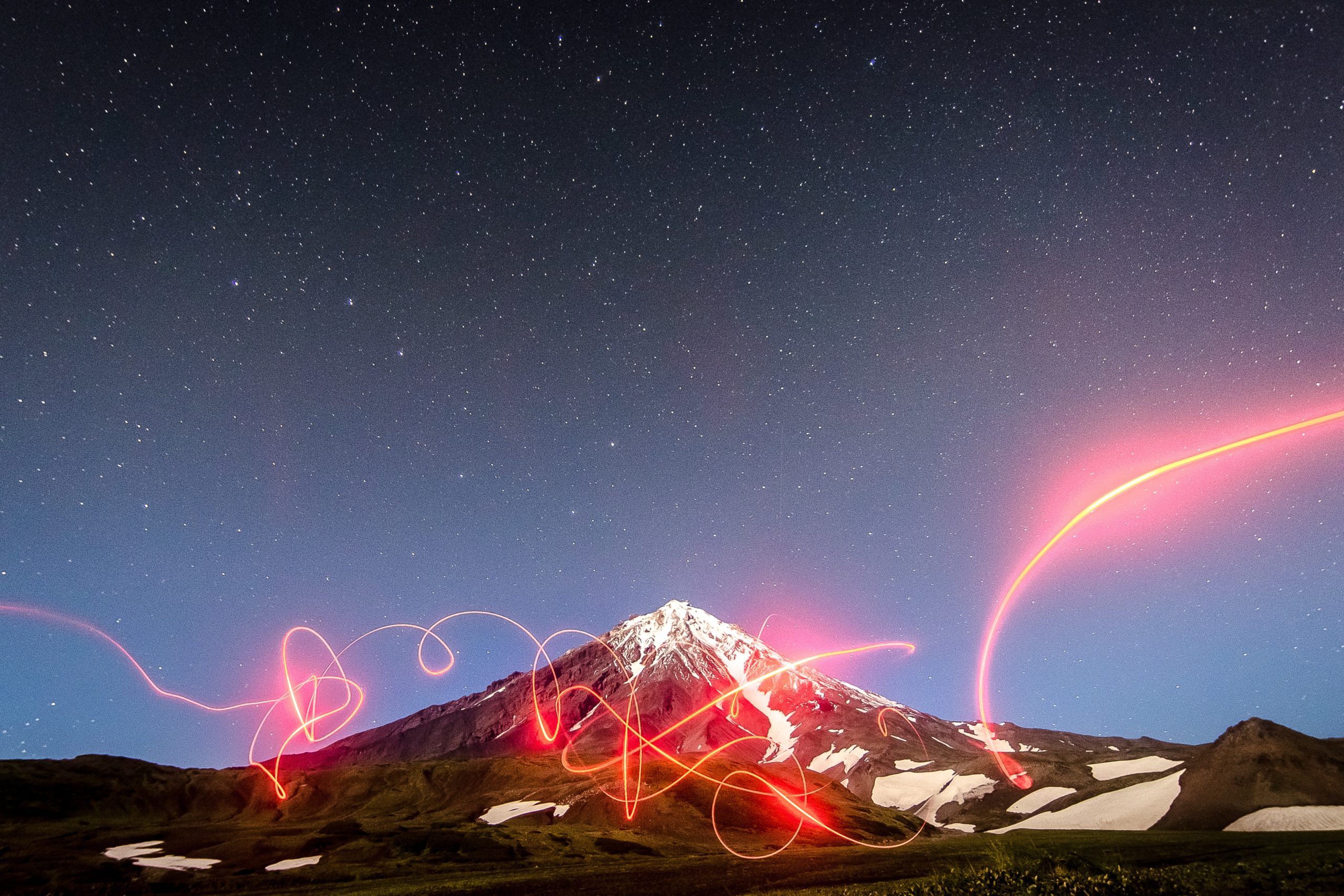
You can even do this inside! (Though, we find ourselves doing this outside most of the time, since we’re always waiting on the aurora to show up.)
Once you’ve got your tripod and your camera set up, you’ll be using a lot of the same settings you’d use for a northern lights shot. This means low aperture, and typically a higher ISO than you’d use for a daylight photo.
(Depending on the effect you’re going for, this could be an ISO as low as 400, and as high as 3600- but don’t take our word for it! This is art, so you’ll have to try different combinations out to see what look works best for you.)
And the key of course, is the extended shutter. Most cameras can accommodate up to 30 seconds of shutter, which is plenty for time for you to create a compelling shape or image. If you find that this is too bright, remember the golden rule of northern lights painting, and adjust till you get the look you want.
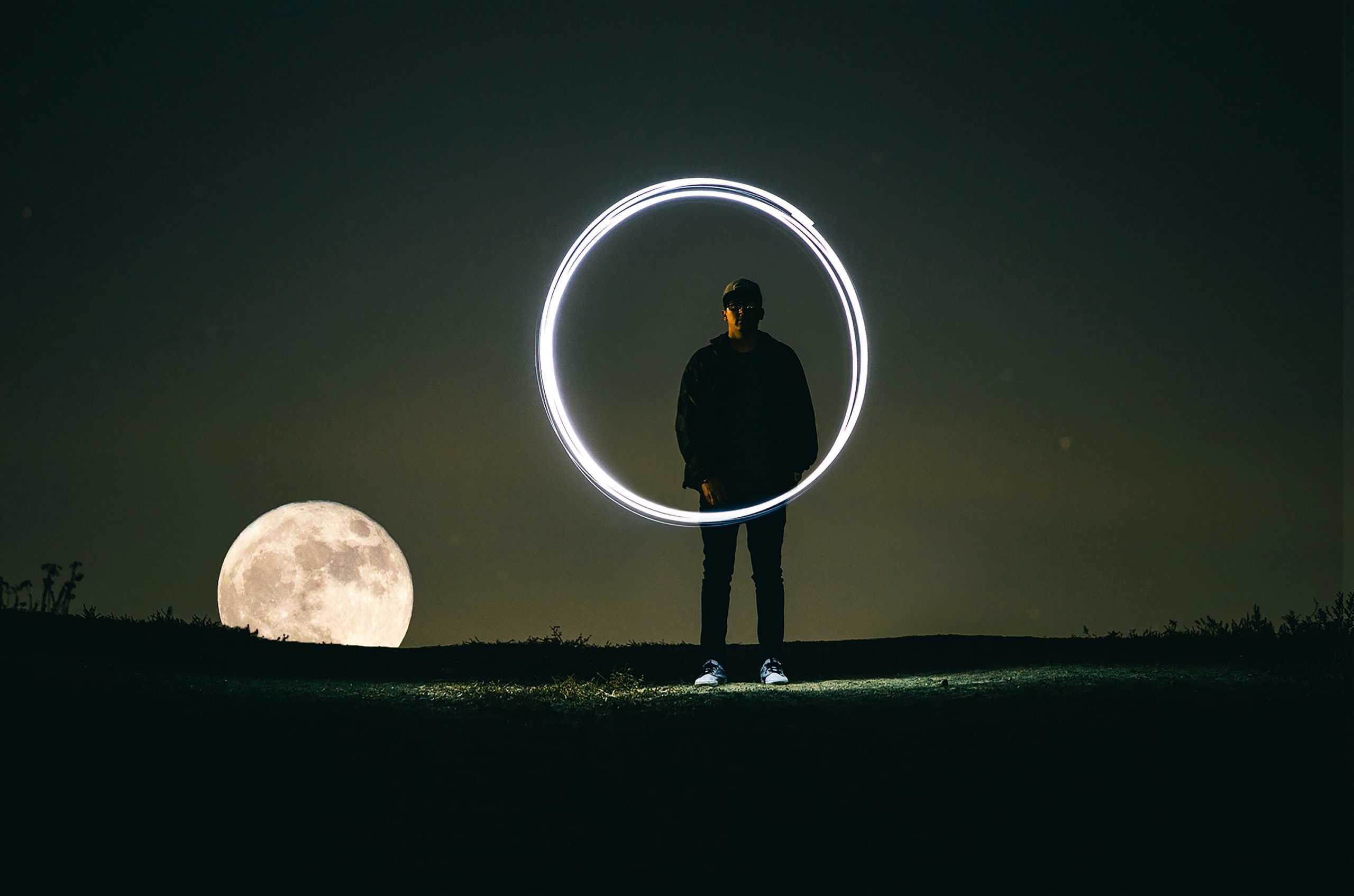
These photos are created by manipulating lit items in the camera’s field of vision. This means you can use fairy lights, mobile phones, torches, sparklers, LED tools, and so on. You can write messages, create three-dimensional patterns, draw shapes- the opportunities are endless. You can make your own aurora! (It is northern lights painting, after all..)
This is a great activity whether or not the lights are out, and we suggest checking out the work of other light painters. There are a lot of opinions on the best types of light, how to diffuse light with tracing paper, and how to color white light with plastics.
There are also countless tutorials on how to make the tools themselves, in order to achieve certain looks. (We are big fans of the long piece of wood with fairy lights taped to it.) If you choose to go the sparkler route, be careful!
Activities like this can spark dry grasses and create wildfires. Make sure you are operating in a damp area, and practicing fire safety while you work. No photo is worth an accidental blaze.
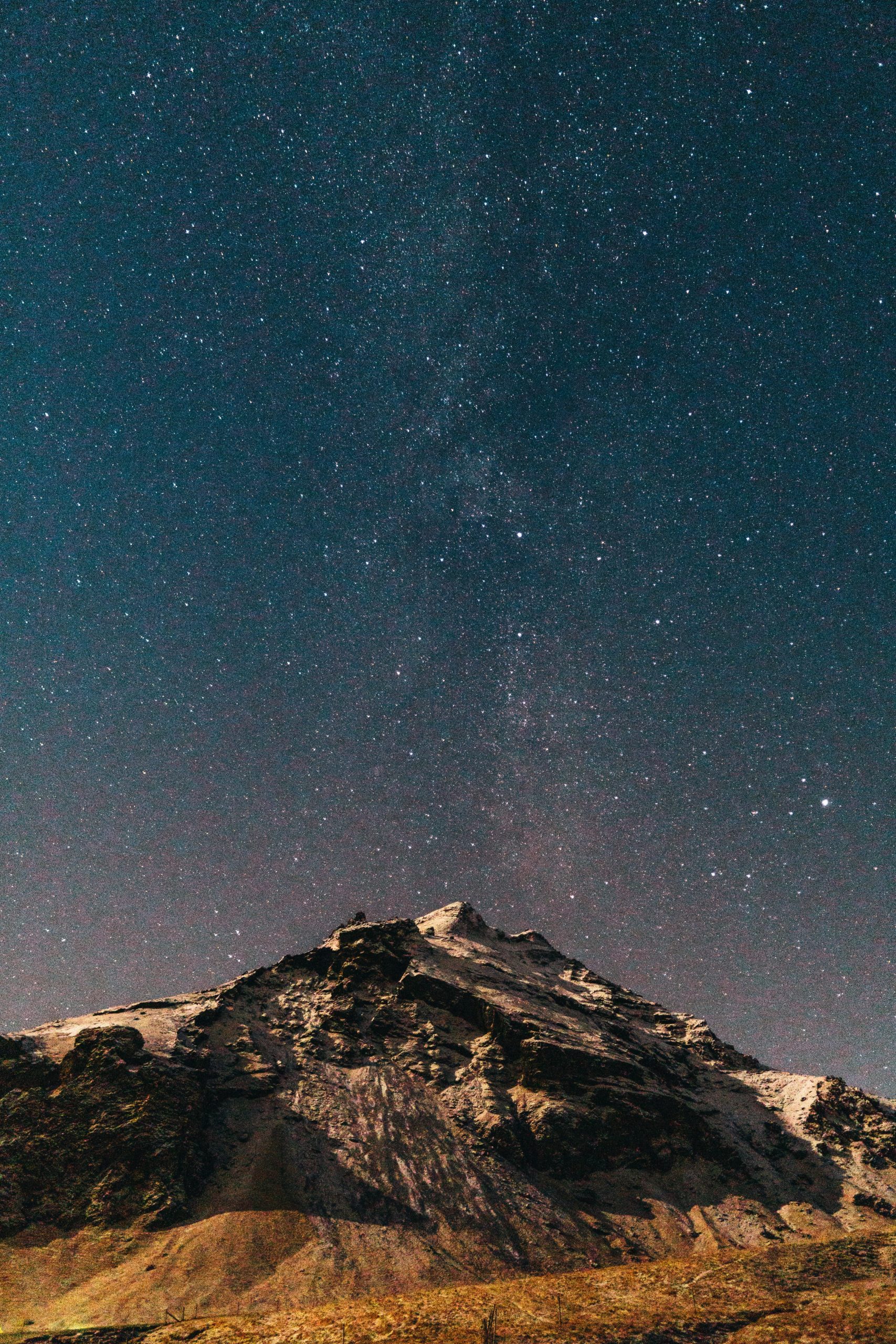
2. Stargazing and Telescoping out the heavens
Northern lights painting gives us something to do down here on Earth, but what about when we’re back to eyeing the skies?
That’s when it’s time to stargaze. While this activity does require the same clear skies as auroras, it doesn’t necessarily require any special equipment. (But don’t worry gadget collectors- there definitely is some.)
With a little knowledge and a lot of darkness, you can find constellations, planets, nebulas, and all sorts of celestial bodies. One can follow satellites, shooting stars, and even an eclipse or two in the Icelandic sky. (And you ought to make the best of it while you can, because we miss out on nearly ever summer event!)
However, if you want to elevate your stargazing experience, there are a lot of tools that can help you do this. Telescopes, binoculars, star maps, and more apps than you can imagine exist just for this very purpose.
Stargazing is a burgeoning hobby with an incredible community, and depending on where you are- there is likely a whole contingent of fellow gazers that you can learn from and watch with.
There also happens to be a lot to learn, so this hobby may stay with you far beyond an Icelandic holiday. Amateur space weather enthusiasts all over the world are even helping contribute to modern science.
In fact- it was stargazers that helped us understand STEVE. But, it’s a wide world out there. What far off planets or mysteries of the verse are YOU going to discover?
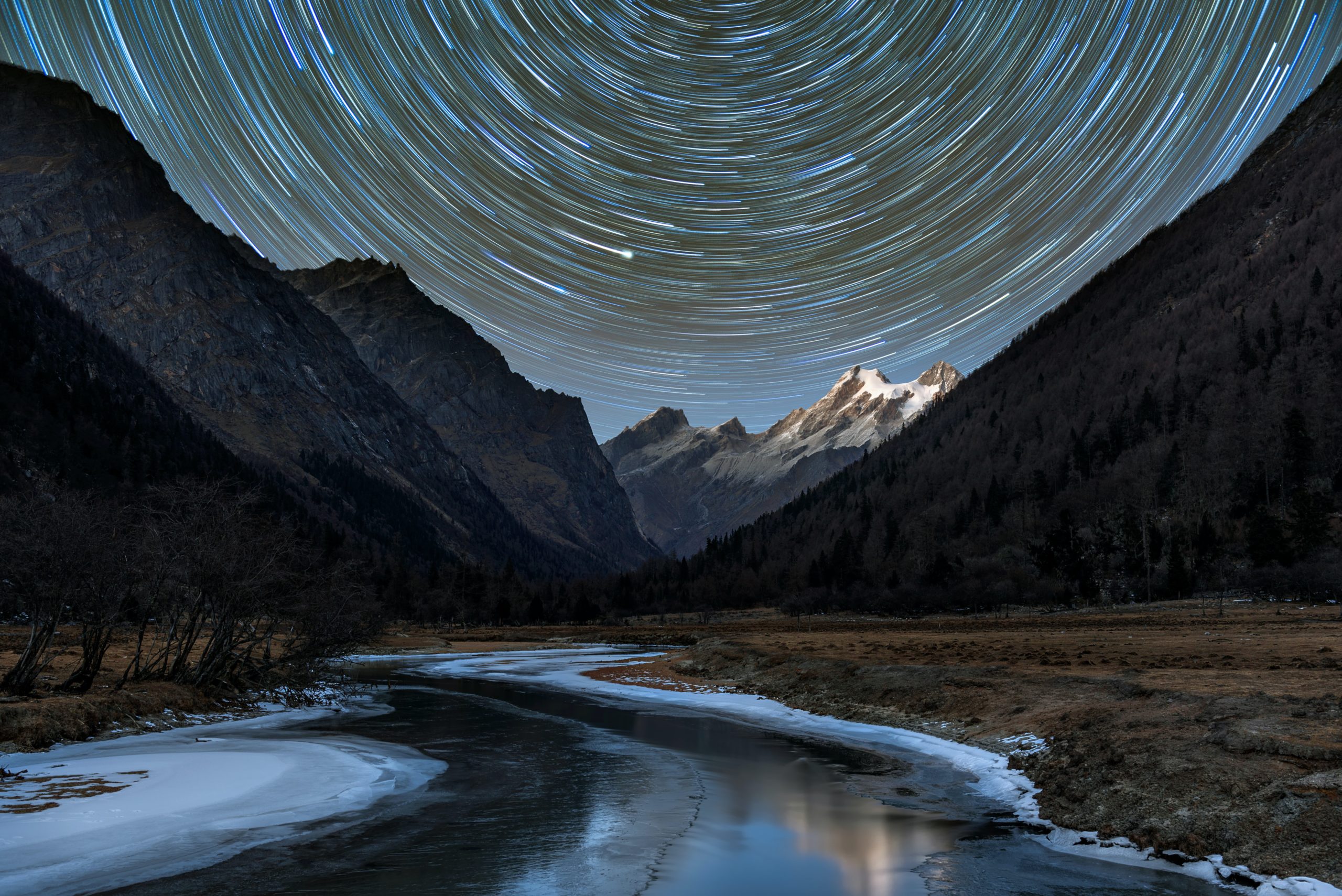
3. Astrophotography, Star Trails and Galaxy Hunts
While stargazing and northern lights painting can both become camera-centric activities, this is definitely one. Many aurora hunters end up becoming photographers out of necessity- because it is just too hard to chase such an ethereal thing and not keep a piece of it for yourself.
Photos are one of the many pieces of the magic, and they are not easily come by. Their rarity and the work that goes into making them is in some ways just as rewarding as the aurora hunt itself.
(Not to mention, a well-timed photo can be a great early detection tool in actually finding the northern lights on a dim evening.)
As many of you know, a great photo is the ultimate souvenir. It’s hard for a t-shirt or a fridge magnet to beat that kind of memento. But what do you do when there’s no aurora to capture?
That’s when we widen our scope even more, to astrophotography. Astrophotography is a big term that includes aurora photos- and about a thousand other things. The reality is that we can access so much more of the sky than we realize.
With the naked eye and our usual context in light polluted places, there’s a lot that we don’t see. But with a great lens (be it in a camera, telescope, or slick pair of binoculars,) suddenly the far rings of Saturn, or the super up close topography of the moon, become easily viewable.
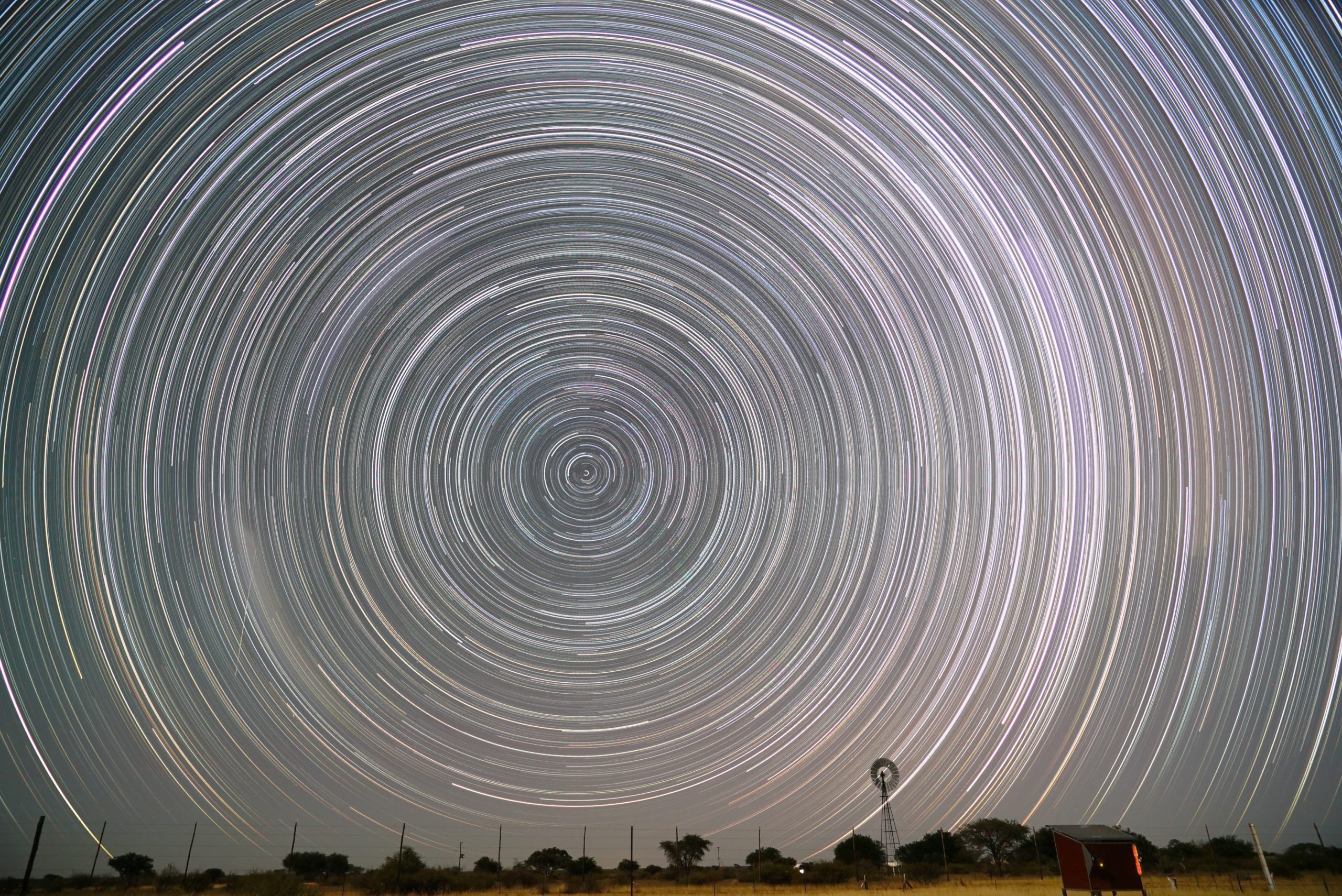
Star Trail images
So after you’ve done your northern lights painting of course, turn your lens to the stars. If you’ve got your tripod and plenty of battery, you can create star trail images by setting your focus to infinity and using the longest exposure you’ve got available to you.
This can be a tricky situation, because you may need to set your camera to the bulb setting, or acquire a cable release for your specific camera model to allow these unusual levels of exposure. (We are talking about 15-30 minute long exposures here!)
But, thanks to aids like Startrails, you can also take shorter exposure images, and the program will layer them together for you. This process makes this type of photography a bit more accessible to the novice astrophotographer, and it cuts down on image noise as well.
This is a special branch of nighttime photography, so have a look around if you’re interested! There is a whole world of star trail enthusiasts, and a million tried and true practices for getting the kind of images you want.
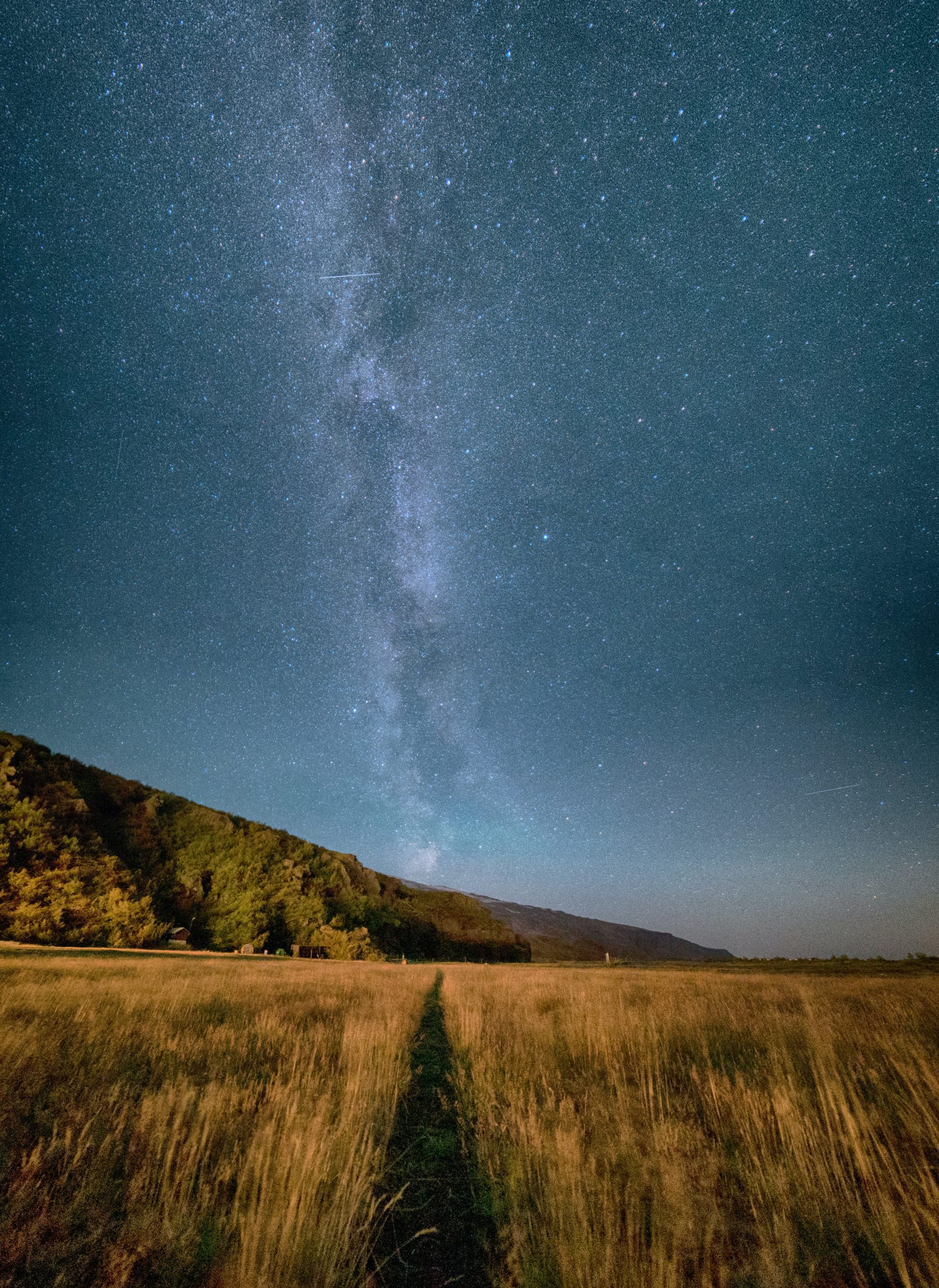
Galaxy Photos
If you’re looking to capture nebulas and far off bodies of celestial light, you may need some specialized gear. Many of these photos are taken with professional attachments and some are even captured through telescope attachments!
If you’ve got a telescope with you and want to venture into that realm of photography, go forth and please send us a copy! We’d love to see it. But for those of you who are trying to capture a galaxy with your DSLR, you may be in luck.
It’s not the easiest, but it is possible. You’ll need a lot of the same stuff you’d bring with you for northern lights photos, so make sure you’ve loaded up your manual capable camera, a sturdy tripod, a fast lens and some patience.
A new item that you’ll need is a starmap app. An interactive map can help you locate the milky way for that evening, which will cut out a lot of the guess work. Above all, you need to be in a dark place. Just like aurora hunting and northern lights painting, light pollution drowns out the good stuff.
Just like the star trail photos, you’ll be working with a pretty long shutter. As you try this out, don’t be disappointed if your photos don’t look quite as outrageous as some of the galaxy shots you’ve seen.
Many photographers in this field are utilizing specialized gear, processes like time blends and startracking, and doing a lot of heavy lifting in a post processing software like Photoshop.
These images are sometimes the product of a great composite job, or a lot of really skillful editing in a RAW image. You can certainly capture a viable shot with your regular aurora gear, but if you’re interested in this- don’t despair! All of these tricks can be learned, and there is ample information on the web to help you. Everybody has to start somewhere.
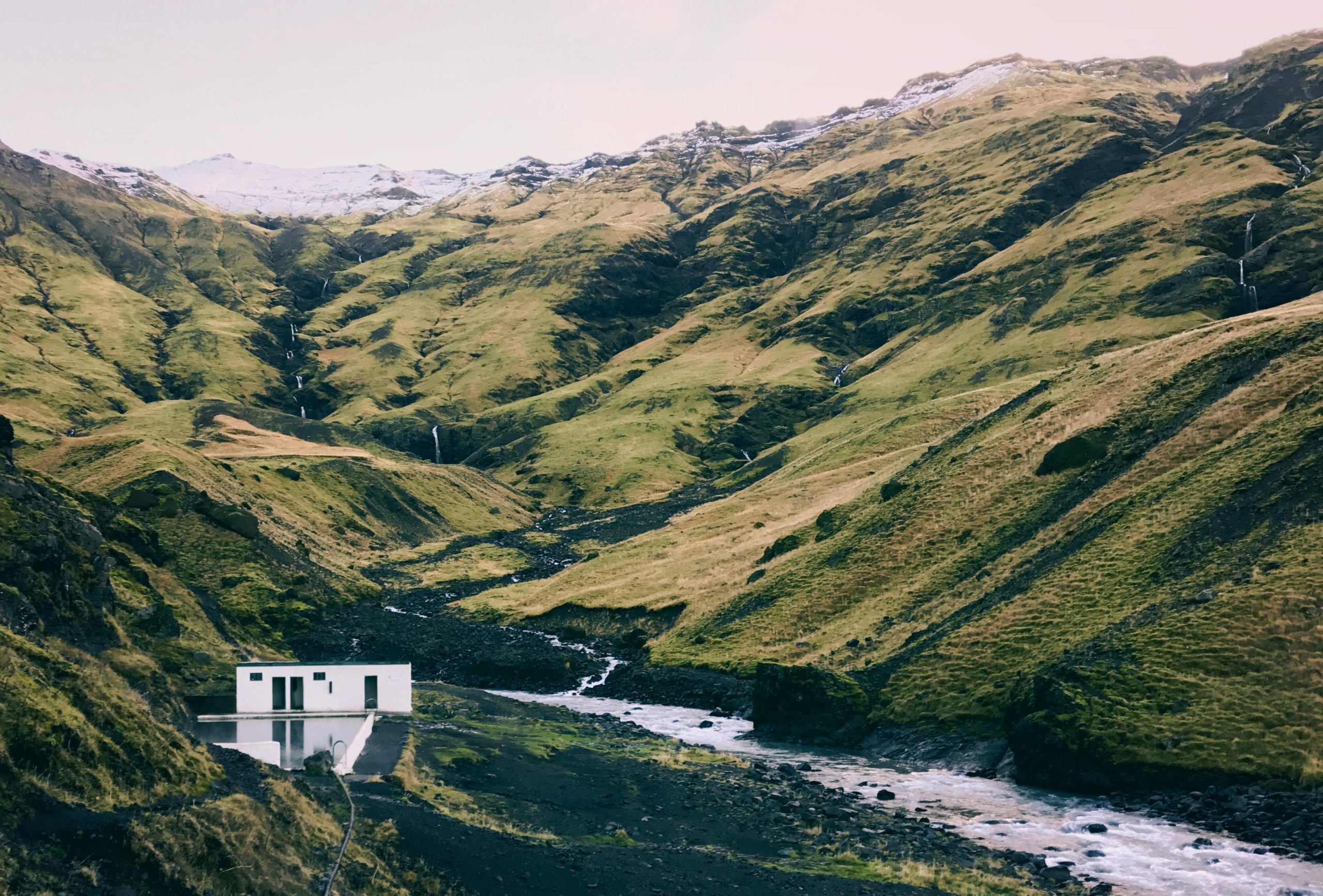
4. Hot spring night soaks
Now here’s an activity that you don’t need a camera for. (Unless you want to make some friends extra jealous.) Half of the time, we’re doing this instead of setting up the cameras- and sometimes the lights come out anyways!
The best seat in the house is always in the hot pot. Iceland’s geothermal landscape is a treasure chest of natural hot springs and great places to soak. But despite that, Icelanders have installed geothermally heated swimming pools in nearly every town, and hot tubs at many summer houses.
If there’s a pool to sit in, we can almost promise it’s heated. (Unless it’s an ice pool, that’s a thing.) If you’re staying in town, there’s a swimming pool near you that is accessible for a low price year round, and if you’re extra lucky, you may have a hot pot in your vicinity.
If you’re a hiker, you can venture forth into a natural hot spring like Reykjadalur, or even Landmannalaugar. If you choose these wilder options, remember to be careful.
Hiking in the colder aurora season and in the darkness is a next level activity, and should only be taken on by aurora hunters that are confident in their trekking skills. Make sure to tell a friend where you’re headed, and bring the appropriate gear.
And check the weather! Some of these natural springs are in mountainous places that experience quickly changing weather and limited visibility, so it’s good to understand the area before you set out.
But if you make it.. Enjoy! There’s nothing in the world like laying in a wild hot spring at night watching nature make its own northern lights painting, just for you.

5. Lay back and pop some Bubbly
As we near the more.. Luxurious end of our list, it feels only right to mention the northern lights igloo option. If the lights are out, this is an incredible option. If they aren’t out, it’s an incredible option. If you’re here in the summer, it’s an incredible option. You can’t go wrong with this activity.
The Bubble Hotel of Iceland consists of a handful of fully transparent domed igloos that are tucked away in the embrace of two lush forests. This means you’ve got two location choices, and all the nature you can handle.
These hideaways are sequestered in their own groves, heated, and outfitted with their own luxury sleeping accommodations. To catch the lights, we often wait outside for long periods of time in the wind, weather, and low temperatures.
But imagine if you could do it wrapped in a down comforter with gourmet treats, in bed? Because of their rural locations, you’ll have all the darkness you need for optimal aurora watching or stargazing.
If you catch the lights out here, there’s no better seat. But if you don’t- you still get to walk away with a night spent in the height of luxury, surrounded by the grandeur of raw Icelandic nature on all sides.
It’s certainly the furthest away you can get from roughing it, while still being right in the middle of the woods. So excuse us while we slip into something a bit more.. Comfortable.
The best place to see Northern Lights in Iceland: 10 of the most magical spots for aurora watching and stargazing
No matter how many times we’ve seen the aurora, we’re always looking for the best place to see northern lights in Iceland.
We never stop looking for the best place to see northern lights in Iceland. From the far reaches of the west, to the lush forests of the east- it is impossible to count them all. Iceland may be a small island, but the hidden treasures here are many. Where was the best place you watched the sky from?
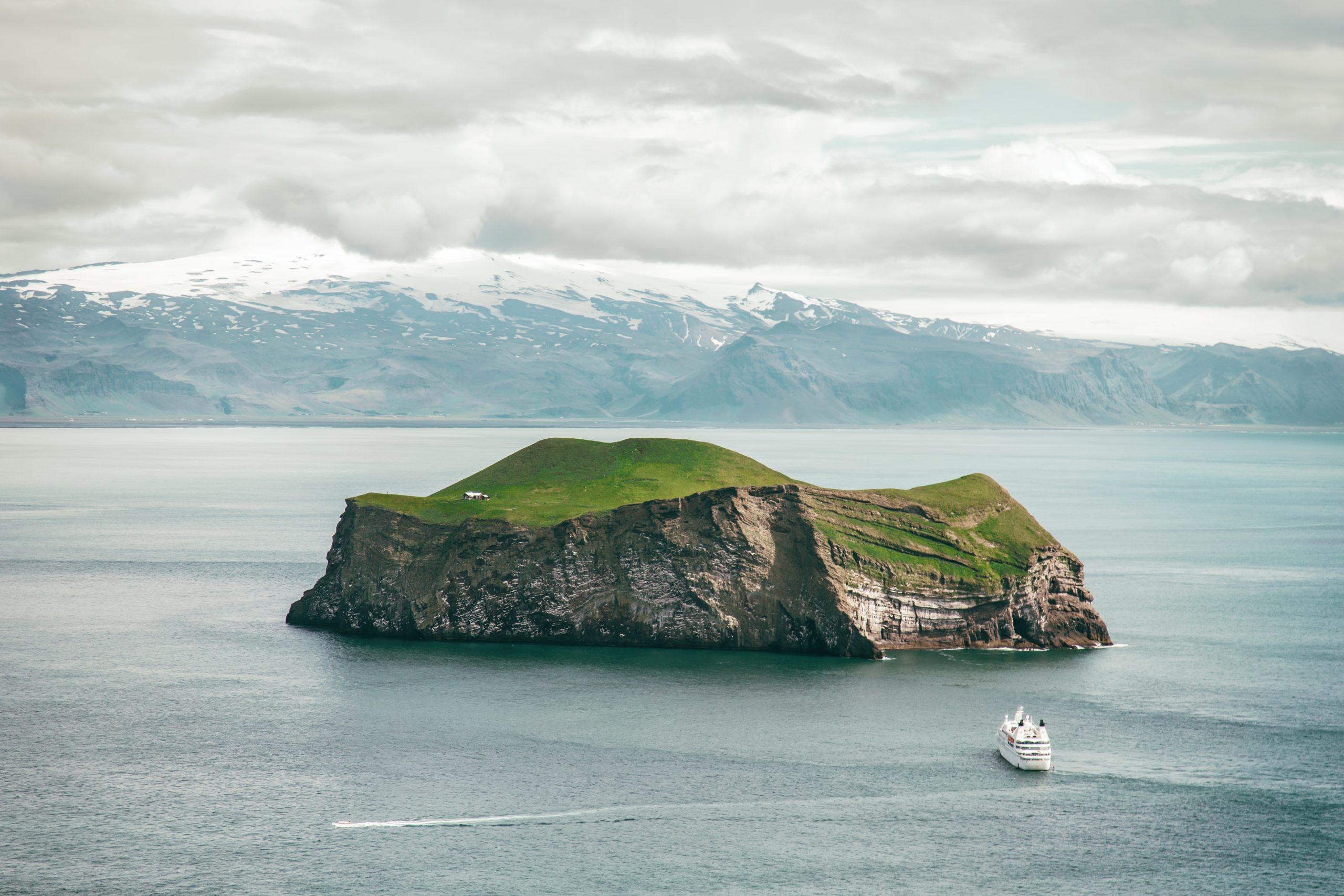
1. Vestmannaeyjar
Vestmannaeyjar, or The Westman Islands, lie right off of Iceland’s south coast. Accessible by ferry or plane, they are an often overlooked gem and in our opinion, a best place to see northern lights in Iceland.
The Westman Islands are a self-contained world all to themselves, and boast some of the warmest annual temperatures in the entire country! Benefitting from the gulf stream, they are known as a wildlife-rich area that enjoys plentiful fishing, whale and birdwatching, and music festivals and sport in the summer.
A visit to the Westman Isles is punctuated by incredible sights. Lighthouses on rock stacks, one of the most famous volcanic eruptions in modern history, vast sea caves, and a whole chain of gorgeous, uninhabited islands. And being far south, one of the last places to catch the lights at the end of the auroral season.
Many great country aurora spots are remote, but here in Vestmannaeyjar you’ve got everything you can think of within a few kilometers. Including some of Iceland’s most notable golfing and dining!
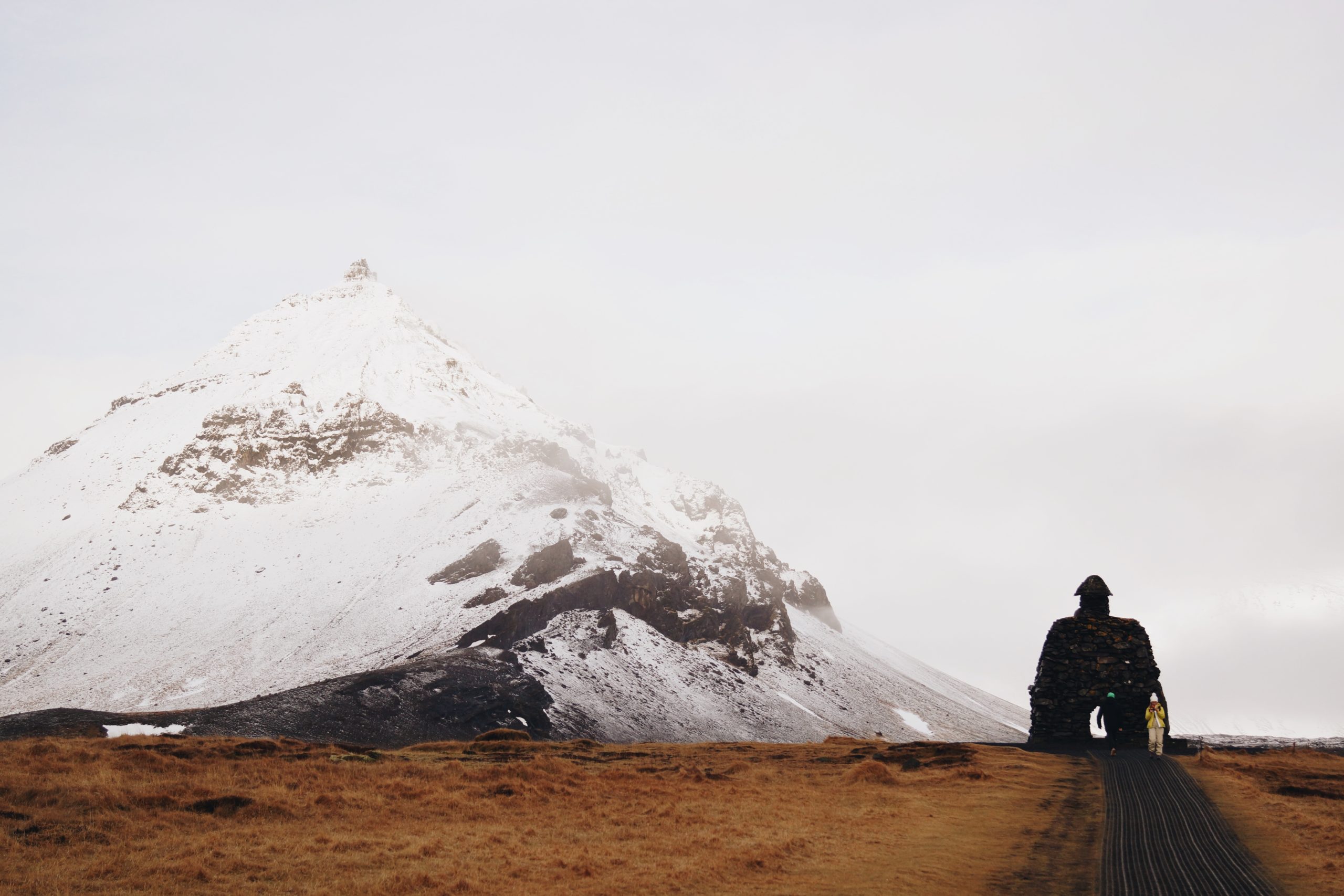
2. Hellnar in Snæfellsnes
The peninsula above Reykjavik is known as Snæfellsnes. A place that enchanted Jules Verne and featured in many historical Saga tales, Snæfellsnes became an EarthCheck community in 2008.
Truthfully you could travel the whole of the peninsula, and find thousands of good aurora spots. This is not a heavily populated zone, and during the day it is a phenomenal sightseeing location.
But we’re spilling the details on our favorite spots, so Hellnar has to make the cut! An ancient fishing village for many generations, Hellnar is perched on the tip of the peninsula overlooking the curved basalt coastline and the thundering sea.
People come from miles around to seal and whale watch, enjoy the varied geology of the area and view the countless natural landmarks in peace. You can travel quietly here, and enjoy the high-quality darkness of this northerly locale.
When in Hellnar, one can nearly imagine what it might have been like in centuries past- a bustling destination under a slumbering volcano.
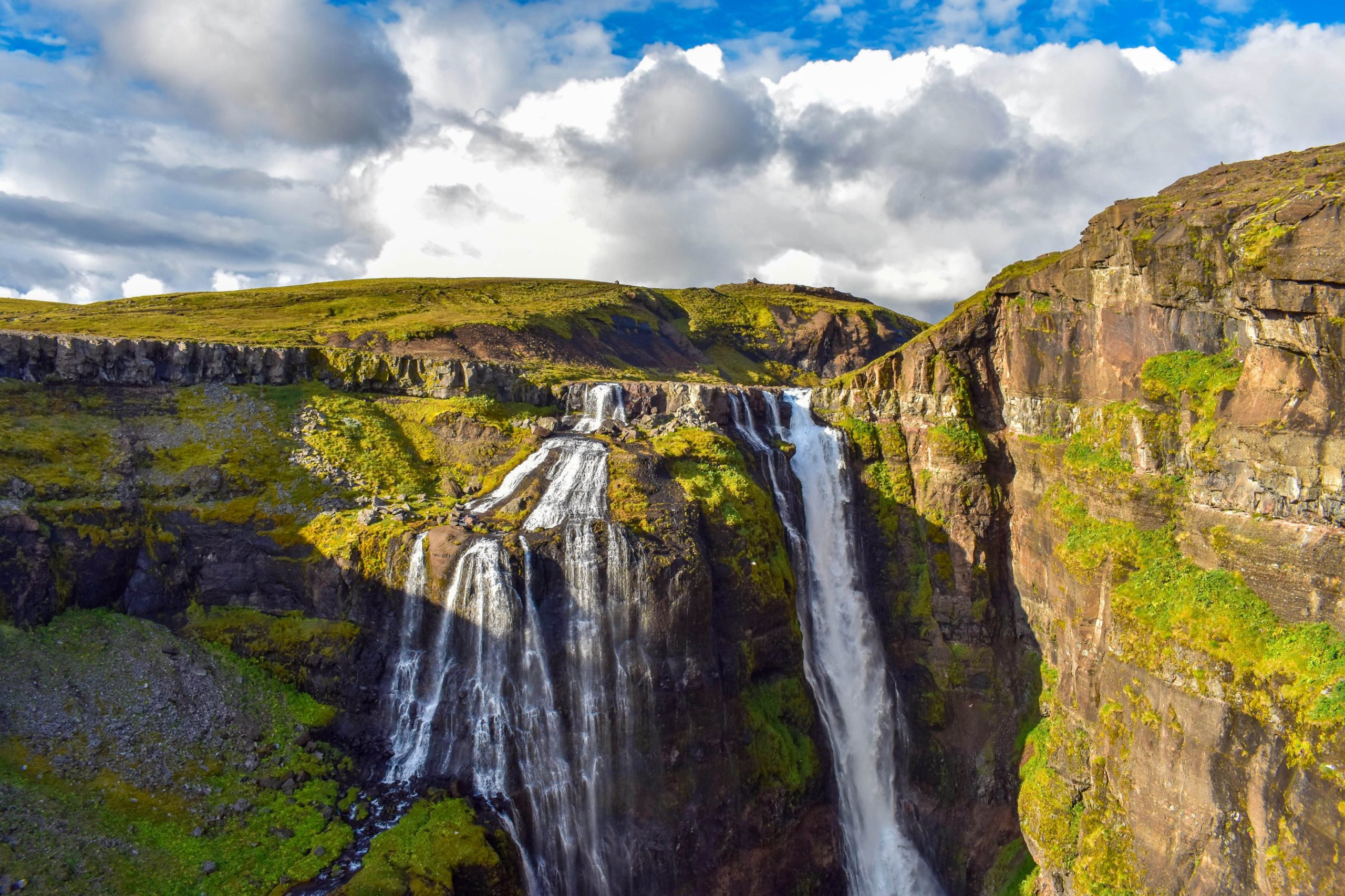
3. Hvalfjörður
Just outside of Reykjavik lies a hidden treasure off the main road. Hvalfjörður is the name of the fjord that lies between Mosfellsbær and Akranes. A short trip from the capital city, Hvalfjörður is home to many small waterfalls and hiking paths.
The popular trek to Glymur starts here, and many coastal hikes as well. The fjord itself is 30 kilometers long and there is not a stitch of it that does not house some kind of tiny wonder. Often passed over for more notable climes, this is a calm and beautiful place to aurora watch, with multiple marked observation points that are safe to park in.
Great for some daytime and evening hiking while you wait, the textured vistas and low traffic certainly make Hvalfjörður feel like the best place to see northern lights in Iceland.
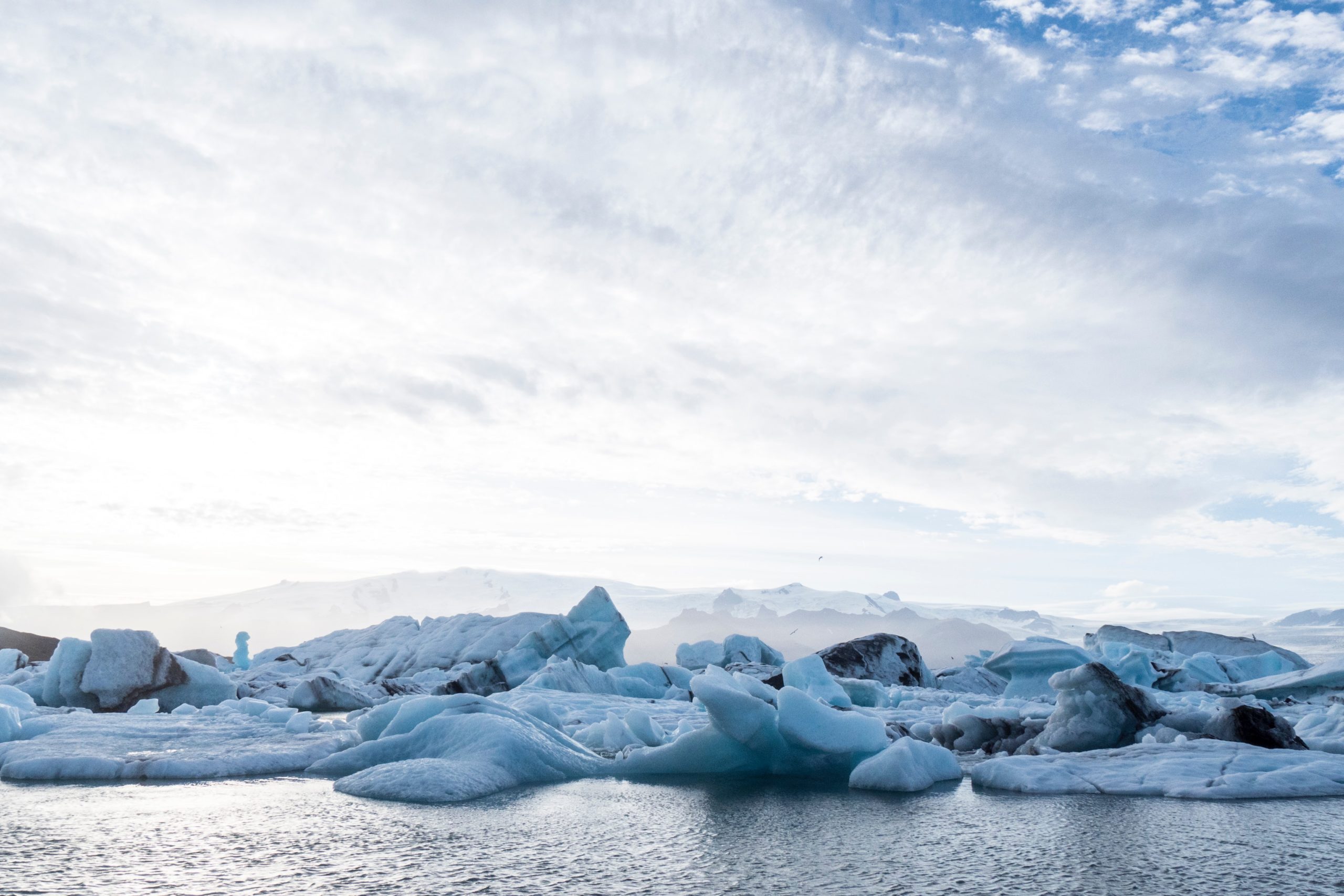
4. Jökulsárlon and Fjallsárlón
You have likely already seen Jökulsárlon on lists like these, and it is admittedly hard not to include it. One of the most dramatic glacial lagoons on the island, Jökulsárlon feeds out to sea across a black sand beach littered with giant chunks of ice.
Watching the huge pieces of ice swirl in the surf as if weightless, is a close competitor for the northern lights. But what about nearby Fjallsárlón? Only about 10 kilometers west of well known Jökulsárlon, lies this smaller more intimate lagoon.
Spectacular during the day, at night the lagoons can provide gorgeous reflection photos for aurora hunters and stargazers alike. Time spent next to these otherworldly spaces is special and fleeting.
They are truly impermanent and no repeat visit to them will ever feel the same. All the better reason to hurry- both the lights and the ice do not keep.
Tip: When visiting these spaces, be extra careful around the water and the ice. It is tempting to hurry forth and touch, but the calving of the glacier is unpredictable and can create impressive waves. The ice left on the beach is easily moved by the ocean, and just like the lagoons, can be dangerous up close. (What looks light in the sea, may feel rather heavy when dropped on your feet!)
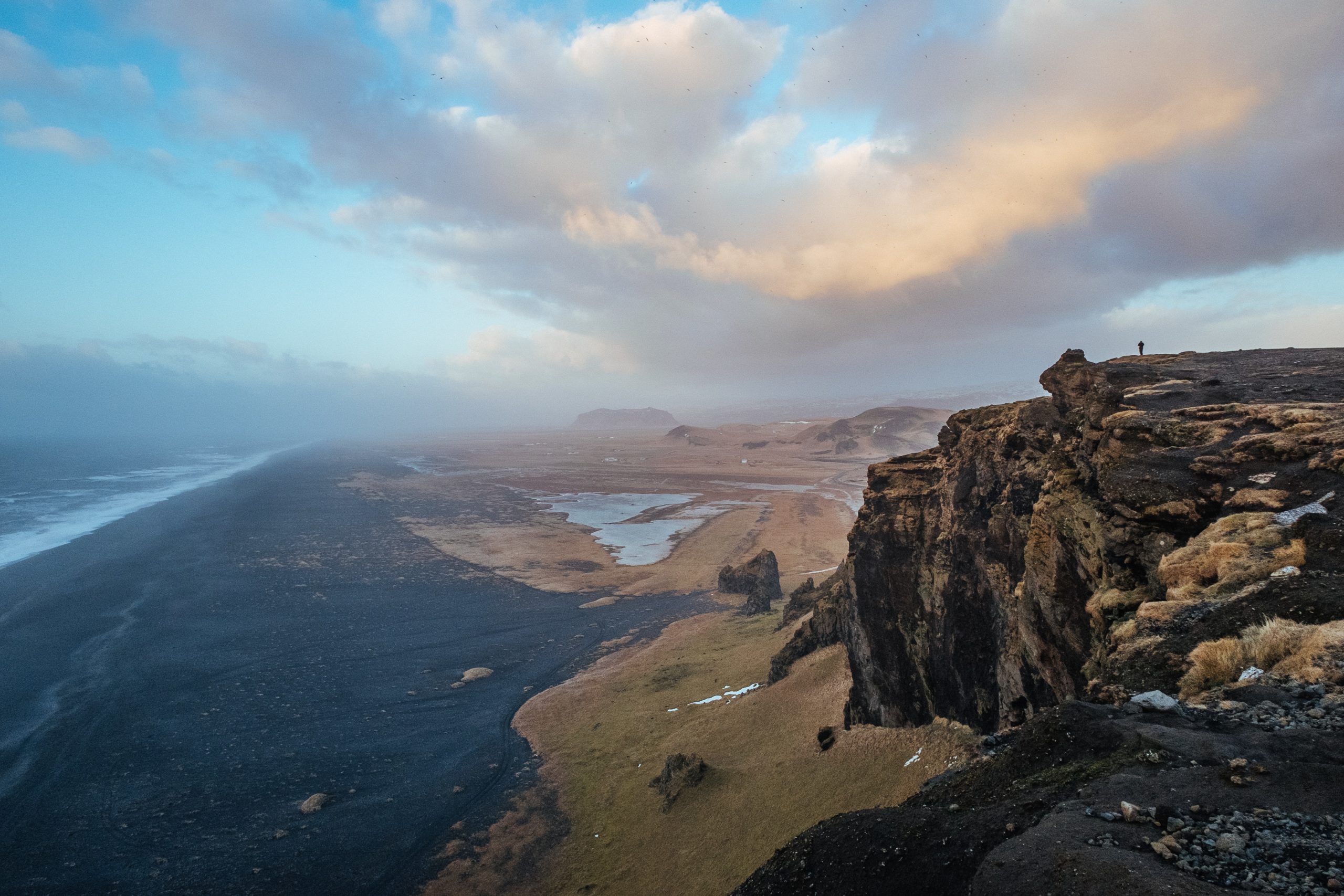
5. Dyrhólaey
Near the coastal village of Vík, there’s a promontory called Dyrhólaey. Named for the arched holes in the rock- or “door holes”, this is another ever-changing gem of the island, not to mention the southernmost point of the mainland! Featuring multiple paths, Dyrhólaey is a paradise of vistas.
There are many famous shots to be had here, and hardly anything to get in the way of them. An easy jaunt from the nearby village, Vík is a great refueling stop for explorers of this area. The south coast is punctuated by black sand beaches, huge basalt sea caves, and towering cliff waterfalls.
There are even northern light igloos that one can hide away in, which makes the south coast in general a great choice for the best place to see northern lights in Iceland.
Tip: Mind the pathways and signs when visiting this area. Dyrhólaey is changing, and pieces of the landmass are sometimes lost to the sea. Places that are roped off are roped off for a reason.
Check any signage you see before you hike out, as rangers in the area often update it due to shifts in the conditions of the land.
The ocean around this area is fierce and has claimed many lives. When visiting the shoreline, keep your distance from the waves- this beach is known for “sneaker waves” and unforgiving currents.
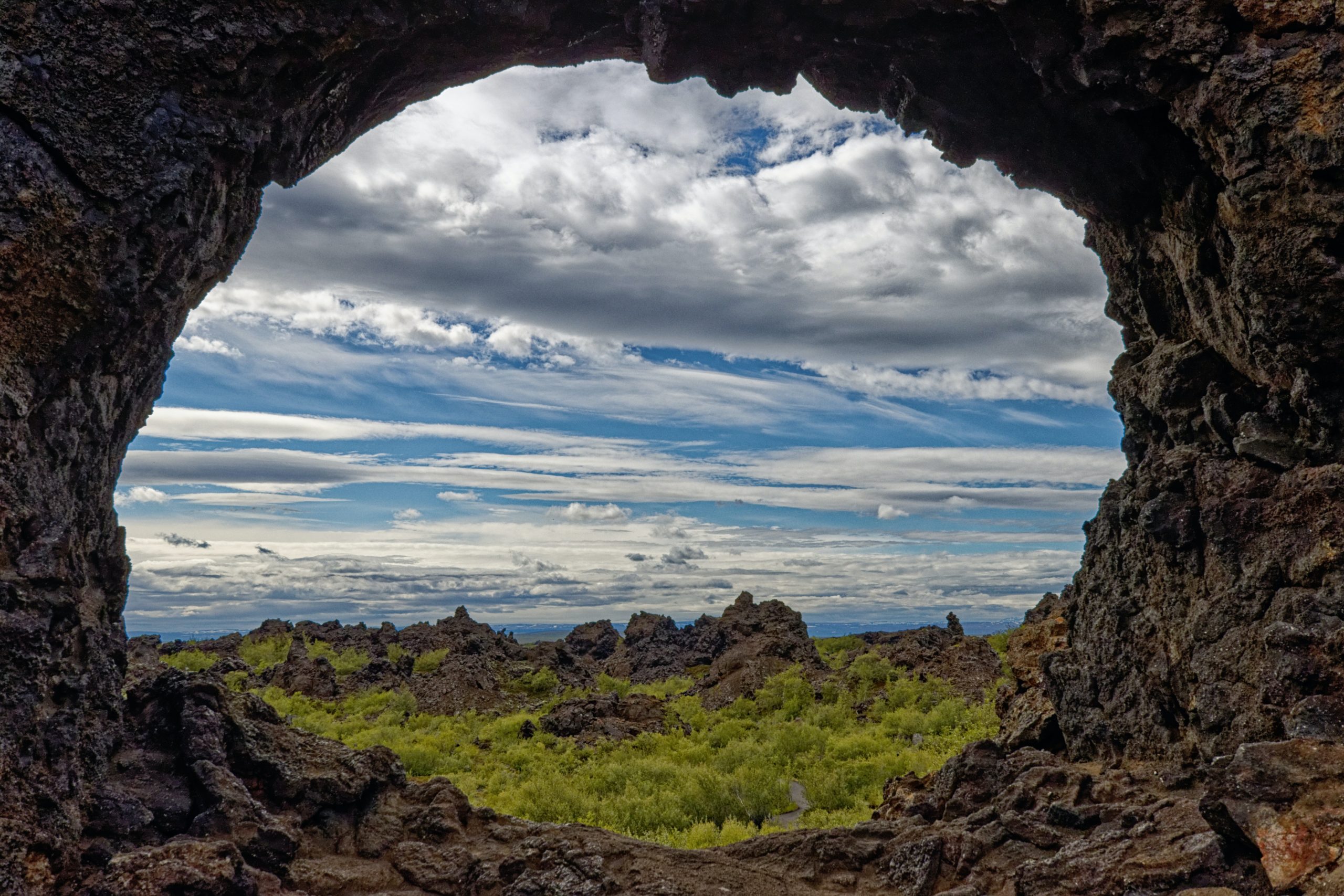
6. Dimmuborgir
In the north of Iceland near Mývatn, lie the dark castles. Otherwise known as Dimmuborgir, this strange lava field has captured the eye of many, from Norwegian metal band Dimmu Borgir, to the wildlings of Game of Thrones.
Characterized by the unusual rock stacks and tunnel formations, Dimmuborgir is a place of many stories and beliefs. But, regardless of what you believe, it is a shoe-in for best place to see northern lights in Iceland.
Being located in the picturesque Mývatn region, the dark cities overlook miles of great lakeside hiking and some of the north’s best geothermal bathing. For amateur and expert photographers alike, the craggy peaks of the lava and the still waters of Mývatn make incredible photos against the bright colors of the auroras.
Between the breathtaking natural wonders and the nearby amenities, it’s hard to find a better spot!
Tip: Visit this place during the daytime to familiarize yourself with the terrain. Mývatn may not be hugely difficult hiking, but these rocky areas can be challenging to navigate for the first time in the dark. Double up on your protection by bringing a headlamp or torch- extra points if it’s a red light for night vision preservation!
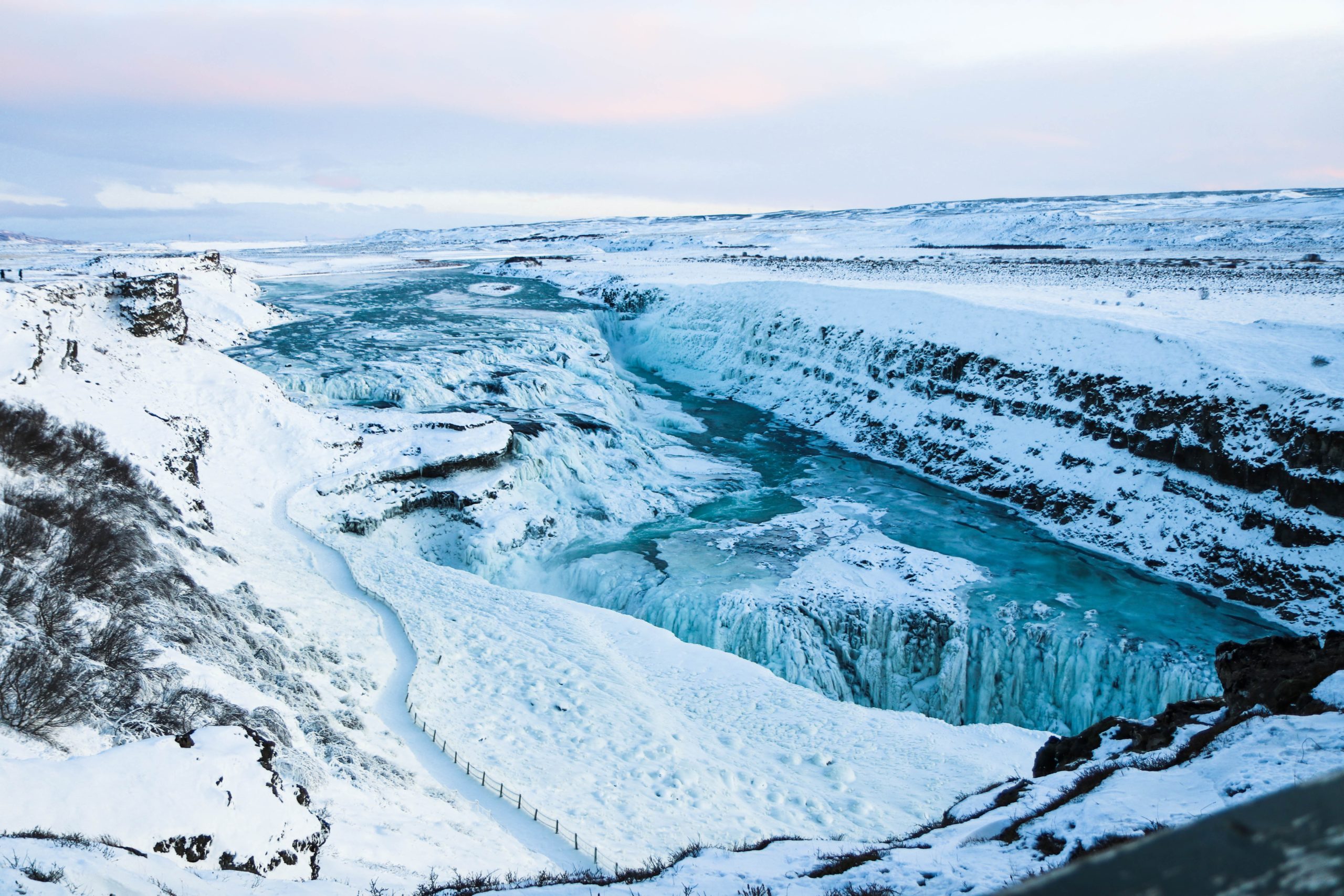
7. Gullfoss
Imagine reclining on a bench watching the northern lights, while a waterfall rumbles nearby. Doesn’t get any more peaceful than that! On our hunt for the best place to see northern lights in Iceland, we had to include a waterfall. Iceland is simply riddled with these gifts of nature, and Gullfoss is a big one.
Named for its golden illuminated appearance in the daytime, what is even more spectacular is the light that hits it in the nighttime. About 1 hour and 45 minutes from Reykjavik, Gullfoss is a protected area that hosts observation points, walking paths, and a parking lot with a cafe.
It’s rare to find a good aurora spot with a safe place to park your car, so spots like these should not be overlooked. The golden circle region is a great daytrip, and the roads are well maintained in the winter months.
Tip: If you plan on visiting the cafe or shop on your trip, make sure to check ahead and see what the hours are. These things can vary depending on the season, so it’s better to go in with no surprises. (Or at least one less- the lights are a big enough surprise on their own.)
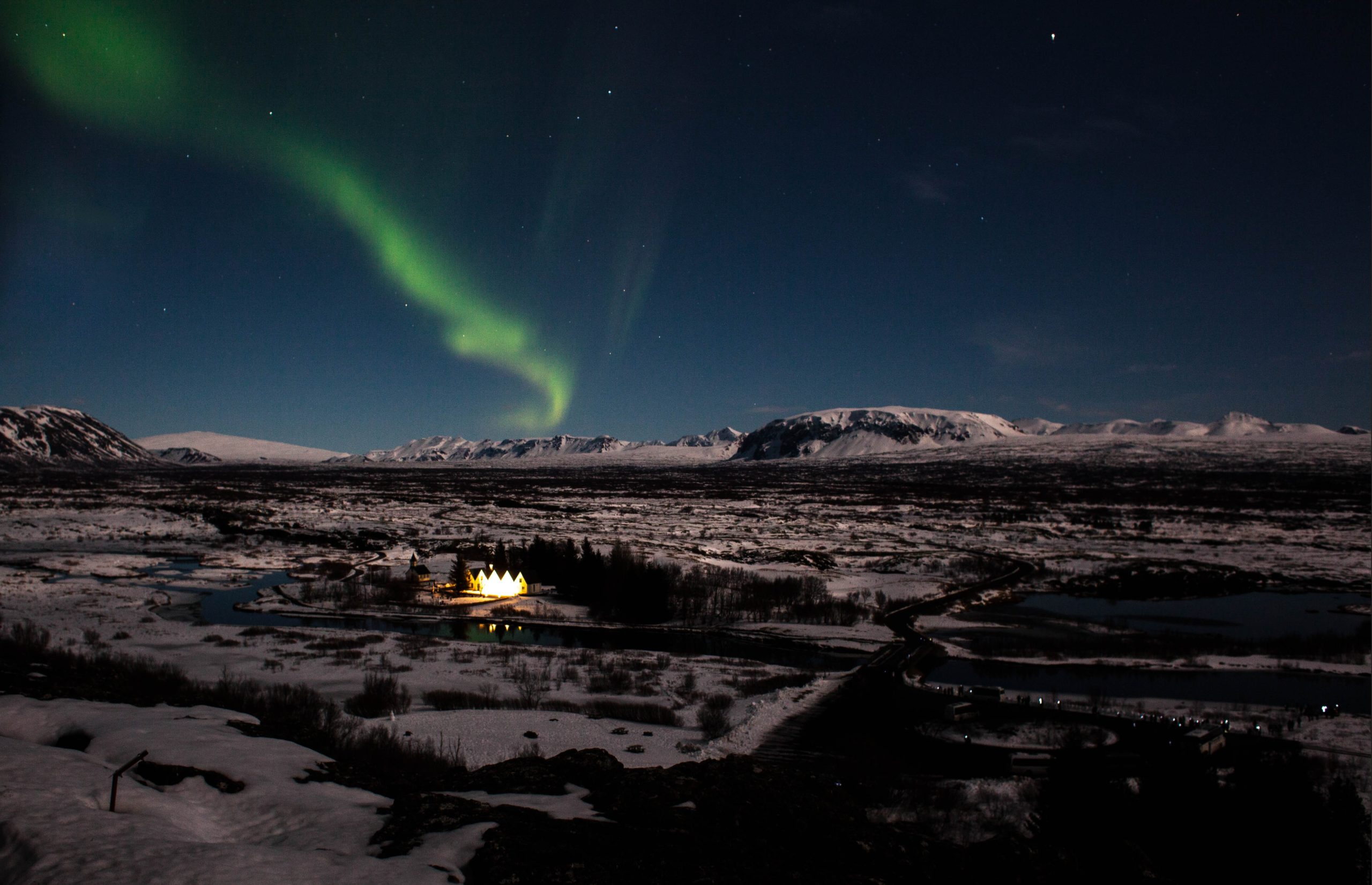
8. Þingvellir National Park
Only about 35 minutes from the capital, Þingvellir or Thingvellir should be on the top of your list for best place to see northern lights in Iceland- no matter where you’re staying. Once upon a time, Thingvellir was the most important gathering point for Icelanders, and it isn’t hard to see why.
Home to a massive lake, miles of hiking, and incredible views- Thingvellir is a place of activity. It’s also one of the places where you can see the continental rift! But as far as lights go, it’s a veritable playground.
When you’re out aurora hunting, you have to consider logistics. Things like places to park, places to get a snack, bathrooms, proximity to lodging, access to darkness, and so on. Most places will only have a few of these, but Thingvellir hits them all.
Being a national park, it’s designed to accommodate vehicles and wanderers. There are loads of paths to travel, established hiking routes, and plenty of parking lots and observation points to safely stow a vehicle.
This is a big win, because Iceland is full of narrow roads with few places to pull over for a show. Thingvellir is also aware of us aurora hunters, and so there are occasionally places to grab a coffee or a bathroom break along the way.
(Depending on how late you’re out, of course. Double check this before you go if it’s your destination.) You’re also in a great spot when you’re here. Thingvellir is just a half-hour north of Reykjavik, and rests at the entrance to the Golden Circle region. (Or exit, if you came the other way!)
And even though you’re close to town, you will find that Thingvellir is home to some surprisingly good darkness. Because of its inland location and its historical importance as a gathering point, it’s well-positioned on the edge of the highlands.
And there’s tons to do! The only mistake you can make by aurora hunting here is to skip visiting in the daytime. In the autumn, Thingvellir is a rainbow of foliage.
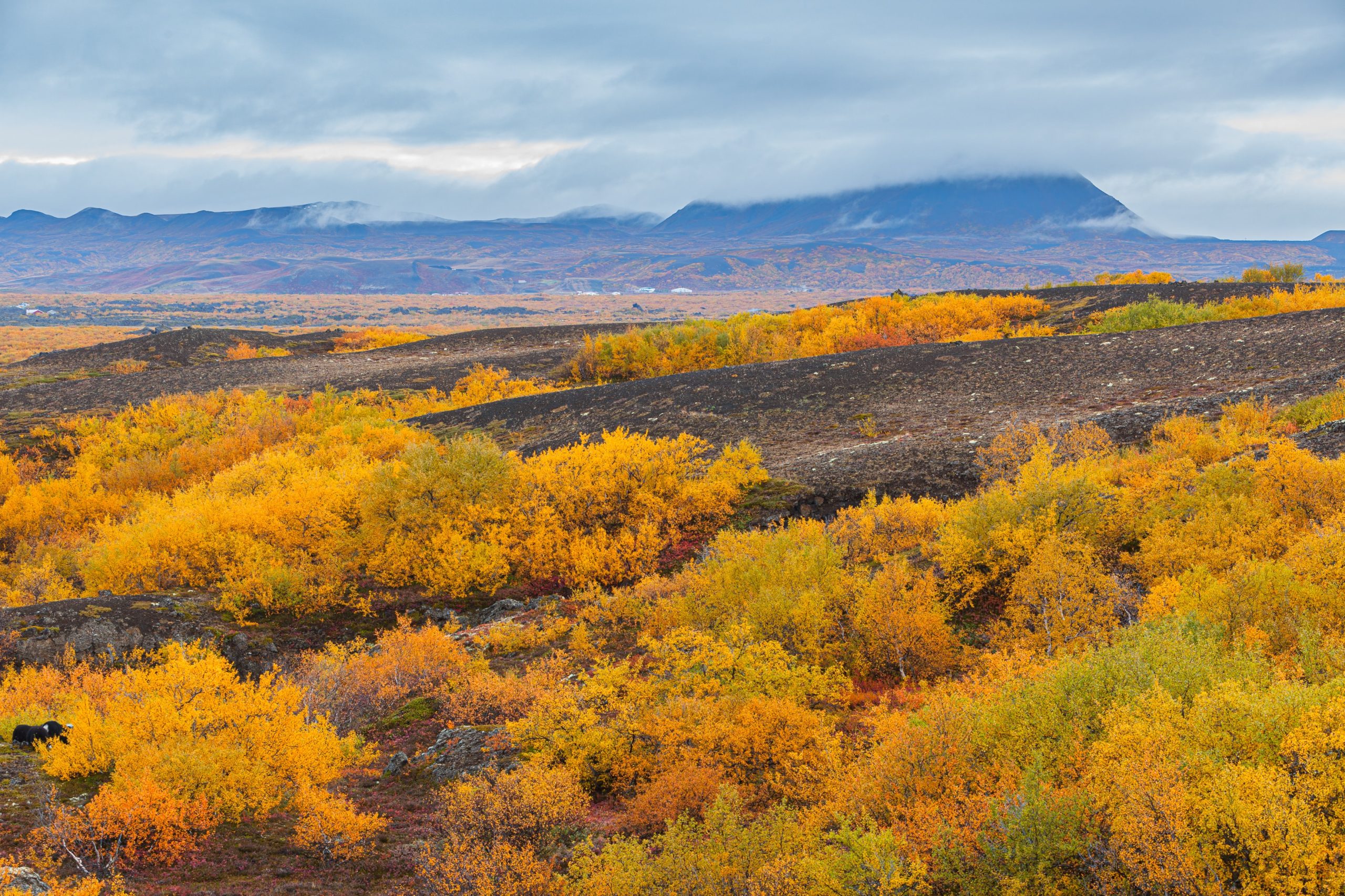
9. Ásbyrgi
This is a rarer stop in the north of Iceland. Located on the Diamond Circle, Ásbyrgi is a horseshoe-shaped canyon that some believe was made by a glacier.. But really we know it is where Sleipnir touched hoof to Earth.
The views to be had here are unique, as the steep walls of the canyon protect a vast forest within their embrace. Because of this “Shelter of the Gods”, Ásbyrgi is an incredible place to visit in the autumn months to catch the color changing of the leaves, and the crystal pond among them.
There is a campsite here, and multiple trails to enjoy all the different views that the huge canyon has to offer. But be careful while you’re here- to us this may be the best place to see northern lights in Iceland, but to some it is the elven capital. Tread lightly!
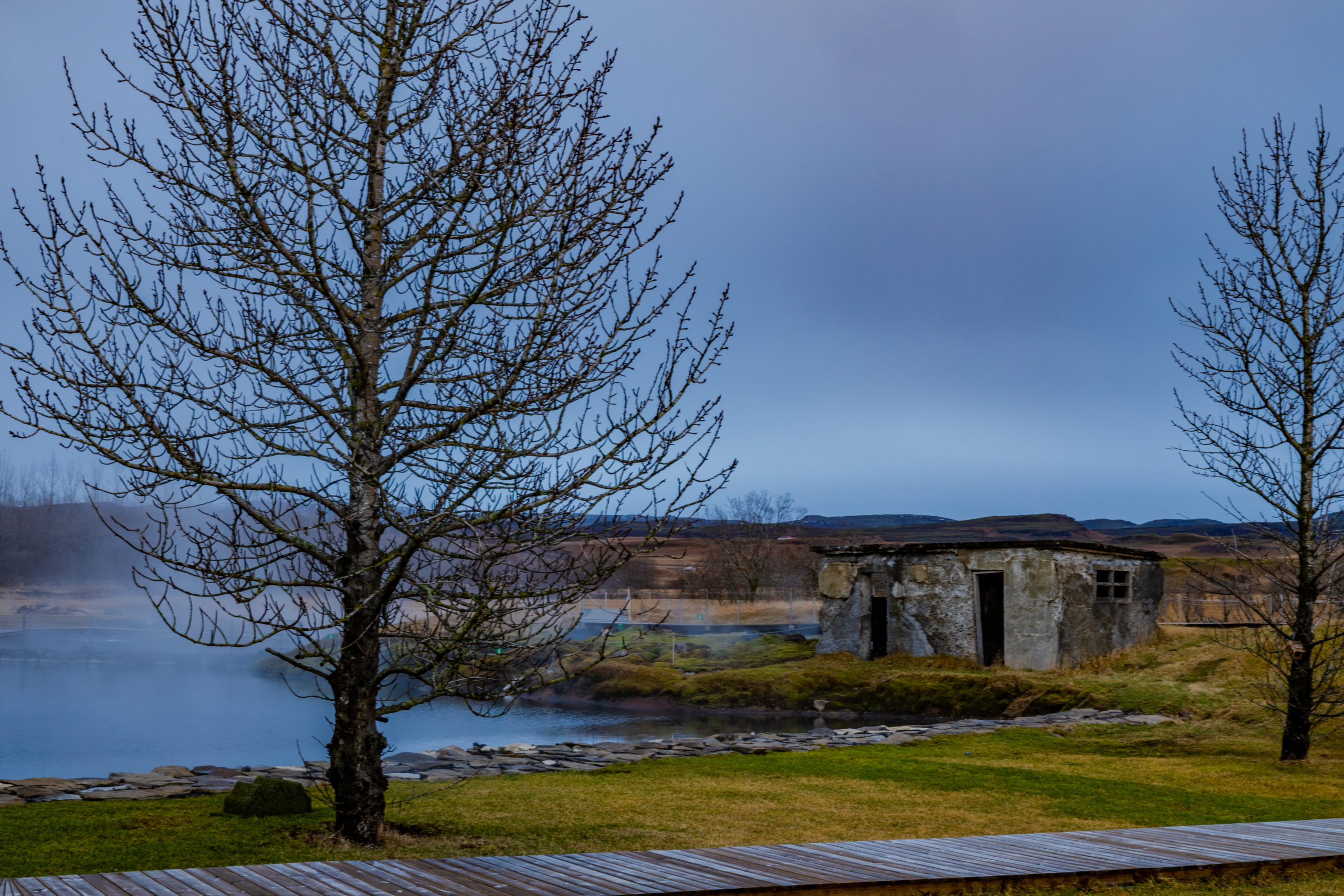
10. Gamla Laugin: The Secret Lagoon near Flúðir
The truth about the best place to see northern lights in Iceland, is that it will change with the weather, and with your expectations. Maybe you have a certain photo you want to get, or a certain thing that you want to see. Maybe you want to stay in a specific region, or are looking for cozy places to unwind while you you look.
Places like the Secret Lagoon near Flúðir, perhaps. We are pretty big fans of watching the lights from warm places, and this is one of the warmest. If your plans and the weather both allow it- watching the aurora from a natural hot spring is an incredible experience.
Particularly one as beloved as the Secret Lagoon. One of Iceland’s oldest “swimming pools”, this is the place where many southern Icelanders first learned to swim.
And within 24 hours, it has replaced its own water as it continuously flows. One of the most authentic bathing experiences there is, coupled with one of the most authentic aurora watching spots we know.
Tip: Check the website before you go to see what the conditions are for that day. Depending on traffic, you may need to book in advance. (The lagoon is big, but it is always better to plan ahead if you can.) The hours of the lagoon may change, so double-check the schedule to see how late they’ll be open when you visit.
10 facts about the Northern Lights to dazzle your mind and ignite your imagination
You’ve heard about why the lights happen, what changes the colors, and when is the best time to see them.. But what else is there to know?
The aurora is one of nature’s most mysterious phenomena. We spend a lot of time talking about it, reading about it, and looking for it– so we put together these 10 facts about the Northern Lights that might be interesting to another aurora enthusiast.
How many of them did you already know? Let us know in the comments!
1. Galileo gave the aurora the name we use today
Sometime around 1619-1621 A.D., Galileo Galilei, and Pierre Gassendi witnessed an aurora. A time of great astronomical advancement, this event kickstarted the aurora madness that we all know so well today.
This is where the name “Aurora Borealis” was born. Coming from the name for the Roman goddess of the dawn (Aurora), and the Greek god of the northern wind (Boreal), the term we are so familiar with today was penned.
Though Galileo and Gassendi are credited with some of the earliest modern writing, there are multiple historic records of early cultures recording their glimpses of the lights.
And despite having named it, Galileo didn’t actually know what it was. In fact, he named it “aurora” because he thought it was the sunlight reflecting off of the atmosphere.
We didn’t know the true source of the aurora until the early 1900s when…
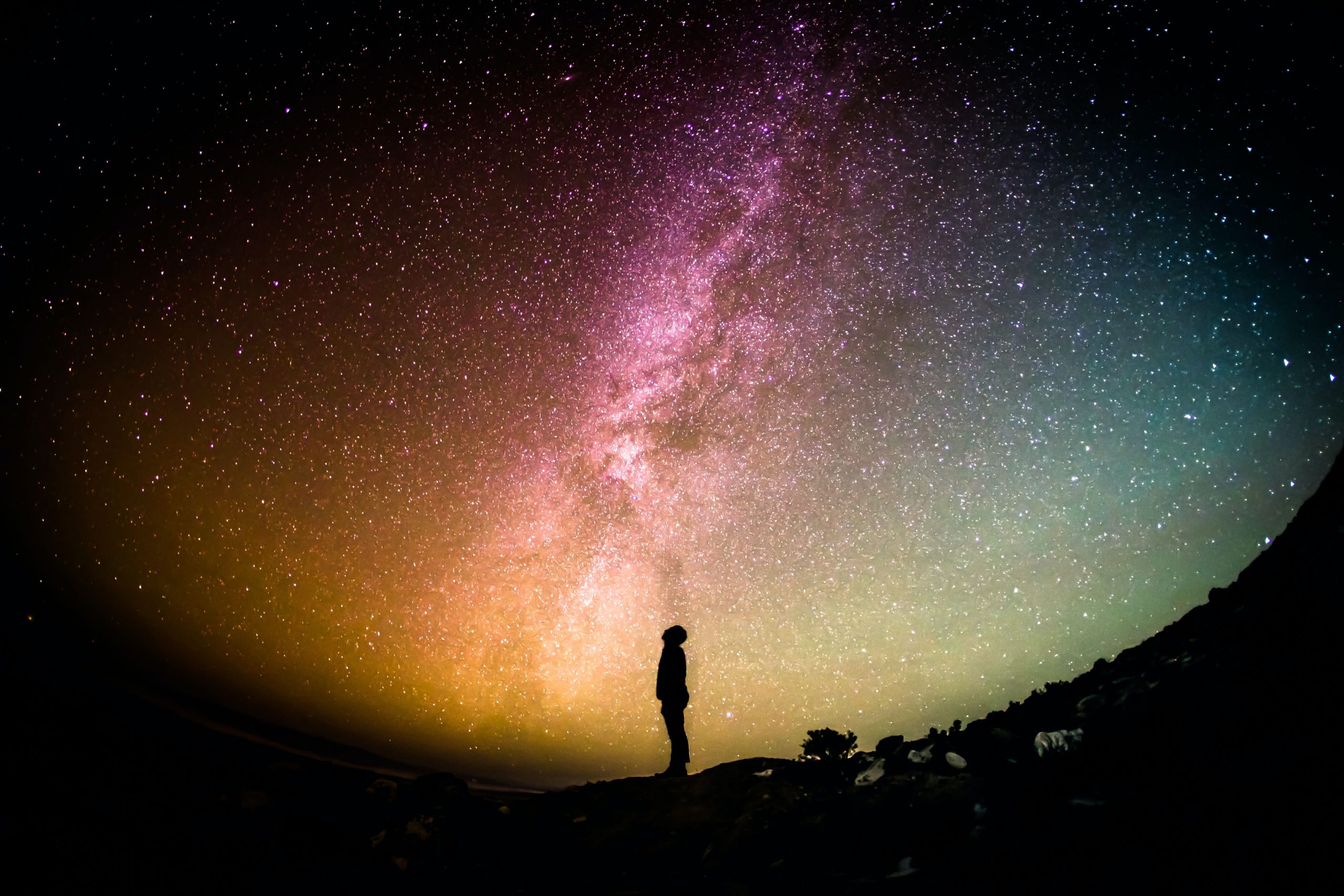
2. Kristian Birkeland developed the theory of atmospheric electric currents, therefore revealing the origin of the Northern Lights.
Often referred to as “The Father of the Aurora Borealis”, Norwegian scientist Kristian Birkeland is responsible for introducing us to the real source of the Northern Lights.
Between 1899 and 1900, he organized the Norwegian Polar Expedition to study the global patterns of electric currents. He did this by making magnetic field measurements from Earth, and the theory he was able to develop through this study is the basis of the theory we use today.
He released this information to the world in 1908 in his book, “The Norwegian Aurora Polaris Expedition 1902–1903”. Birkeland went on to be nominated for 7 Nobel Prizes, but in his lifetime his work was highly contested and considered a fringe theory at best.
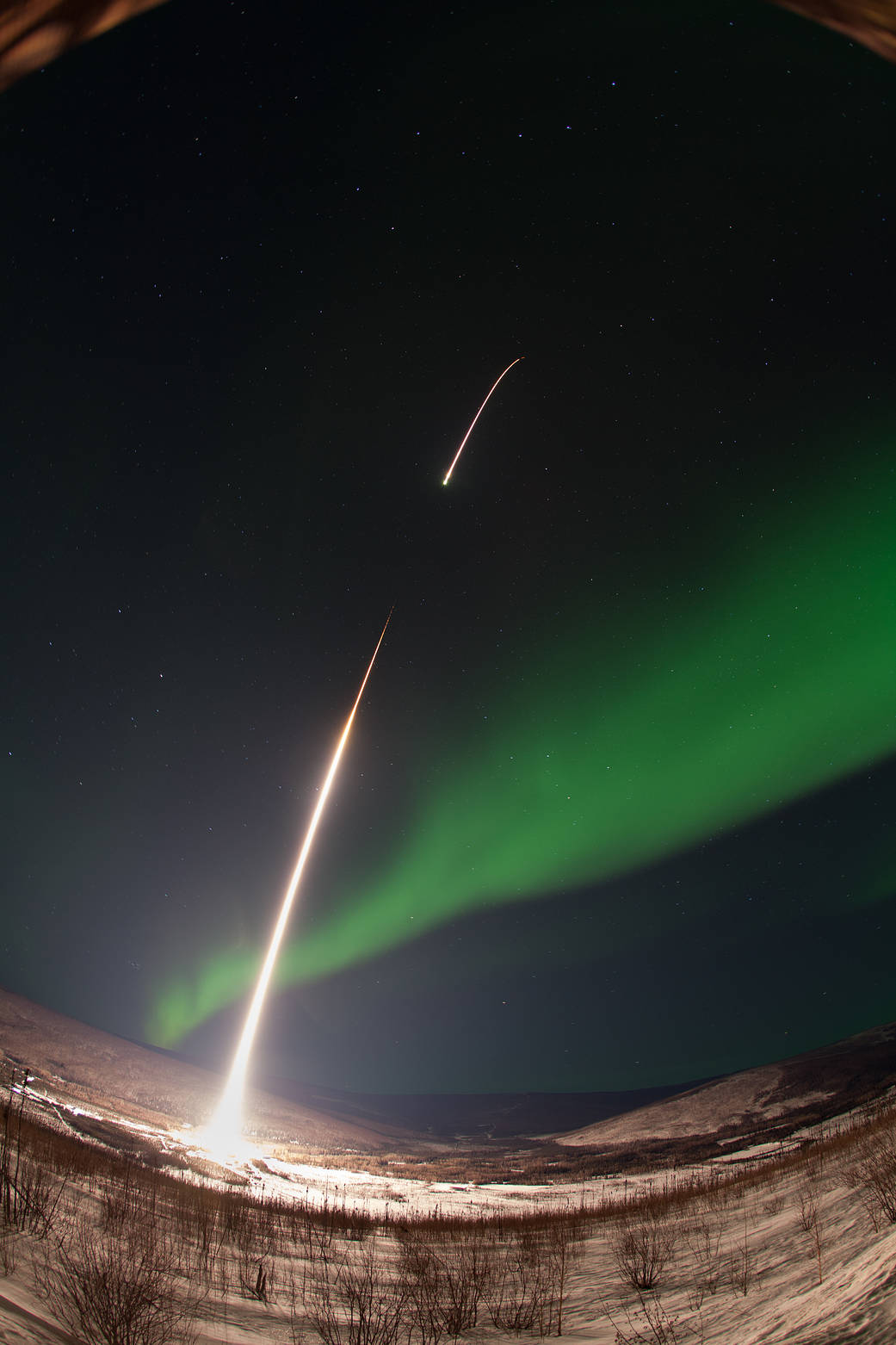
3. We didn’t believe Birkeland’s theory until 1967!
(Ok well maybe some people did.) Kristian Birkeland died in 1917 at the age of 49, and at the time of his death, many mainstream scientists did not believe his theory about the aurora. The difficulty here was that his experiments were costly, and it was believed that this theory could not be proven by ground measurements alone.
(It also didn’t help that it was the early 1900’s, and getting to space wasn’t an option yet.) Things changed in 1967 however, when the U.S. Navy sent satellite 1963-38C up into space. This probe carried a magnetometer above the ionosphere, proving the existence of magnetic disturbances, and therefore, Birkeland currents.
Like many scientific discoveries, the origin of the aurora was only made possible by the study of many, many curious people. Birkeland’s study was the next step here, but for him these hypotheses were made possible by the work of scientists like Anders Celsius and Olof Hjorter before him.
It makes you wonder what discoveries will be born of our curiosities now!
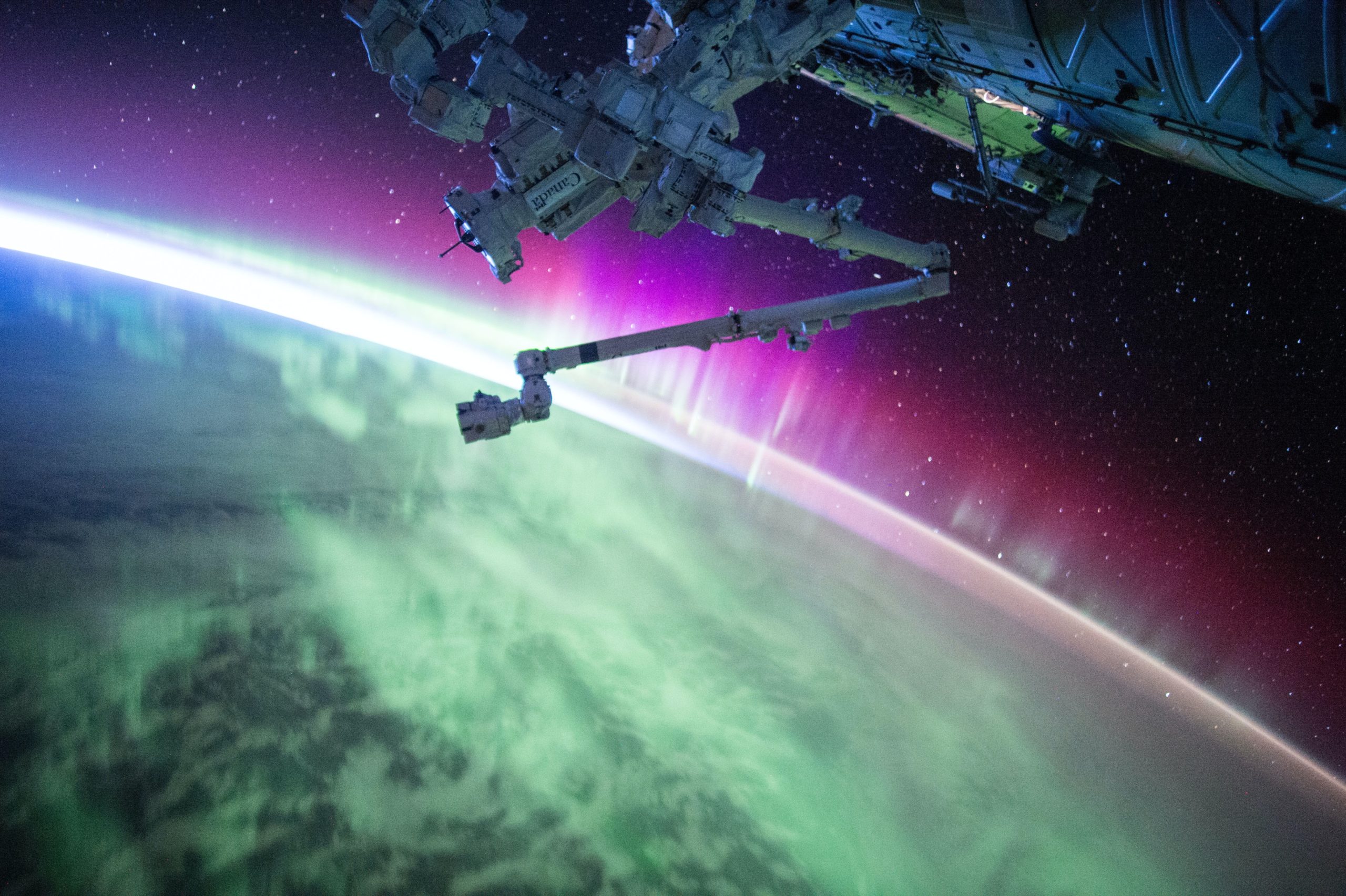
4. We continue to study the aurora.
Our quest for auroral knowledge did not end with that Navy probe, or with Kristian Birkeland. In fact, it proliferated. Citizen scientists have been hard at work monitoring space weather and collecting data on what they can see- and even NASA is hard at work filling in the blanks!
This is still very much a developing branch of science, and even as recently as June 2021 new data has been collected via NASA’s Magnetospheric Multiscale mission.
Satellites, sounding rockets, multiple study missions, and laboratory experiments here on Earth are just some of the ways that we are inching closer to a better picture of what creates our favorite light show, and how it can be affected by different factors that we have yet to fully understand.
Perhaps this study will far surpass our lifetimes, just like Birkeland. Imagine the strangeness of today’s facts becoming tomorrow’s misconceptions. The journey continues!
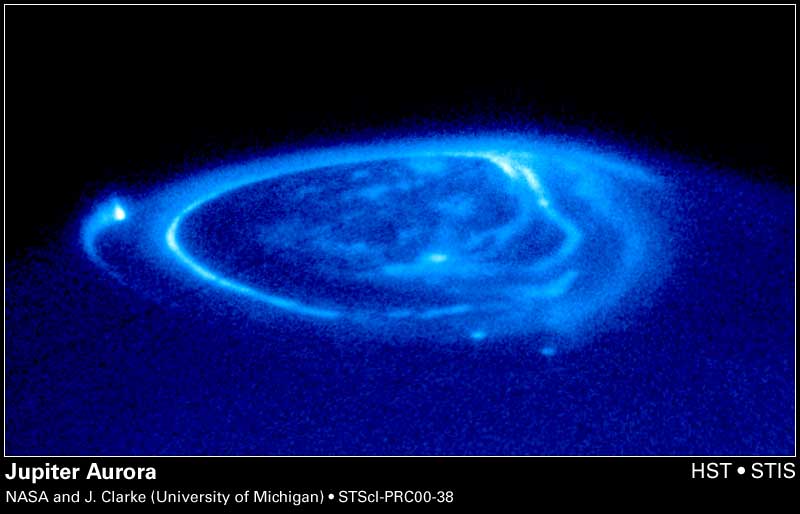
5. We’re not the only ones with auroras!
As you may know, there are two different areas on Earth where one can view auroras. There’s the Aurora Borealis in the north, and the Aurora Australis in the south. But now that we can see a bit further out of our own planetary neighborhood, we know that other planets host auroral light as well!
Because we know that the look of an aurora is caused by the atmospheric gases that it collides with, we can make a lot of inferences based on what we believe the atmospheric makeup of a certain planet to be. We now know that planets like Saturn, Uranus, and Neptune have auroras due to the interaction of solar wind with planetary magnetic fields.
We also know that nearby Mars and Venus have them as well, due to solar wind engaging with their atmospheres. Tools like the NASA/ESA Hubble Space Telescope and NASA’s Juno spacecraft have been able to not only confirm this, but also capture images of planets like Jupiter in full glow.
Just by seeing these things, we are able to learn more about how our sun functions, and how other planets are not just different from ours, but alike.
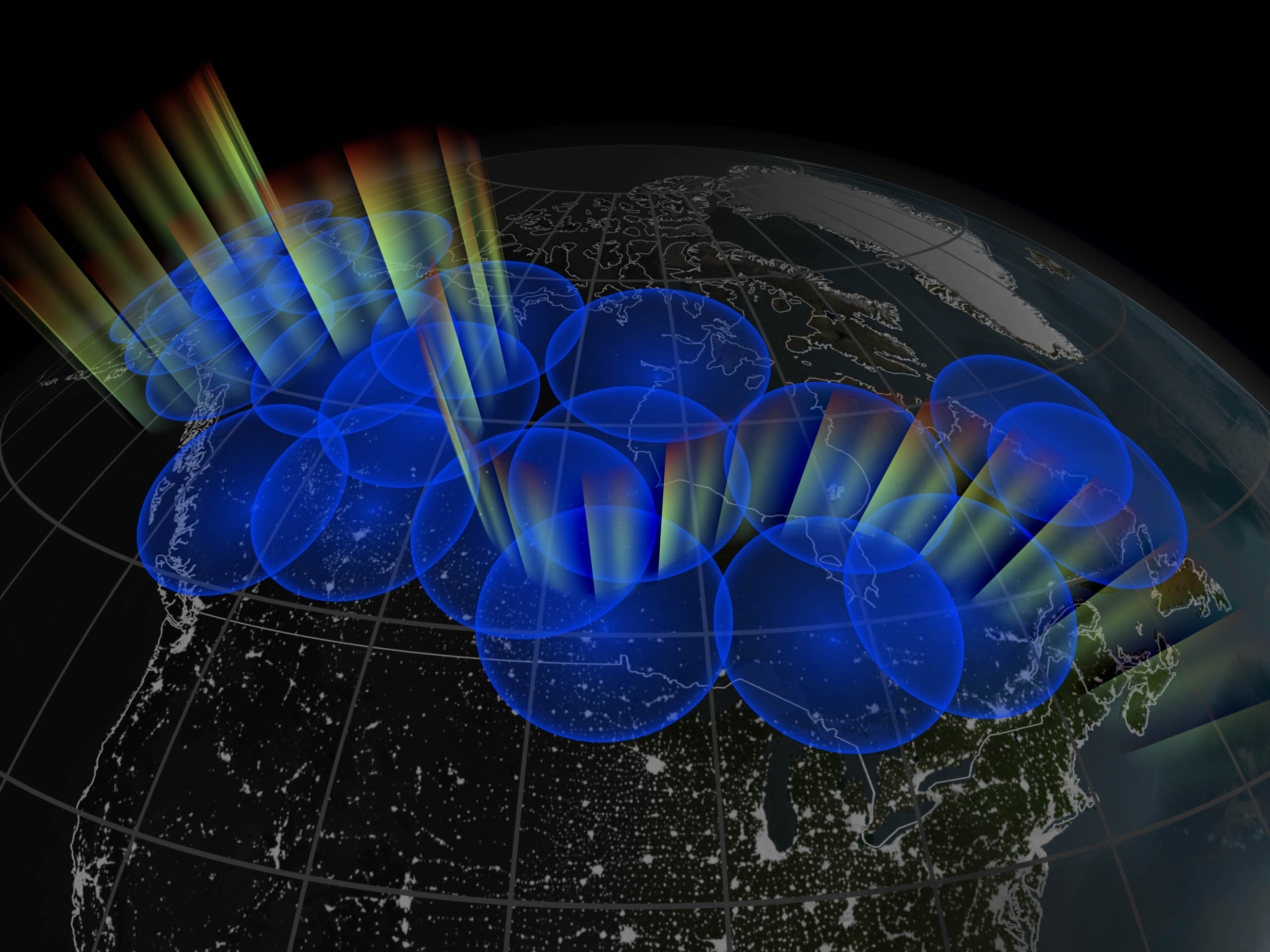
6. It isn’t just NASA making discoveries. Citizen science is at an all-time high!
Being on Earth in the 21st century is an exciting thing. There is more information available to us than ever before, and more accessible tools than we’ve ever been able to acquire. (It also helps that we are less likely to be burnt at the stake for pursuing a scientific theory. Maybe.)
And in that spirit of advancement, in 2016 in western Canada, citizen scientists made an incredible discovery. We know that discovery today as STEVE, or, Strong Thermal Emission Velocity Enhancement.
STEVE was originally named after a reference from the animated film “Over the Hedge”, in which the character’s named a hedge without knowing what it was. Early viewers of STEVE also weren’t sure what it was, so the name stuck.
STEVE is a pinkish “streak” that can appear in conjunction with auroral activity (often appearing as a spiky picket fence), and though we’ve actually been seeing it for centuries, it was never truly researched until this sighting.
STEVE is created by particle friction, which explains its incandescent color. It occurs closer to the equator than the lights typically do, and because of the collaboration of astronomical photographers and scientists, we were able to learn more a lot more about what actually causes it.
It just goes to show that there is always more to discover, and any one of us can lend a hand.
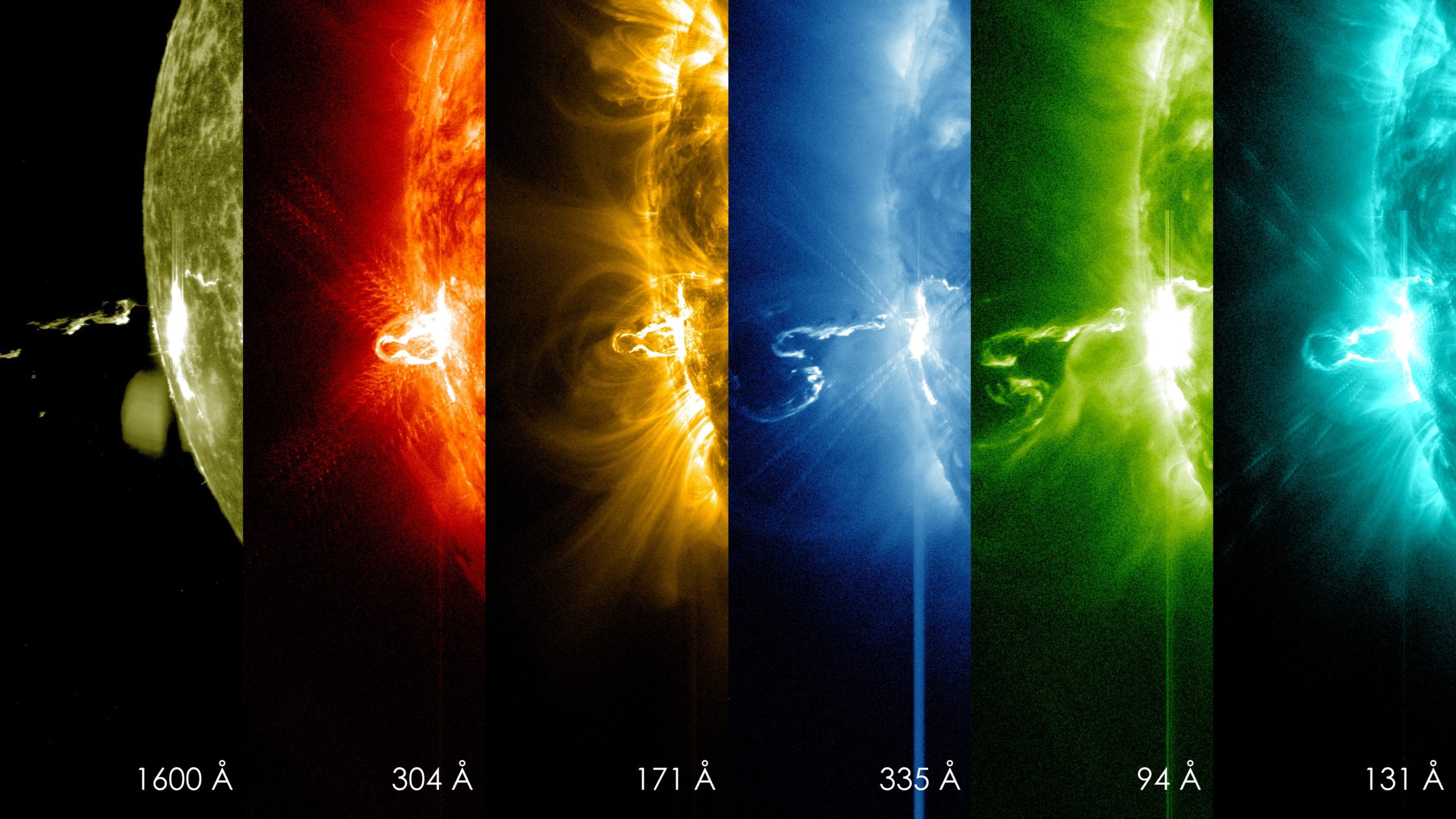
7. Auroras may not be dangerous, but space weather can be.
Though uncommon, space weather can disrupt us on Earth. The most dramatic record of this is the geomagnetic storm of August-September 1859, otherwise known as a Carrington Event.
Named for the British astronomer Richard Carrington, whose work helped to prove the existence of solar flares and their effect on Earth and the lights. When this geomagnetic storm happened, it damaged telegraph lines and injured the people working with them.
Technicians were shocked, telegraph papers were set ablaze, and lines were electrified. The Northern Lights were visible as far south as far as Hawaii and Cuba. On March 13th, 1989 a similar geomatic storm occurred, affecting the electrical grid again by creating a power blackout in Canada.
This event affected power grids in Canada, all the way down to New Jersey in the United States. Our electrical systems had updated a bit by then, so there were no telegraph papers to set on fire- just transformers to damage.
As you can see, these types of things are few and far between, but there are sources of information about how to prepare for similar events.
(Though, Carrington Events are not a common occurrence, and you are likely better served by preparing for the natural disasters that we see more frequently in our respective corners of the globe.)
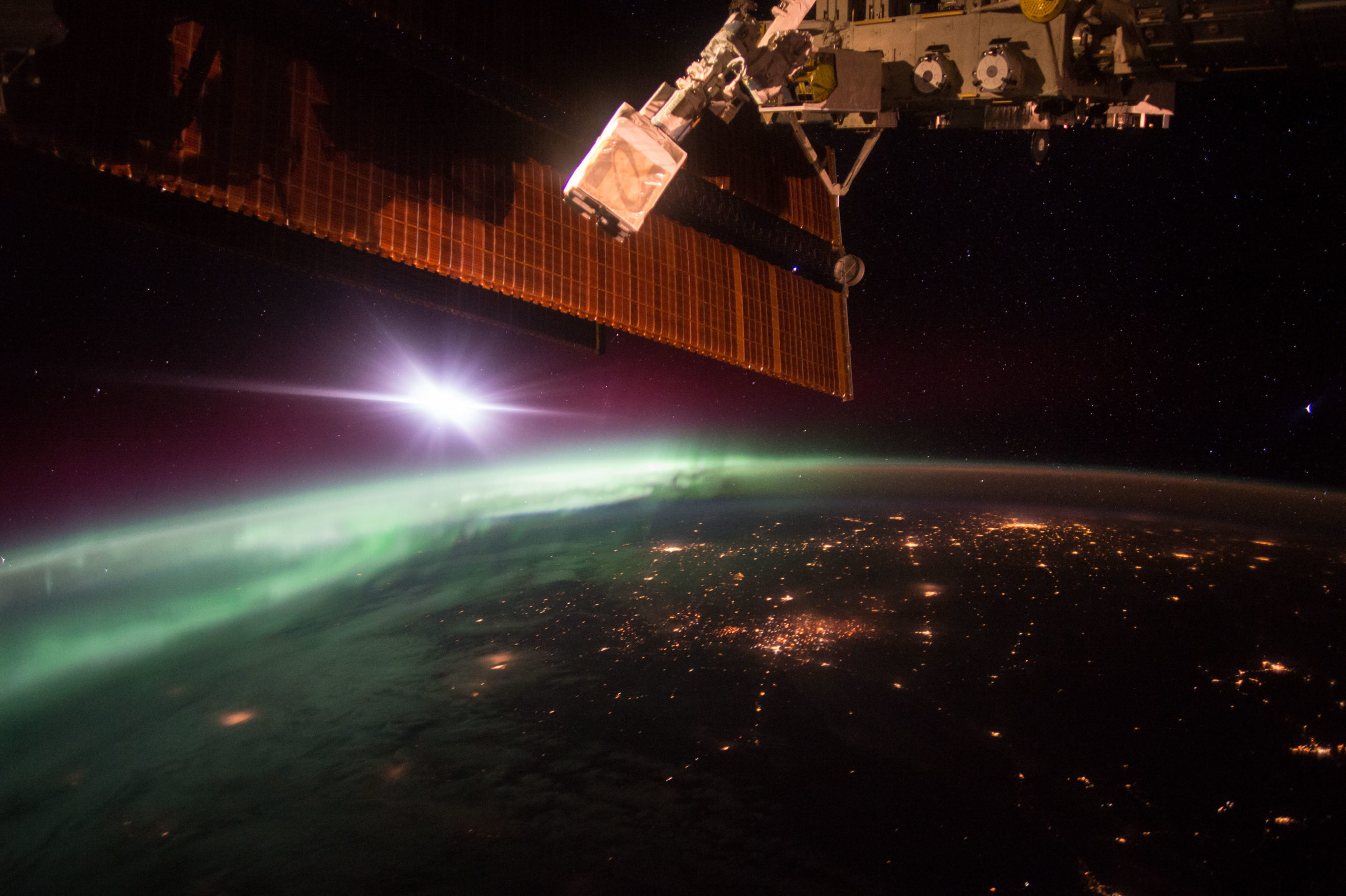
8. We’re not the only ones watching.
So we know we’re watching it, photographers are watching it, citizen scientists and space weather enthusiasts are watching it- but who else? It turns out there are a lot of student researchers and working astronomers keeping tabs as well!
Researchers on the THEMIS mission under NASA’s Explorer Program used satellites in 2008 to find out what causes movement in aurorae. In 2016, The ESA’s Sentinel-3A satellite danced right through the aurora after a launch.
There are countless aurora and space weather observatories throughout the world, and even the astronauts in the International Space Station are up there looking down on the dancing lights.
Sometimes, there’s even a chance to watch together in programs like #AuroraHunters, hosted by the ESA and the Norwegian Space Centre.
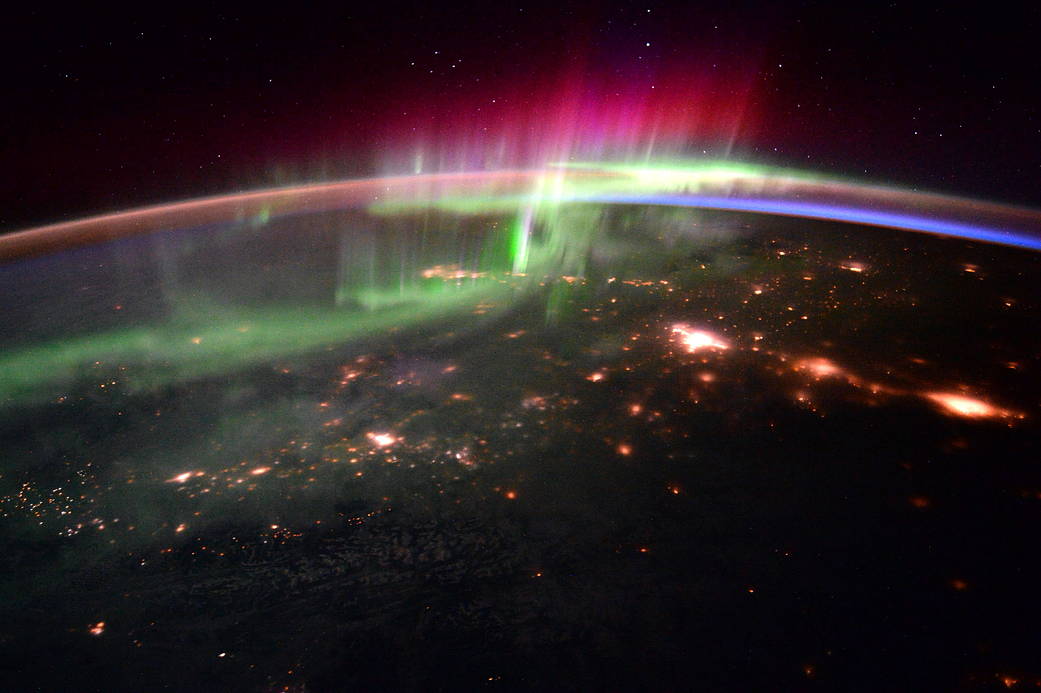
9. They’re pretty high up there!
The Northern Lights are a unique combination of space weather, and Earth’s magnetic field- so where exactly do they happen?
An average auroral occurrence can occur as low as 80-100 km. above Earth.
This doesn’t sound like much, but if you think about it, airplanes only fly about 10 km. above us, and Mount Everest only reaches just under 9 km.! Depending on varying factors, the aurora can reach as high as 500-1000 km. above Earth, which means that it has some interesting neighbors in the middle.
One of which is the International Space Station, sitting at an orbital height of 408 km, and height neighbor Tiangong Space Station, who varies between 340 and 450 km.
Because of this, cosmonauts in either station could one day look out the window and see the lights around them, instead of below or above. Keep an eye out on their socials to see the amazing captures that they make!
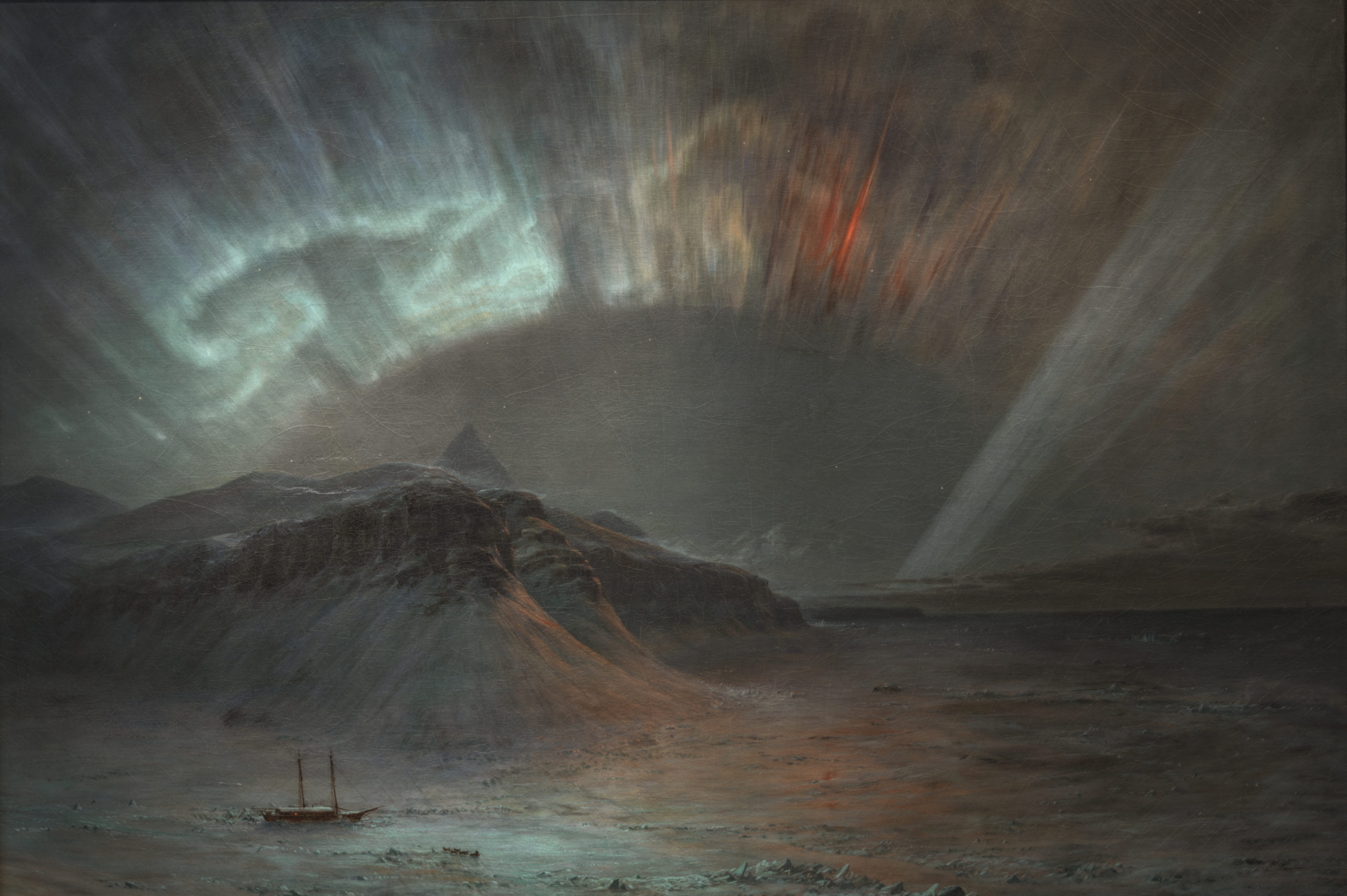
10. Before we could photograph the lights, there was art.
Our ability to photograph and film the lights has been such a recent advancement in the long timeline of human creativity. One could say that the accessibility of this art continues to grow even now, as SLR cameras become easier to get, and smartphones get.. Well, smarter.
We have drones, phones, tiny waterproof cameras, and all kinds of things. This method of capture creates amazing work, especially due to the camera’s ability to process low light better than our limited human eyes. But before this technology, there was still art and the drive to capture this beautiful thing.
Thousand upon thousands of works depicting the lights have been made, but one of the earliest comes to us from Cro-Magnon cave paintings around 30,000 B.C.
There are works referenced from early China and the belief that the sighting of Northern Lights may have become entwined with belief in great supernatural dragons.
There were many painters in the more mobile days of the late 1800s like Danish painter Harald Viggo Moltke, and American painter Frederic Edwin Church, two individuals inspired by their experiences on Arctic expeditions.
Today we continue the tradition with thousands of technological installations, museum exhibits, handicrafts, and more. As we learn more about this incredible gift of nature, it seems, so does our curiosity and our devotion to its existence.
Perhaps the one thing over time that has never changed. Fact.
When can you see the Northern Lights in Iceland?: 5 useful tips for planning your adventure
"When can you see the Northern Lights in Iceland?" is the question on the tip of everyone's tongue. The minute you step off the plane in the land of fire and ice, it's time to start looking up. Or is it?
What are the Northern Lights?
Before we get to the “When can you see the Northern Lights in Iceland?” half of the show, let’s talk about what we’re actually looking for. In a country of natural wonders, the Northern Lights are one of Iceland’s greatest treasures. A phenomenon based on volatile space weather, the Aurora Borealis happens when solar activity from the sun travels over our planet and collides with our magnetosphere. This meeting of forces gives some of the super-charged gas in the solar storm an opportunity to travel down the magnetic field towards the poles, creating another collision with oxygen and nitrogen pockets in our atmosphere.
This clash creates the colorful visual byproduct of the aurora- an accidental gift of the cosmos. Because this is a polar occurrence, it takes incredible strength for the storm to grow large enough to travel closer to the equator from the pole, which is why we primarily see the aurora in very northern or southern lands.
Every so often we get lucky, and the sun sends a sizeable storm, giving us the rare chance to view the Northern Lights from places like North America and continental Europe.
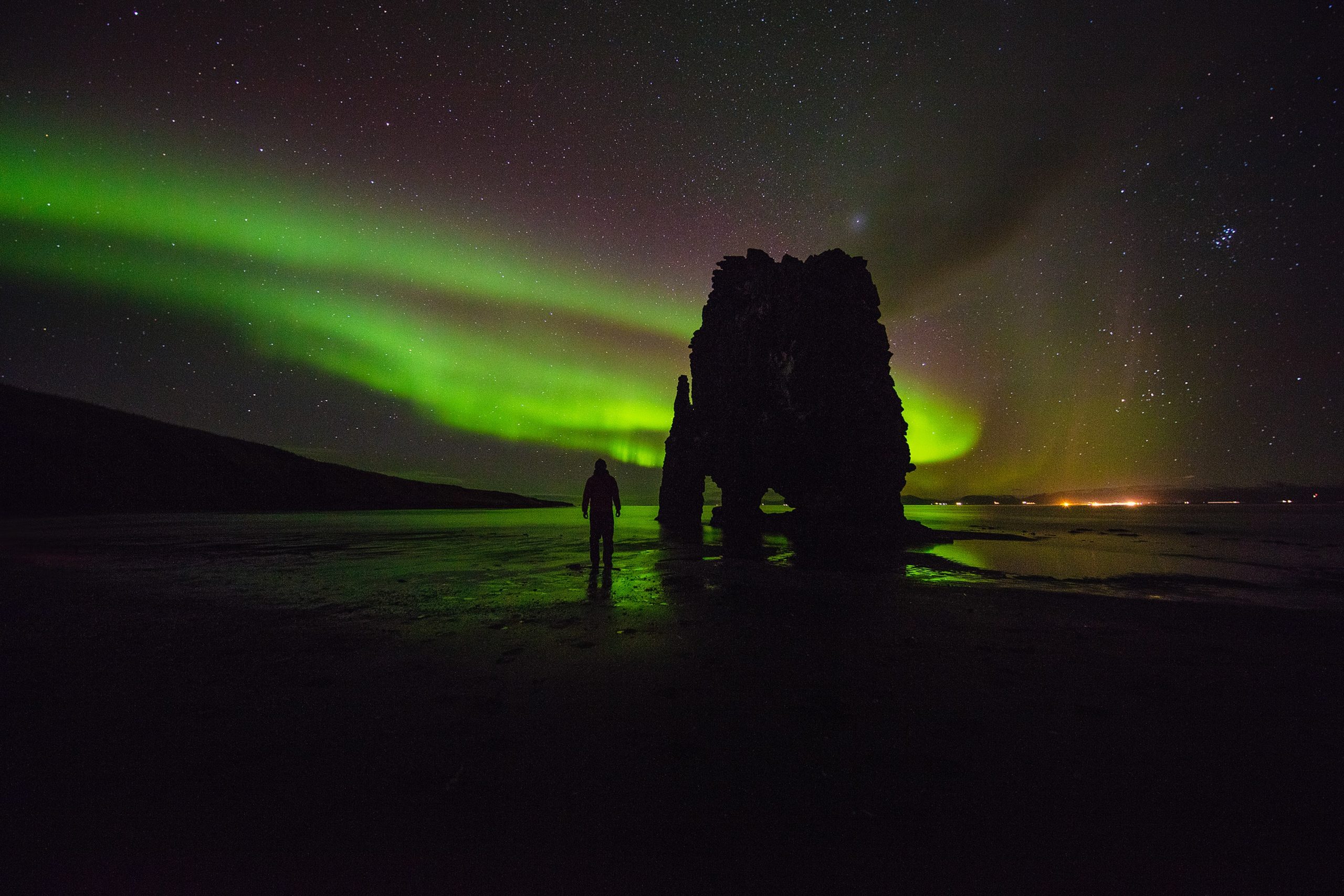
Life under the polar light cycle: Choosing the right half of the year
Planning a northern lights vacation can be challenging, as nature tends to run on its own schedule. A good place to start, is to know which half of the year is aurora season in Iceland.
Because polar lights happen far above us in space, it is possible for them to occur at any time of year. Many people mistakenly think that they are related to cold weather, but, luckily this is not the case. Because of how the Earth tilts in its orbital path, the winter season in countries around the northern pole coincides with shorter days. You may have a similar light cycle situation during winter in your home country.
In a country closer to the pole, this light cycle is a bit more exaggerated and can result in days where the sun does not rise for a period of time. Iceland’s winter light cycle is not quite as extreme, but due to this trade-off, we experience a surplus of daylight hours in the summer and a surplus of dark hours in the winter.
This means that in the summer, it is much too bright for us to pick out auroral activity in the skies. There may be solar activity and auroras happening, but we would be unable to see them. Despite their appearance, we require solid darkness to view an aurora from Earth. (If you’re riding along on the International Space Station, however, you might be one of the few people that could view a July aurora!)
But for those of us down here planetside, we must wait for optimal darkness to be able to pick out auroral activity with the naked human eye.
The Northern Lights occur at a low lumen, so sometimes even a weak occurrence can be hard to pick out in perfect conditions. (A good camera can help you out with this, as the camera’s vision capabilities are not quite so limited in darkness.)
Fortunately, this extreme light cycle buys you an entire half of the year to plan a Northern Lights holiday in Iceland- which gives you more time than you might think.

August to April: The Auroral Season
Because of this light cycle, the Northern Lights season in Iceland runs from August to April. August is very early in the season, and typically we access amenable darkness by the end of the first week. However, if you are planning a vacation, it is recommended to wait until the end of August for optimal conditions.
The end of the first week of August is the earliest we have seen an aurora, but it is not generally expected and would be a risky time to plan a trip. In recent years, tours have started mobilizing for their aurora seasons at the middle to end of August, with some starting as late as September.
This August to November time frame puts you in our autumn season. Not a time typically associated with auroral viewing, the transitional seasons like fall and spring are phenomenal times to hunt for Northern Lights. These are moments in the year where colorful changes are occurring in the countryside, and often, low traffic among visitors.
These are some of our favorite times to look for aurorae, particularly because there is milder weather, manageable light for other outdoor activities, and gorgeous scenery. As you can see, the auroral season runs all the way to April. In Iceland, April is traditionally considered the beginning of the summer season (if you can believe it), so the same rules that apply to August apply here.
If you are interested in a spring aurora hunt, you will want to be careful of booking too close to April, as mid-April is too bright for aurora viewing typically. In a lucky year, professional photographers have managed to grab some surprising shots throughout April, but this would not be advisable for someone that is planning an aurora trip.
The month of March is often quite good throughout, weather permitting, and people have been known to get lucky in the very beginning of April. Once we near the middle of April, the island moves over to summertime in earnest, and the midnight sun begins to return.
This gives you quite a spectrum of time to hunt for auroras, and this season spans autumn, winter, and even spring. This means that you can tie your aurora aspirations together with additional activities, like horseback riding, hiking, ice caving, or even skiing.
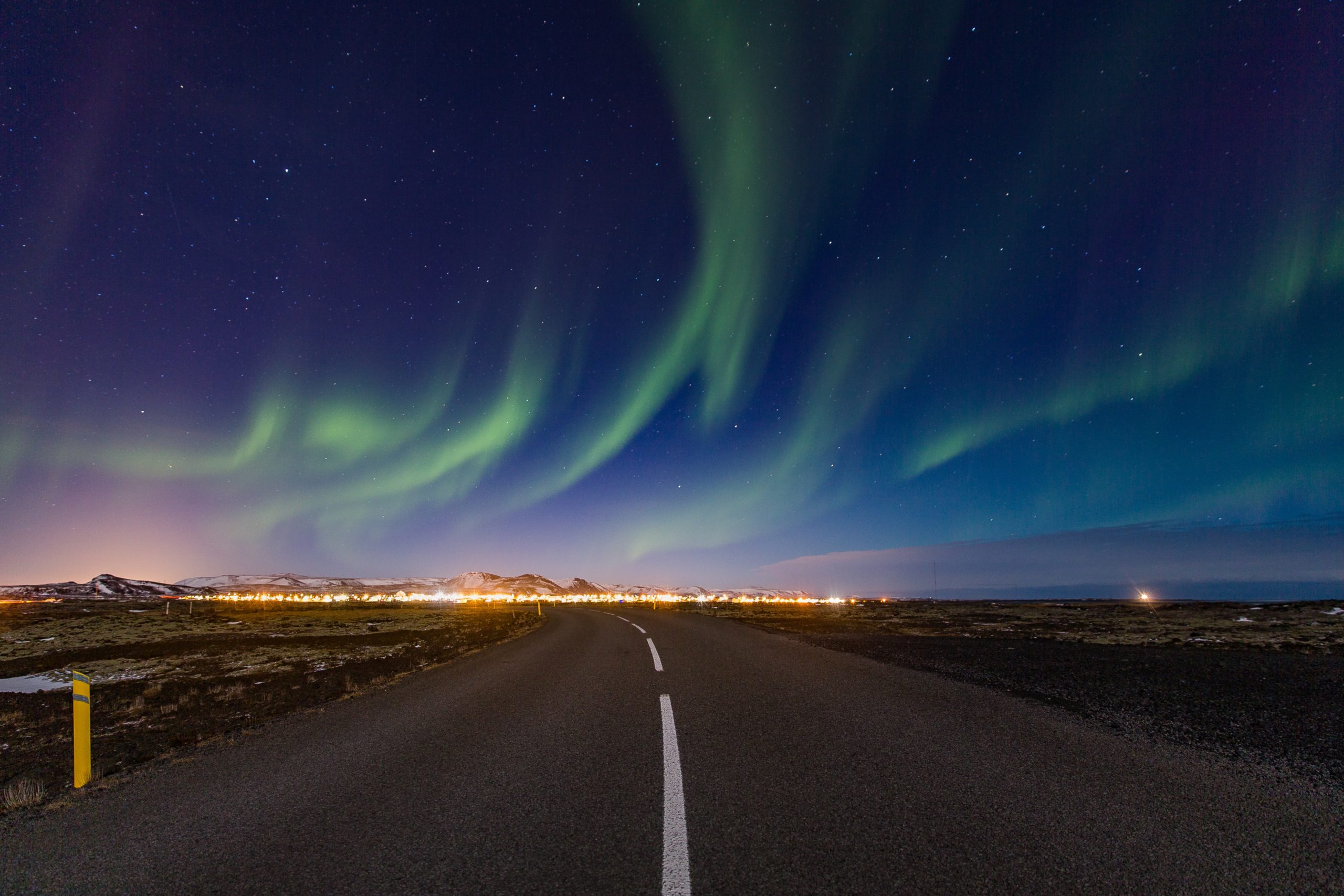
"Hello darkness my old friend": Aurora watching under the cover of night
You’ve got an entire half of the year to plan your trip in, but what time does the aurora show up? This is another popular question, and the answer does change a bit depending on the time of year that you visit. For folks visiting earlier or later in the season closer to autumn and spring, you’ll find that there are fewer dark hours available for hunting.
In Iceland, you are losing or gaining minutes of light every day, depending on if you are moving away or towards midsummer or midwinter. If you’re visiting us before December, you will be losing 3-4 minutes of daylight on average every day.
After midwinter, you start to gain those minutes of daylight back. If you stay with us for a week, you might even notice a difference by the end of it! Because of this, you will find that guided experiences start a bit earlier (closer to 8:00 PM) in the autumn and spring, and a bit later 9:00-10:00 PM) in the winter months.
Like all aurora figuring, this can vary on the occurrence itself. A powerful solar storm may cause a brighter visual manifestation, thus making it possible to view earlier in the evening. However, despite the fact that you’re watching in the correct half of the year, we still require this high-quality nighttime darkness for visibility.
This can be a confusing detail, especially if you’re visiting us in December when the sunrise is closer to 11:00 AM and the sunset is nearly 3:00 PM! One might think, “If the sun has set by 4:00 PM, why can’t I see the aurora already? Isn’t it night?” Despite the early setting of the sun, we do still cycle through steps of “twilight”, or “dusk”.
You may be familiar with this if you enjoy maritime sports or navigational pursuits like flying or sailing. So despite all this extra darkness in the high point of winter, we still wait for proper nighttime in the later evening. Averages for optimal visibility may vary per person, but typically we can expect that on a good night our window will be around 10:00 PM to 1:00 AM.
Can an aurora happen outside of this time frame? Absolutely! On a phenomenal night, you might catch one at 8:00 PM! And likewise at 3:00 AM! The excitement of this phenomenon is that no two aurorae are ever the same- and neither are the experiences that lead you to them.
Like many sciences, very few things are permanently definite- so if you feel that you have exceptional darkness, clear skies, and a forecast indicating solar activity, have a look! These things do tend to sneak up on you when you least expect them.
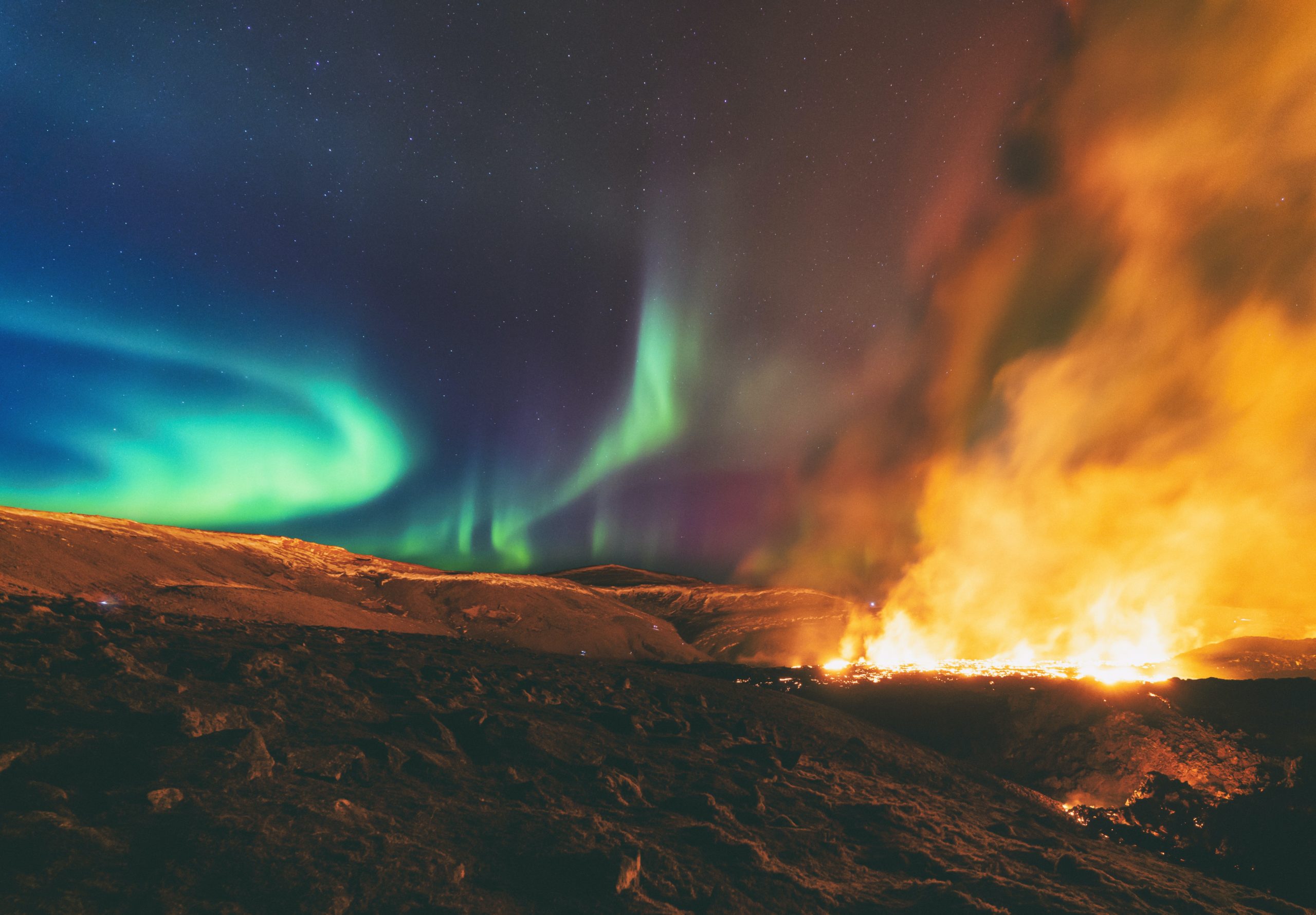
The right place at the right time
So you’ve got an idea of when the Northern Lights can be seen in Iceland, but where should you go? Where can you see Northern Lights in Iceland? The truth is, there is no singular good spot.
This is lucky for us in a way because it means we’ve all got a fair shot, no matter where in Iceland we’re watching from. As far as darkness goes, it is advisable to move away from light pollution if you can. The greatest centers of light pollution in Iceland are still manageable enough for auroral viewing, and won’t impede you to the level of a massive metropolis- but if you can find yourself a patch of true dark your vision will adjust better and your viewing experience will be improved.
Watching near a streetlight or a house can make low light photography a bit harder to balance, and it can also cause your eyes to struggle with adjusting to their own night vision. When viewing a similar auroral occurrence, people in a brighter area may report seeing less of the aurora, or a dimmer or less vibrant color.
In a truly dark place, your eyes will be able to pick up some of the finer pieces and “shards” of the occurrence, and typically be more successful at discerning the color.
If you’ve got a camera, don’t forget to snap a few low light shots- you’d be surprised how much better the camera’s “eye” sees compared to our own! When looking for a good spot to wait for the Northern Lights, you’ll want to consider cloud cover. On an auroral forecast, you can see that the cloud map is an integral part of finding out if you’ll be able to view activity or not.
Because the Northern Lights happen above our weather system, we miss out on any light shows that happen on cloudy evenings. The good news about this is that cloud systems can move quickly over us on a windy night, not all areas will have the same weather, and even forecasts miss tiny windows of clarity in the sky.
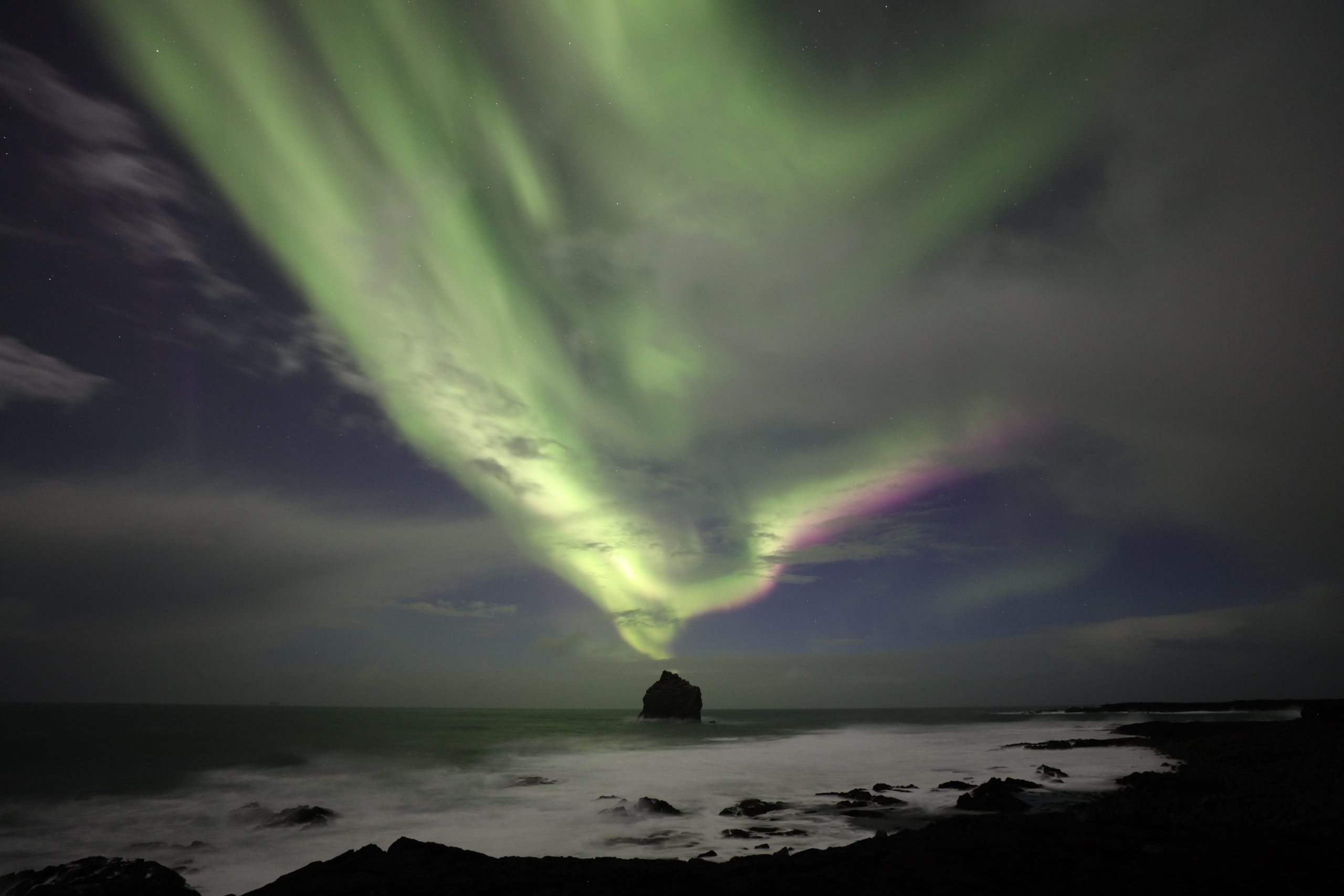
Sometimes these holes in the cloud layer are all we need to glimpse the glow- but many great activity nights have been canceled over a thick layer of cloud cover. If you’re in a vehicle and you’re able, it can be helpful to watch the forecast to see where areas of clarity may be located.
If there are clear skies around your location, you can head in the general direction of that clarity. In fact, many guided experiences will do a similar thing and will plot their course that night based on where the clarity is expected to be.
This is the best way to choose a spot, and the travel time that you spend on the way to the clear skies may also prove lucky. Covering ground and exposing yourself to different areas of the sky can be helpful since a large portion of aurora hunting is the waiting.
The longer you’re out in the dark under clear skies, the better your chances are. Because of the importance of clouds in this equation, it can sometimes mean just heading out on the road that leads in that direction. If you’re interested in finding a spot to wait in, we recommend looking for landmarks of natural importance along the way, or national parks.
Parks can be a great spot to watch from because they are designed for spectating and parking your car safely (unlike the side of the road), but be warned that many others may have the same idea. Be careful not to pull over to stop your vehicle in an unsafe location to watch! Country roads can be dark and narrow, and they do not always have a shoulder for pulling over.
It’s exciting when an aurora happens upon you in the car, but being safe and waiting for an approved pull-over location is the safest way to enjoy this gift of nature.
However, you don’t always have to be on the road to catch the Northern Lights! There are a few spectacular hideaways in Iceland just for this very purpose, where you can be cozy, alone in nature, and waiting in a perfect dark location.
For those that want to try the most comfortable hunt around, we recommend the Northern Lights igloo. Lay back on a down comforter in a heated bubble and have a drink? We can hardly think of a better way to spend the night. (Or a better photo op!)
Iceland northern lights season: the most wonderful time of the year
In Iceland northern lights season is a magical time. But when do they actually happen- and when’s the best time to come see them?
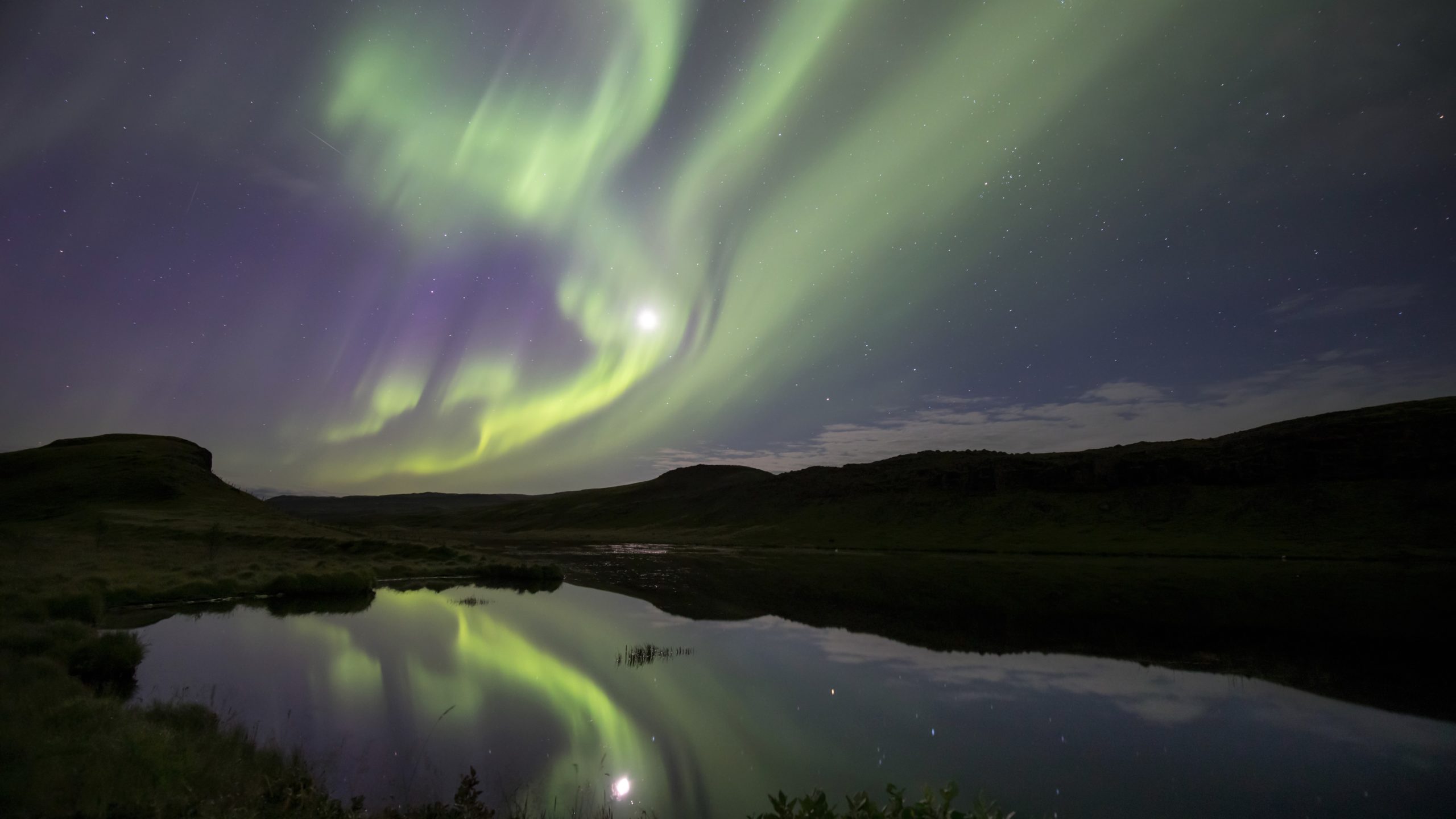
The two halves of the year
Most of us know about the four seasons and the special relationships that different places can have with them. There are dry seasons, seasons that bring great storms, and times when amazing blooms and colors transform the land. You’ve seen it in autumnal leaves, avenues of cherry blossoms, fields of fruit, and grasses that grow ten feet fall! Seasons were our clock before we had a better way to count the time- and here in Iceland that is truer than most.
If you’ve had the chance to visit Iceland, or any country in proximity to the poles, you may have already experienced the extreme patterns of light that I’m referencing. Tales of the ethereal “Midnight Sun”, or endless days of darkness that see no light. The closer to either pole you get, the more severe this pattern becomes.
Because of the tilt in the Earth’s axis, the polar regions of the Earth find themselves much closer to the sun in summer, and much further away during winter. As you move closer to the equator, many countries further down feel the echoes of these shifts in light as well. Some, even further north than Iceland, feel it even more.
You can see what the annual sun graph of Reykjavik looks like here. It’s a great way to get an idea of what the light will be like when you visit. Try it for your home, or a city far away from you. It’s amazing to see how differently we experience the world- even at the same time.
The Icelandic settlers of old had to balance their survival with this harsh cycle- and created a calendar to help them manage their livestock, their crops, and their morale. This old calendar still has bearing on society today, and its holidays are still beloved as reminders of the natural progression of this place, in a way that the modern global calendar sometimes is not.
This calendar was based heavily around solstices and equinoxes of the year, and with its 12 months it splits the year into two halves. These halves were the summer/nattleysi, or lack of night, and the winter/skammdegi days, or short days. All of these were checkpoints in the arc of time, and were visible and even ways to mark its passage in a place where it often felt as if there were only two seasons to measure.
It was a difficult life for the settlers, and surviving the winter was a cause for great celebration. You can tell when the local populace felt the breaking of winter at the end of April- because that is traditionally when Iceland marks the first day of summer, or sumardagurinn fyrsti. This is a national holiday, and it is celebrated on the first Thursday after April 18th. This is a day of festivals and merriment, even though it may not seem very summer-like in temperature or appearance. But for Icelanders, this day marks the end of the long dark, and the beginning of the lengthening of days.
At one time, it meant the increased likelihood of survival, and days where one could work, craft or read without the obstacle of losing the light.
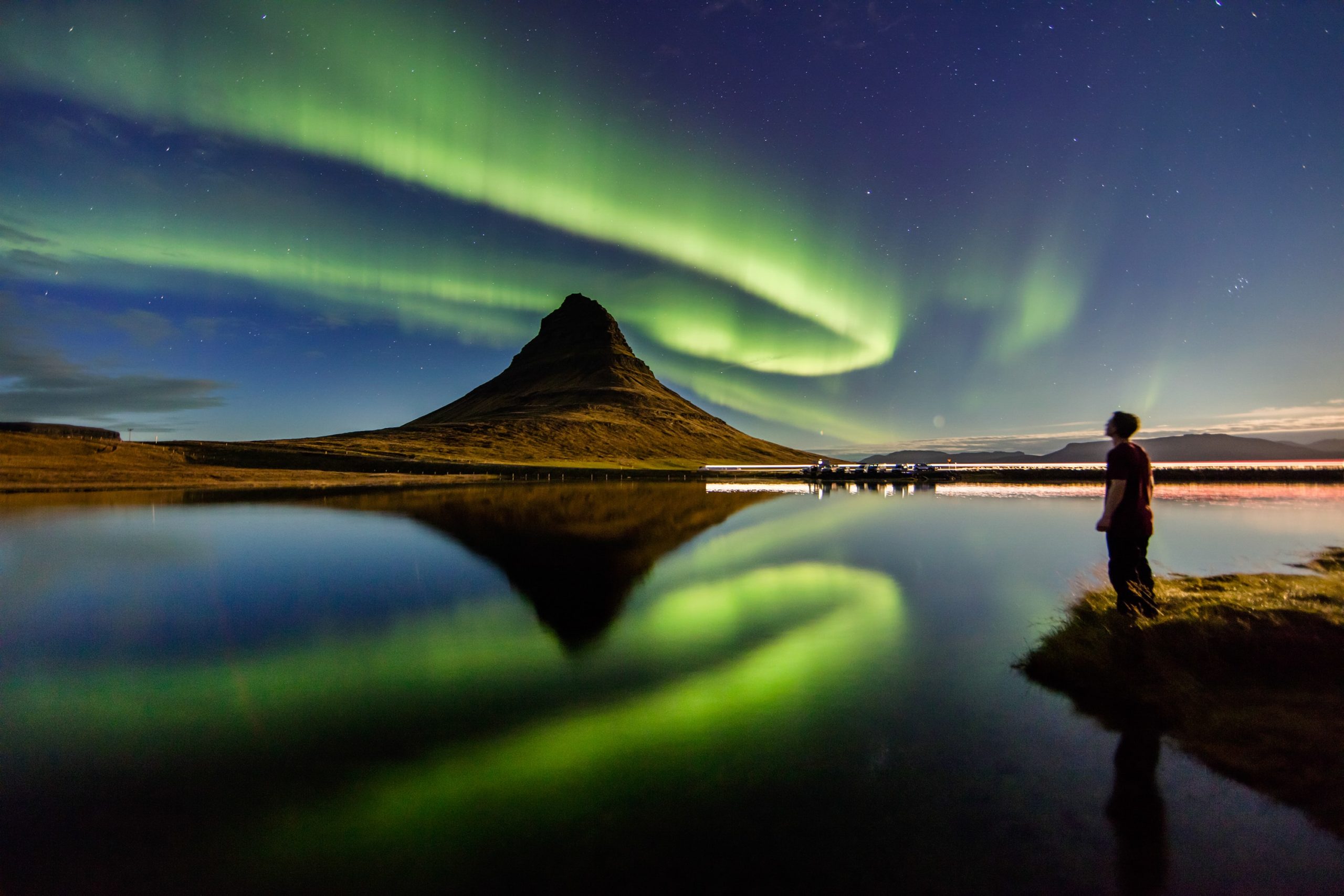
So where do the northern lights come in?
We know a little bit now about Iceland’s age-old relationship with seasonal time, light cycles, and surviving the harsh winters. But where do the northern lights come into all of that?
To give you the short version- the northern lights themselves can happen at any time.
They happen so far above our planet in space, that temperature, season, and time don’t mean too much when it comes to their arrival and creation. The first thing to realize about the aurora, is that it is a function of space weather before all else- but seeing it does require a little bit of cooperation from our own Earth weather, as well.
When an aurora is born, it is due to the sun releasing a solar storm into outer space. You can read more about that process here. We can track these storms to an extent because of the orbital patterns of the sun and the reappearance of sunspots, which more regularly release these strong systems. However, our ability to measure and predict space weather is still very much a developing science, and can be imperfect at times.
Despite all of that, the sun is releasing this energy all the time. Depending on the solar cycle and factors facing the travel of solar storms, this activity can find its way to us at any time of year, in any season. This means that it’s entirely possible for solar activity to arrive in our atmosphere in the middle of summer, or during the brightest point of day.
The difficulty here is actually with us. Auroral light is a visually delicate natural phenomenon, despite its volatile origins. To see it with the naked eye, we require darkness in order to pick up the low lumen light that it creates.
(An additional difficulty here lies with us as a species, because of how we perceive color visually in dark places. Because we are not nocturnal, our eyes are not designed to process color as well at nighttime, and so it’s already challenging for us as creatures to look at this type of light.)
Which is where we circle all the way back around to our first point- and Iceland’s dramatic dark and light seasons.
If the aurora arrives in the high point of summer when we experience only civil twilight, we wouldn’t be able to see it. It would technically be there, dancing and possibly displaying incredible colors- but we would only be able to see that from space at best. (And sometimes, NASA sends us a video of it!)
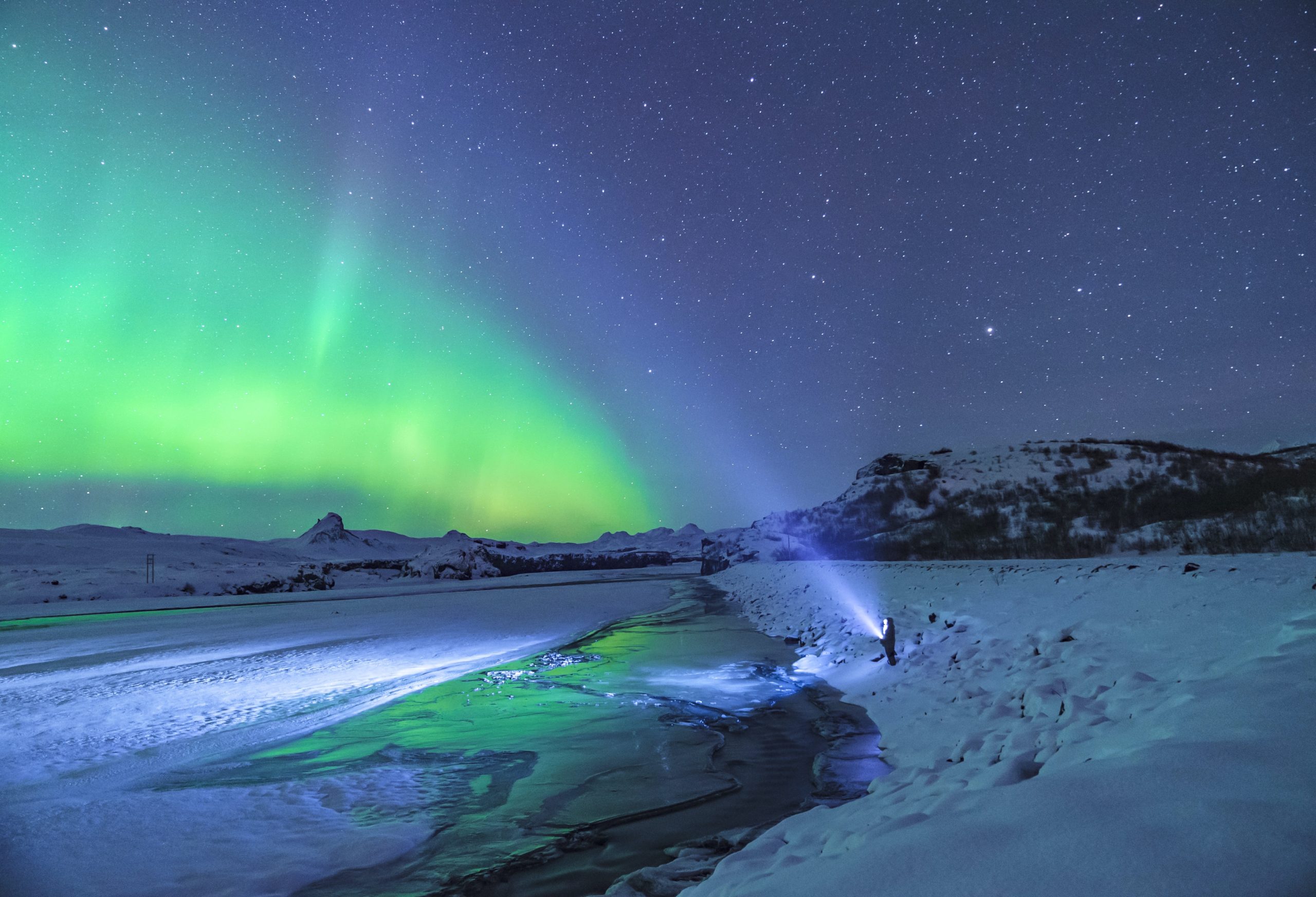
The same situation happens for us during the daytime, even in the winter months. Even though we only have a few actual hours of daylight, we still require the solid darkness of night to bring forth the best canvas for auroral glow.
Can we start our hunt earlier in the midwinter? Definitely! We can start heading out as early as 7 or 8pm on some nights, a thing that would be rather difficult to do in the earlier days of the auroral season. But we do still require that deep darkness of nighttime.
In Midsummer and Midwinter, we start to lose or gain minutes of sunlight. This means that once we hit Midsummer, we begin the ever-increasing trek to winter darkness. We don’t always notice this right away, but typically once we reach August, it becomes dark enough to witness the spectacle of northern lights.
For me, the earliest I have seen them was at the end of the first week of August. This is only the beginning though, and so I would likely wait until a bit later in the season (late September at the earliest), to plan a trip.
This darkness builds every day until mid-winter when we start to gain the sunlight back. This typically means that we can witness auroral light until the very beginning of April, though March is the popular cut-off. (Similar to August, April would be the very tail end of the possible season- and would be a risky time to book an aurora hunt.
Though, there are quite a few intrepid photographers that catch them that late in the year, with lots of practice, lots of experience, and a tiny bit of luck. It is, of course, Lady Aurora herself waving goodbye for the year- she loves a dramatic exit.)
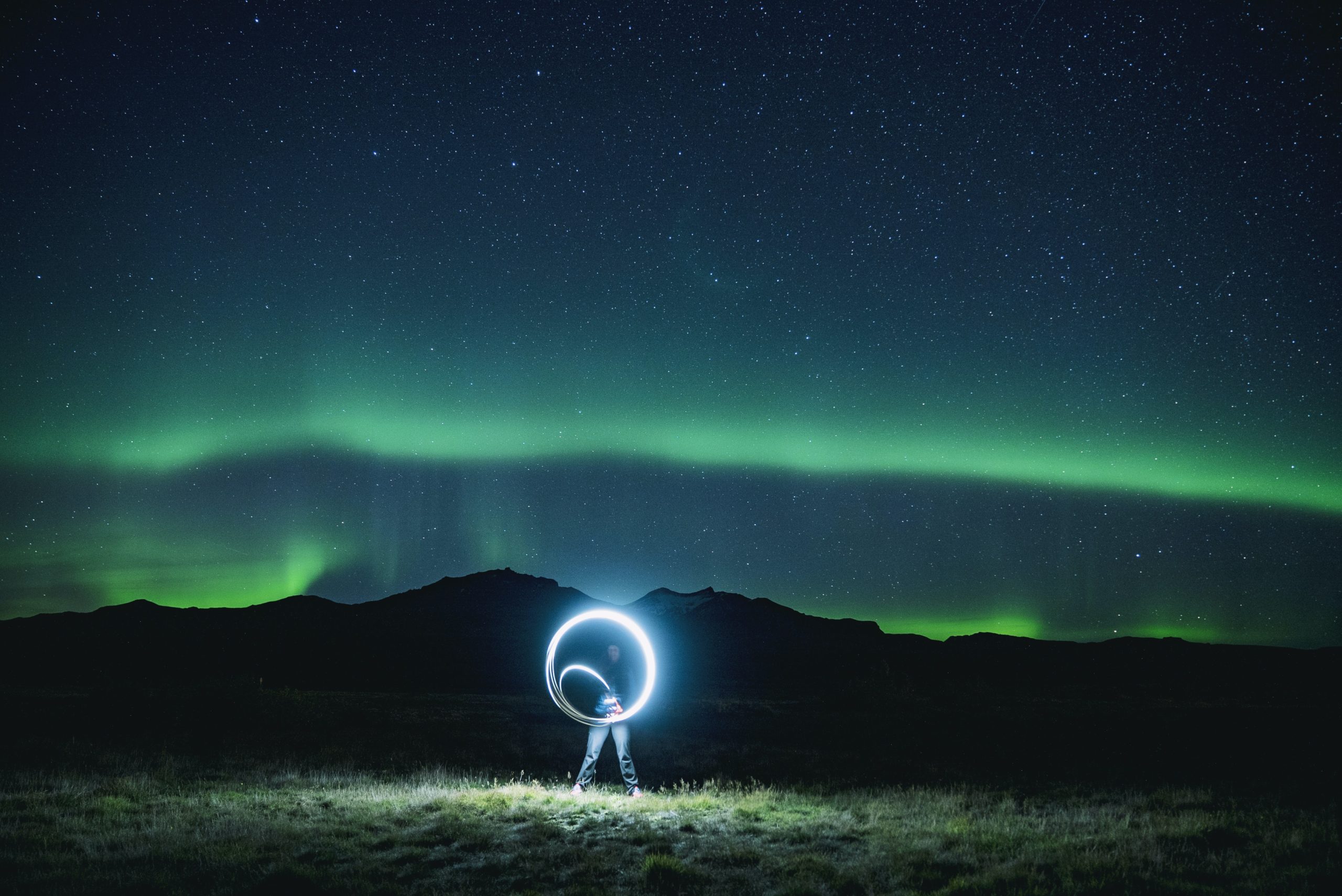
Some materials do talk about the ‘daytime aurora’, and this is not an incorrect statement. There are many places further north than Iceland (like Svalbard for example), that have an even more extreme sun graph than we do. (Though you can visit Siglufjörður, where they celebrate the first day that they see direct sunlight again.)
Places like this may not actually see the sun at all for quite some time- and maintain the ability to see northern lights for a longer period of time because of that. In addition to the extended dark hours during the day- they are also closer to the pole. Proximity to the pole can mean that they catch more of those low-level auroras that don’t travel very far out.
So don’t fret! The truth of the matter is that you have a whole half of the year to hunt for auroras in Iceland, as our forebears might say. (And for the other half of the year, you have puffins, endless lupine fields, and all the sun you can handle!)
But what about the weather?
You know about the Midnight Sun, the space weather that makes auroras, and the half of the year when we finally get enough darkness to see them. But what about Earth weather?
Earth weather does not interact with the northern lights, because it exists in the troposphere layer of our lower atmosphere. This is where most of the clouds in our atmosphere are located. It is sometimes said that extreme weather (things like polar vortexes and massive storms) can occur as far up as the stratosphere, but this is not entirely accurate. The stratosphere is particularly dry, and lacks the moisture to regularly create clouds, like the more humid troposphere.
To give you an idea of scale, these layers of the atmosphere combined are nearly 50 kilometres above the Earth. And still, it’s not high enough for auroras.
Auroral activity occurs in the ionosphere, a section of the atmosphere that overlaps the mesosphere and the thermosphere. This is an area of the atmosphere where a great deal of electrons and ionized atoms and molecules occur, thus housing a key part of the collision recipe that makes the visible aurora.
This means that myths about temperature and storms don’t necessarily hold true, and they don’t inhibit aurora activity. They do however get in the way of our viewing path.
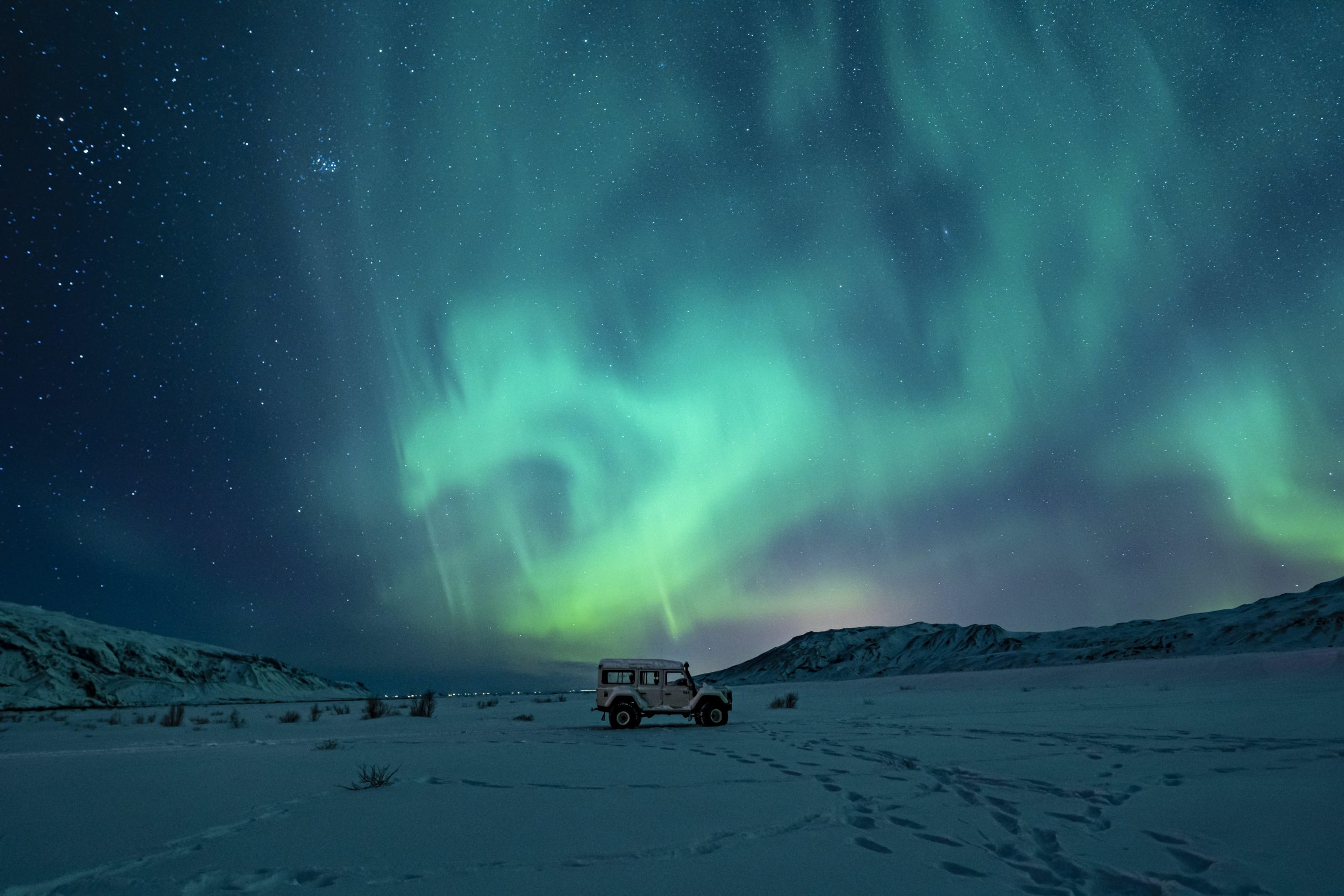
The view from Earth
Since we are watching from the Earth’s surface, anything that does happen in our weather system can get right in between us and the aurora. This means that sometimes the aurora forecast is great, and shows high solar activity and an incoming show- but if it’s cloudy, it’s as if someone pulled the curtains. The show goes on of course, but anyone under the cloud cover is missing it.
This is why the aurora forecast usually comes in two halves. The space weather or solar activity half (where we use the 0-8 Kp scale), and the Earth weather, or cloud map.
Much of what we are discerning before a night out hunting, is can we see the sky, where is it the clearest, is that clarity window moving due to wind- and if we can find a good spot to watch from, is there any solar activity?
Iceland is known for its rowdy winter weather, and depending on where you are in the country, you may find yourself exposed to some interesting micro climates and storms. The good news is, is that if you have the ability to travel and move around, sometimes it’s just as simple as driving over to the next cloudless spot. (And not forgetting the snacks, of course. It’s definitely a process some nights.)
Ready for the hunt: A Recap
You know it all, now! (Who am I kidding, nailing down space weather is a learning journey that never ends. At least not in our lifetime!)
Let’s do a onceover to make sure we’ve got our northern lights trip toolkit together.
First, we have to book a trip in the right half of the year. This means we’re headed to Iceland some time between September and March at best. (If you want to catch the tail end of August or the early start of April, you can try it, but it would not be a recommended time frame for northern lights.)
However, it is always good to remember that the northern lights are a natural phenomenon, so it is best to plan a trip first for the experience of visiting the place. Iceland is a wonder all on its own, and the northern lights are just one of its many gifts.
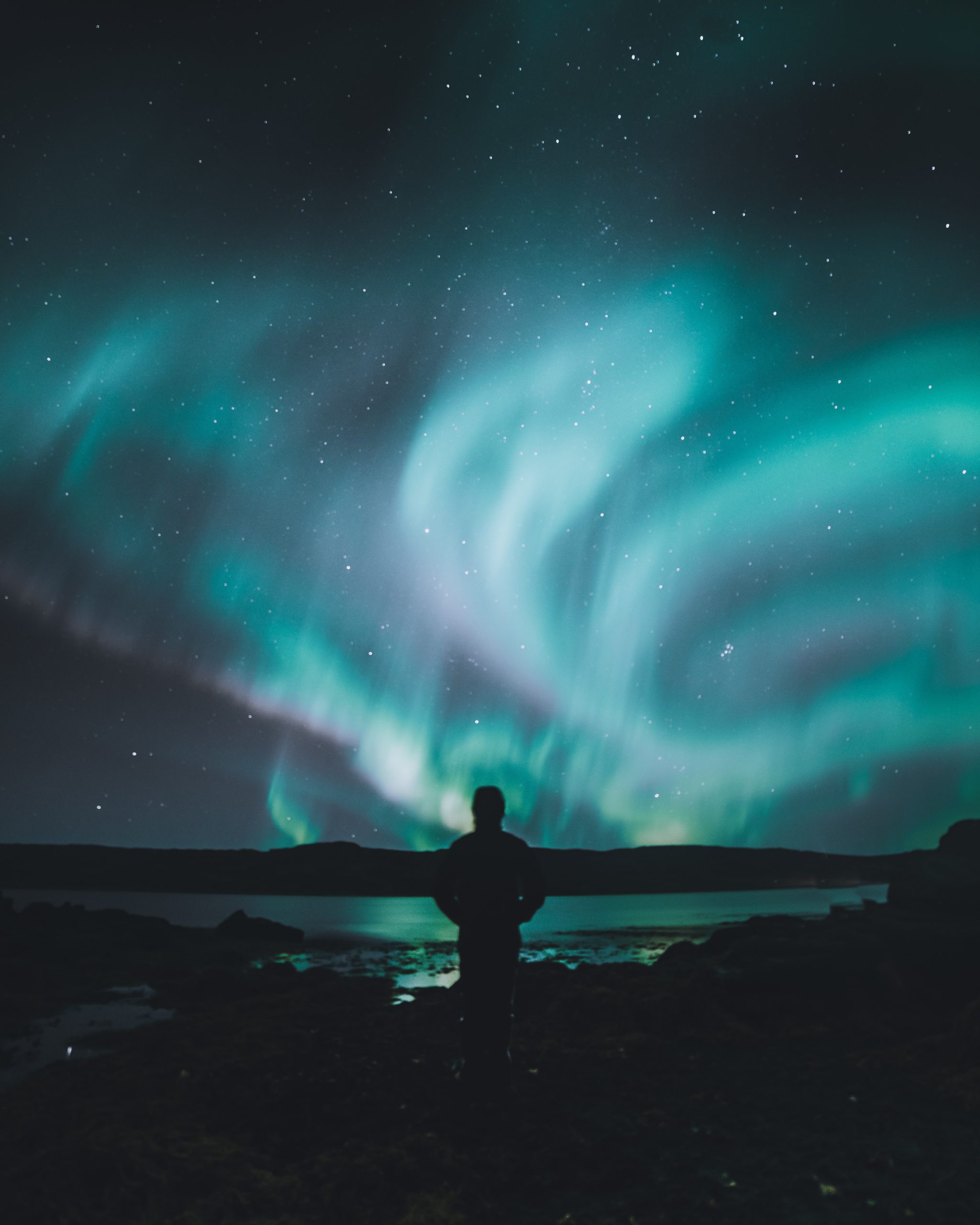
Assembling your Aurora Toolkit
Once you’ve booked your trip for the ‘aurora half’ of the year, you’ve got to remember all of the pieces that have to line up in order for a successful hunt.
These are things like making sure you’re out at night (not at 3:00 pm, even if you could swear it feels like midnight- which it kind of does in December-), making sure you’re in a clear area or an area that will become cloudless or ‘cloud light’ by nighttime, and of course, having a small check on if there’s any solar activity that evening.
It also helps to make sure you’re not in an area of extreme light pollution. Iceland is not populated by huge cities, so we do fairly well on this front, and it doesn’t typically take long to get out of the city and into some real nighttime. However, if you find yourself city-bound at any point, try looking for a spot that takes you out of the direct light and gives you a bit of a break on the eyes.
Remembering that the Aurora Forecast is not the last word!
It’s good to remember that many of these things are variable and imperfect, so it is not always necessary to plan by extremes- unless there is very inclement weather or a safety concern. (Those types of alerts always come first. Can’t enjoy the lights if you’re frozen.)
What I mean by this, is that forecasts are infallible. Not because they are in any way bad, but because weather is a volatile force that occasionally evades even the best of us.
This means that the cloud radar can be off or slow, and the Kp number may not be accurate. It is possible for forecasts to gauge the speed of a solar storm incorrectly, as there are many factors that can add to that figuring. It’ll probably be a few years before we nail down space weather, but I can guarantee that there are a lot of brilliant people working on it.
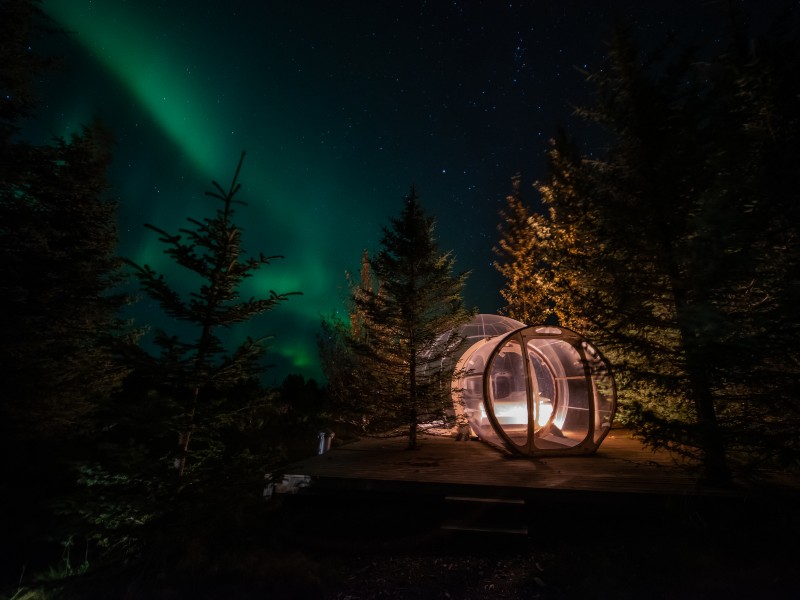
When the numbers don't add up, still look up!
This can mean that some nights, an aurora can occur on a Kp 0 evening. It can also mean that an exceptional evening (like a fabled Kp 8!), can disappoint us. This can happen for many reasons- which sometimes remain unknown to us. Sometimes powerful activity reaches so far that we end up in the middle of it instead, similar to being in the eye of a storm.
Sometimes it’s because we didn’t move very much on our hunt, and so we were only viewing one slice of the sky. It can happen that people see an aurora in one place, but a few kilometers over, nothing! Northern lights are like snowflakes in this way, and no two occurrences are alike. Forecasts are a great tool to have in your kit, and it can be good to cross reference a few good ones.
The TL;DR: Every aurora is a gift
Learning to decipher all of the different forecasting tools can be complex, but like many other information sources, being able to read a few different ones can sometimes give you a more comprehensive idea of what may be going on.
Sometimes, it can be that an aurora did happen, but it was a visually weak occurrence, and you did not realize you were seeing it. If you have only seen photographs of northern lights, it can be hard to recognize a low level manifestation- as they are not quite as neon and extreme as a photograph can be.
Nighttime photography uses processes like slow shutter speeds, aperture, and ISO to perceive light in darkness, in ways that our eyes cannot. This does not mean that auroras cannot be bright, or that all photos are photoshopped- but it does mean that the average occurrence will most likely not match the once-in-a-lifetime shot that you saw on a postcard.
Sometimes all of the factors are completely lined up, but there’s a weather warning, and it just isn’t a great night to chance it. The weather conditions can get very serious here very quickly, and are not worth risking.
All together, this sounds like a massive feat. The thing to take away is, that if you have a window of clarity in the sky, and you’re here in the magical half of the year that gives us this other kind of light, have a look. Once you know how much work it takes for the universe to produce one of these things, it feels miraculous that they happen at the frequency that they do.
Know that you may have to keep an eye out for longer than you’d expect sometimes, and you may not always be successful. But as every local knows, it is always worth looking up. They often happen when you least expect them. (..And it can also be nice to have a few drinks and a hot pot to soak in. You know. Or a transparent Bubble to wrap up in. Just saying.)
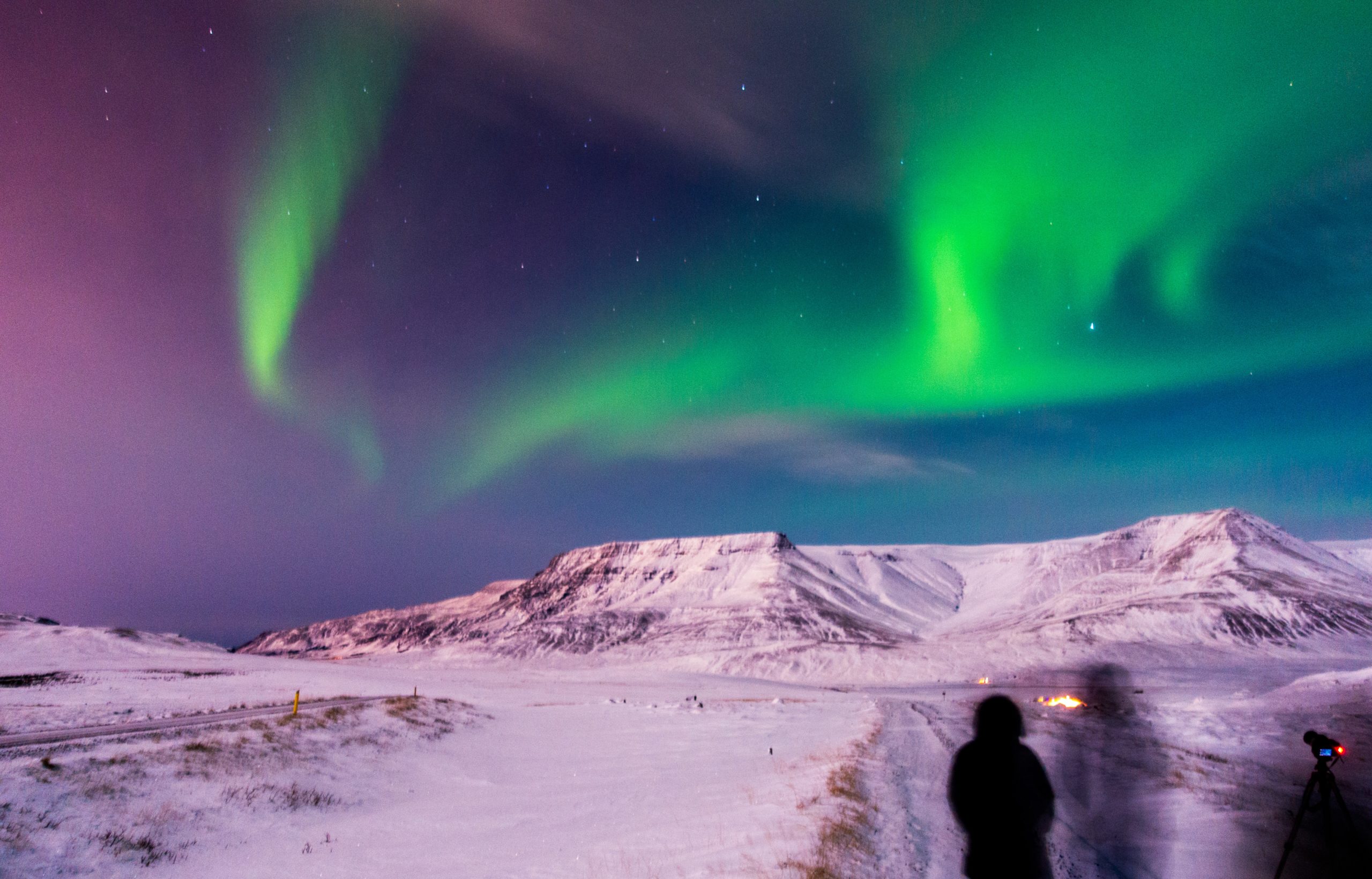
Best Place to See Northern Lights
Best Places to View Northern Lights
Below you will find information on some great places in Iceland for viewing the northern lights. These are not only great places to see the lights but also feature many activities and natural sights. When planning a trip to Iceland it’s important to research what kind of things you would like to do and the places to see. The northern lights can only be seen in the winter, when it’s completely dark with clear skies. There are many nights where visibility is low so make sure you have other items on your bucket list and take in as much of the country as you can. The northern lights are a natural phenomenon, so a bonus to your trip.
Hotel Rangá – the best place to see Northern Lights
Hotel Rangá is one of the most renowned hotels in Iceland for seeing the northern lights. It was the first hotel in the country to offer a northern lights wakeup call service to its guests so they could pull their parkas over their pyjamas if the Aurora made an appearance. In addition to their comfortable and luxurious rooms, the location on the south coast is in close proximity to natural wonders like Seljalandsfoss and Skógafoss waterfalls, the Reynisfjara black sand beach and basalt columns, and the infamous Eyjafjallajökull volcano. Hotel Rangá makes for a great place to see the beautiful dancing northern lights.
Hotel Glymur with its amazing village suites
Hotel Glymur is a friendly hotel with a beautiful village suites. It’s located in majestic Hvalfjörður (“Whale Fjord”) just north-west of Reykjavík, and has breathtaking scenery. It has a lovely relaxed atmosphere and a great restaurant that offers everything a hungry stomach needs. The six village suites are uniquely designed villas, each with an open-concept kitchen, bedroom, bathroom, leather sofas, large screen TV, dining table, amazing art pieces and can cater for 4-6 people. With its remote natural location, it’s a fantastic place to see the northern lights without going too far from the city.
Hotel Gullfoss – next to the famous waterfall
Hotel Gullfoss is located right in the heart of the Golden Circle, next to the amazing and famous Gullfoss (“Golden Falls”) waterfall. One of the most beautiful waterfalls in Iceland—and even the whole world!—it is stunning to see all year round. When the sun is shining on it, there is often a golden rainbow over it that gives the falls their name. During the winter a stay at the hotel is truly magical, with no urban lights around one can walk out into the darkness, or lounge in a hot tub, and gaze at the starry sky and watch the northern lights dance totally undisturbed. You can even get great photos of the lights dancing over the waterfall, capturing two of Iceland’s most famous sights together.
Great hot tubs for Northern Lights viewing
With less than 100 inhabitants, Drangsnes is the ultimate spot for seclusion and solitude for viewing the lights. You can lay in the seaside hot tubs waiting for the auroras to show up over the tiny fishing village, indulge your inner nature-lover by exploring the surrounding area, and go mingle with the locals at the Malarhorn café. When the northern lights do come out here, there isn’t anything or anyone to disturb your enjoyment.
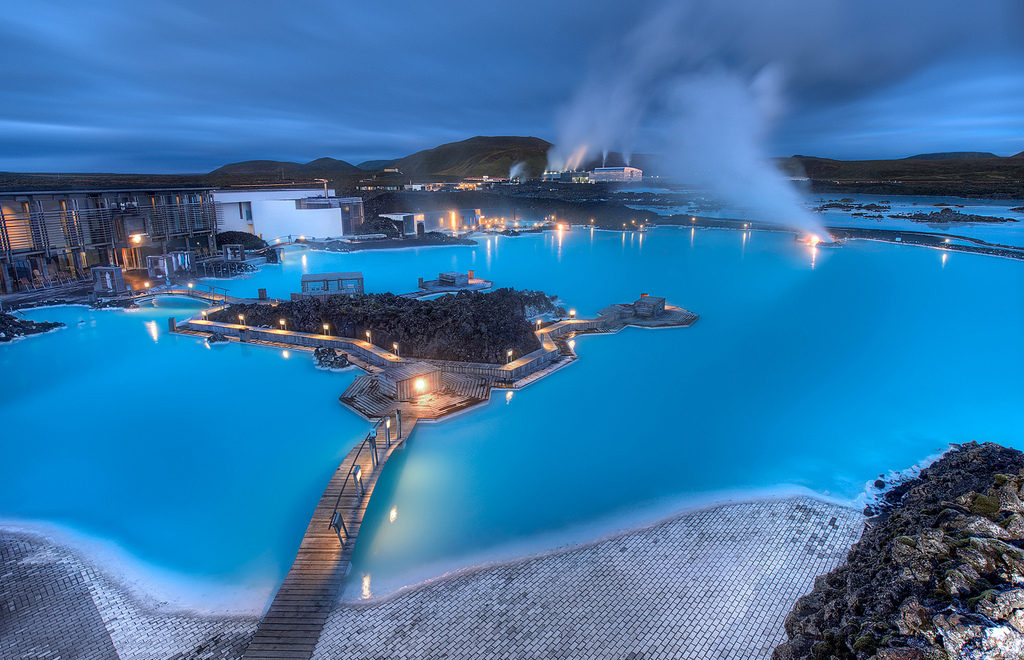
Reykjavik & Akureyri in 5 days
Reykjavík & Akureyri in 4 daysExplore and enjoy the two largest cities in Iceland: 4 day self driveIf you are planning a self drive in Iceland and need ideas for a route, then the northern coast is a lovely choice. You can either pick up your car at Keflavik airport or choose to fly from Reykjavik to Akureyri and pick up your rental car there. The northern coast has many gems so you could spend days there but here we suggest a 4 day self drive route of the area
|
THE 5 DAY ITINERARYDay 1 – Arrive in Keflavik Airport, Overnight Stay in Reykjavik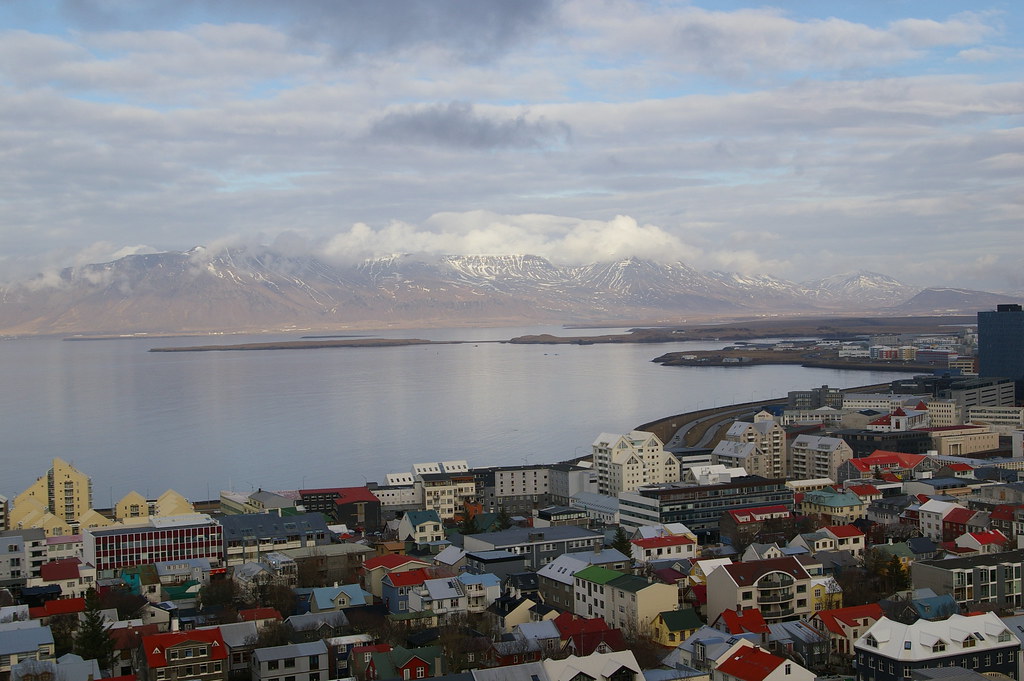
Source: pocius When you arrive at Keflavik international airport, either take a taxi or the Flybus to Reykjavik where you spend the night. The domestic airport is in the city center and easy to get to. Here we suggest you fly from Reykjavik to Akureyri where you pick up your rental car but of course you can opt to pick up your car in Keflavik and drive from there to Akureyri (takes around 6 hours when road conditions are optimal and with 1-2 stops on the way).
They day you spend in Reykjavik, make the most of it and get to know the city a bit. Here you can find a few ideas what to see and do. There are many lovely restaurants in the center that we advice you to check out. Here is a list of our favorite places.
Day 2 – Depart from Reykjavik. Local Flight to AkureyriIn the morning, take a taxi to the domestic airport and fly to Akureyri where you will pick up your rental car.

Source: mlcastle When you arrive in Akureyri have have gotten the keys to your rental car, your adventure of the northern coast will begin. Akureyri itself has a lot to offer so we recommend you spend the day in the city, exploring and enjoying everything it has to offer.
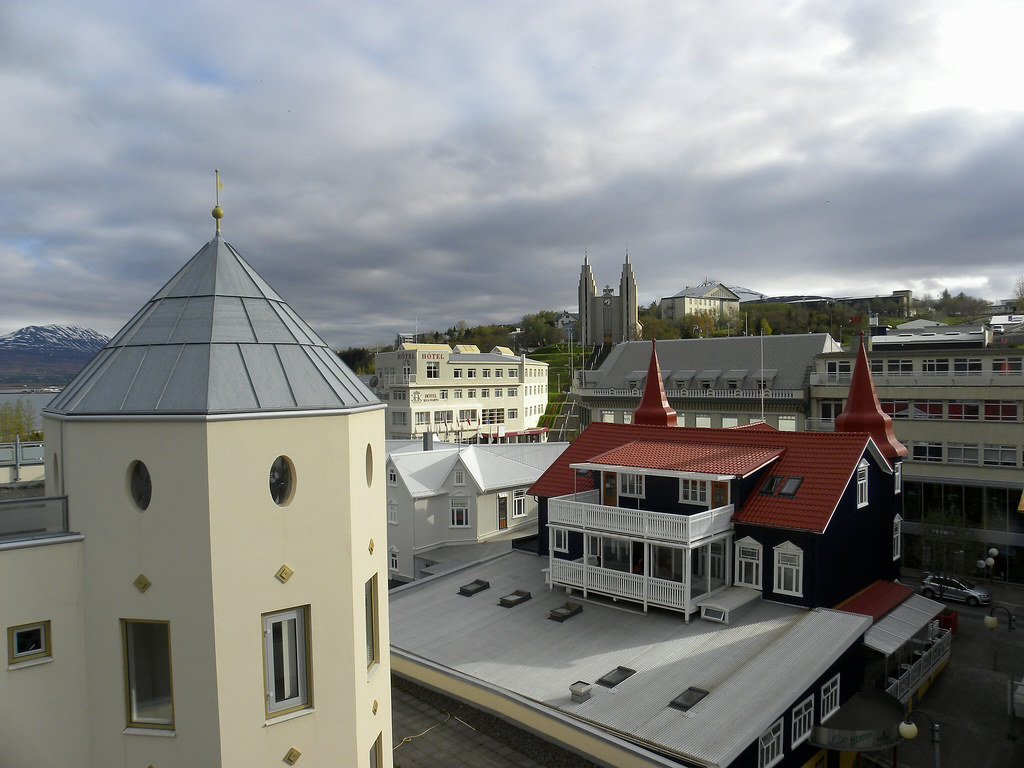
Source: JasonParis In summer the Botanical Garden is a wonderful place to visit. There you will find a unique collection of Icelandic flora and fauna along with imported flowers, trees and shrubs. In winter it is also worth visiting on a nice winter day.
In Akureyri you will find various museums, such as the Akureyri Museum and the Aviation Museum. The Akureyri Museum contains will give you a good overview of the life and history of the area. There you will also find a garden that is a popular picnic spot among the locals. The Aviation Museum is where you will find the history of aviation in Iceland.
Gasir, a medieval trading place, is an interesting site to visit. It is where you can find the remains of a trading post from the Middle Ages. It was the main trading post in Northern Iceland before so here you get a true taste of history!

Source: joaoleitao The church in Akureyri is a site worth visiting. It is symbolic for the town and is known for its many steps. It is a Lutheran church that has great architecture designed by Gudjon Samuelsoon. The stained glass in the center and the bas-reliefs on the nave balcony are just some of its great features that people look at.

Source: Jennie Faber You spend the night in Akureyri at the end of day 2. You can find many nice hotels and guesthouses in and around the city. Just boo in advance as Akureyri is a popular vacation site among locals, both in winter and summer.
Day 3 - Skiing and relaxingAkureyri is one of the most popular places for locals to go skiing. So if you visit in winter, the northern lights aren´t the only attraction. No need to mention but if you are in Akureyri during winter then you should for sure put aurora hunting on your list every night.
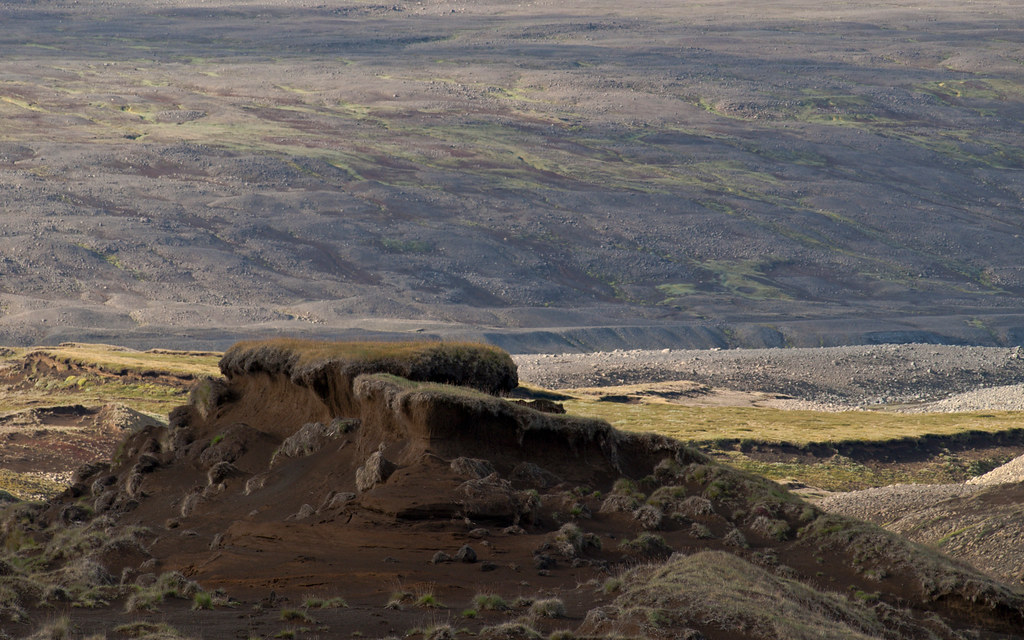
Source: axelkr Eyjafjordur Fjord is one of the best places in the country to do downhill skiing. You can go to the skiing area of Mt. Hlídarfjall or Mountain Kaldbakur, and you can also opt to drive out of Akureyri to Trollaskagi or Dalvik where you will find splendid skiing sites. If you aren´t into skiing then you should do a tour of the area with an experienced guide or in summer simply just drive around and enjoy the amazing views.
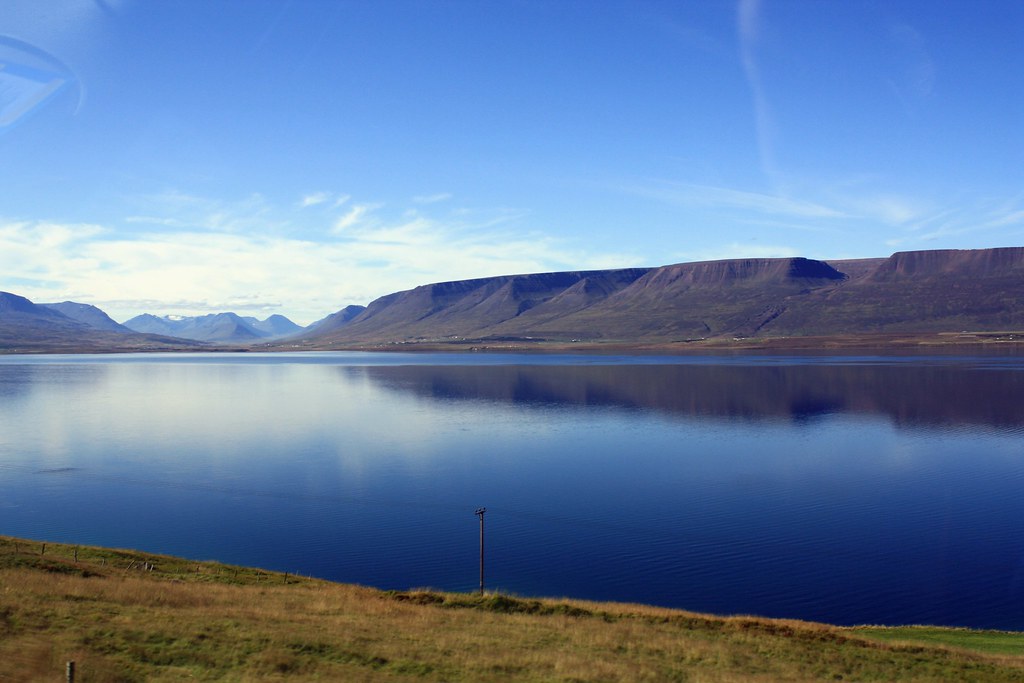
Source: Michael Voelker To go swimming is a must. All pools are heated by natural geothermal water and has various playing and recreation areas for everyone. You will find great pools in the area and it doesn´t matter whether you go during winter or summer, the water is warm so you don´t need to worry that you´ll get cold even though the pools are outdoors!
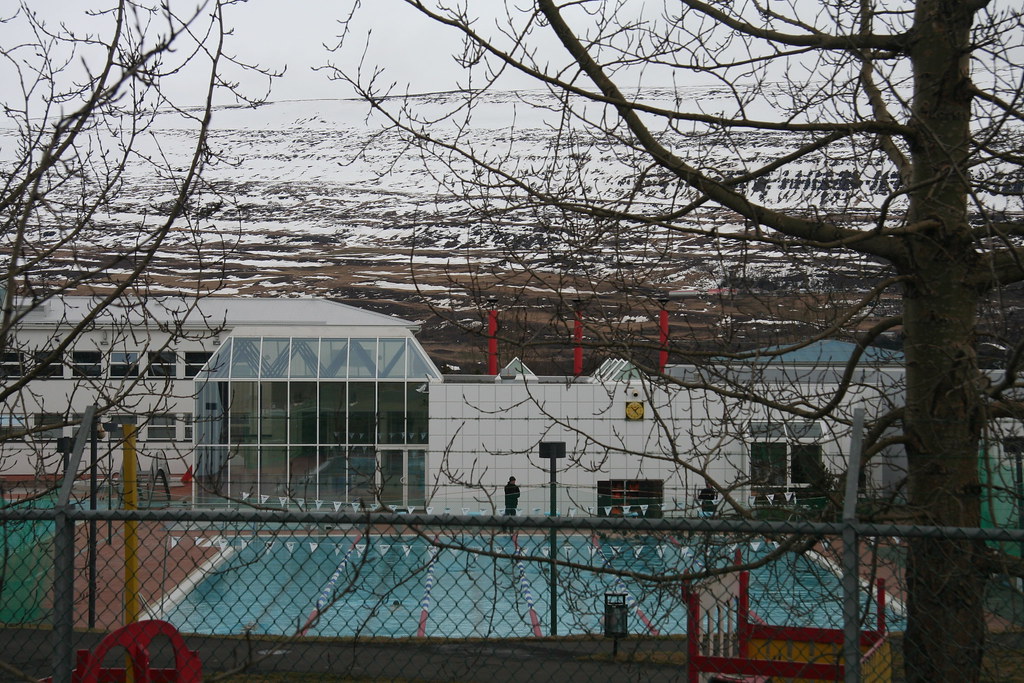
Source: spi516 Day 4 - Sightseeing and Whale WatchingIn the morning one option is to take the sightseeing tours, either by plane or helicopter, if you want to see Akureyri and surroundings from above. It is a nice option as you can see sites that aren´t always accessible on land, like Askja.
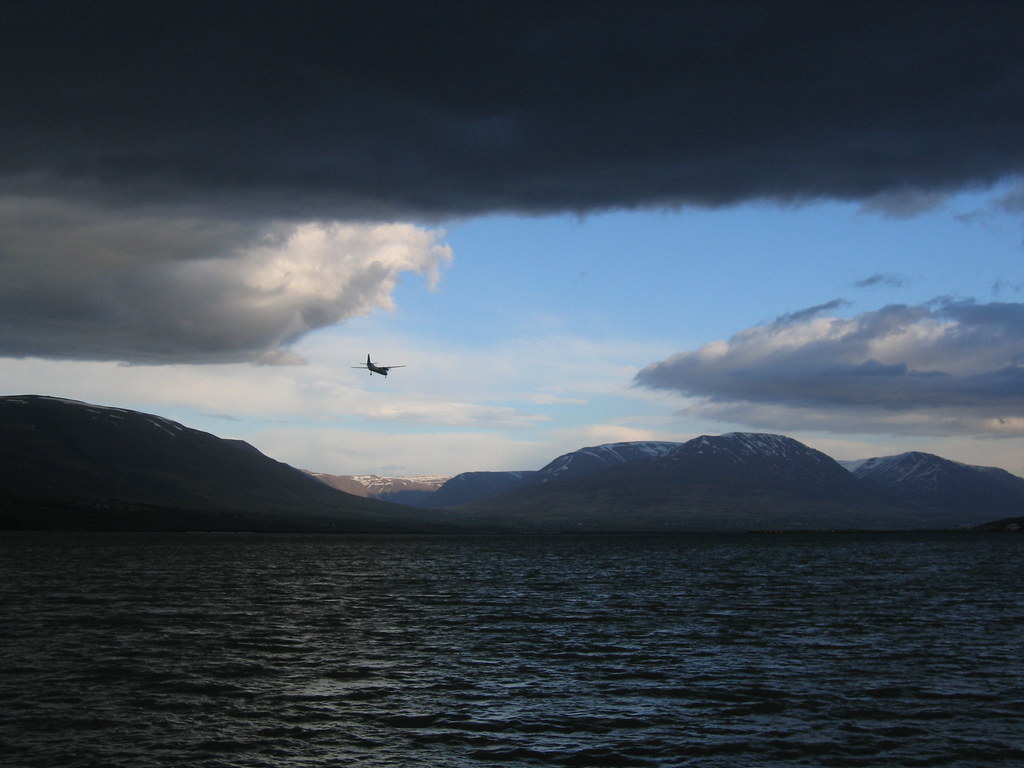
Source: Bernt Rostad In the afternoon you can join a whale watching tour either from Akureyri or from Dalvík. The northern coast is optimal for whale watching but please note that the whale watching tours don´t operate during the winter months. If you want to go whale watching in winter, then you must depart from the harbor in Reykjavik. In the evening, fly back to Reykjavik.

Source: Julien Carnot Day 5 - Blue lagoon and departure dayIf your flight leaves in the afternoon, it is ideal to enjoy the morning in Reykjavik and then head to the Blue lagoon where you can soak and relax before you go to the airport. The lagoon is close to Keflavik airport so it is an ideal last stop on your journey.
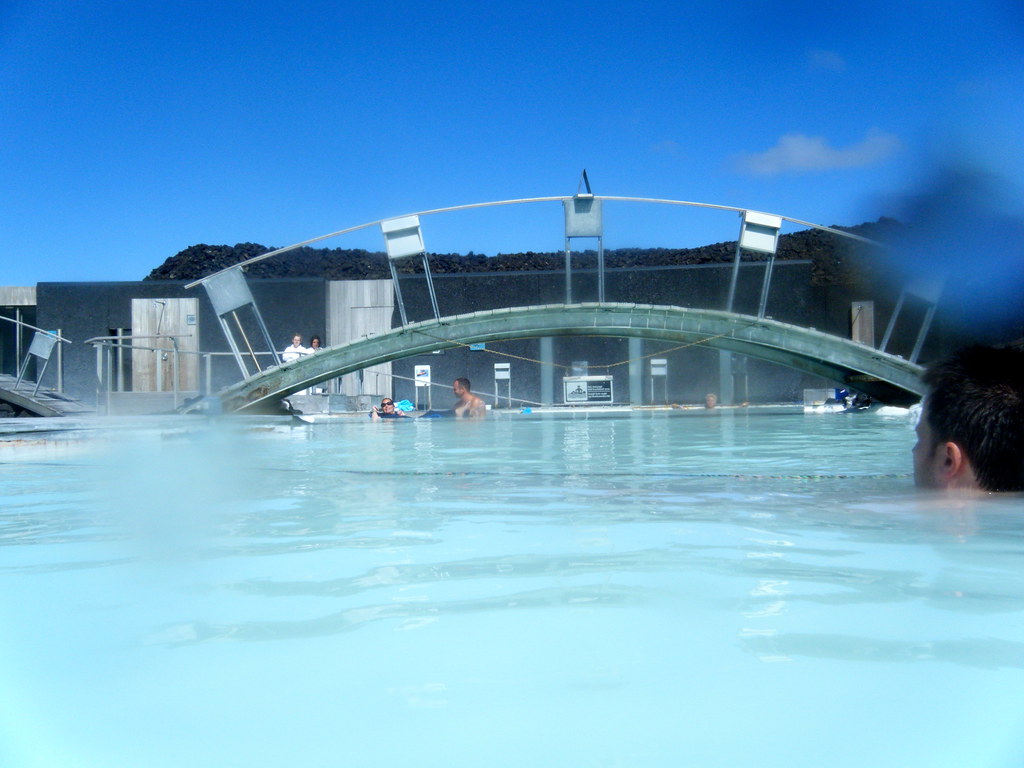
Source: Sarah_Ackerman This route is just an idea so you can enjoy in only a few days what those two cities have to offer. Of course you can expand the tour or make it shorter. Also add D-tours to the route, like Lake Mývatn, Ásbyrgi and Húsavík. What ever you decide to do, it is certain you will enjoy the wonderful two cities and their surroundings.
|
3 Days Self Drive Tour To Snaefellsnes
3 Days Self Drive Tour To Snaefellsnes
This self drive tour itinerary is for people who want to spend 3 days relaxing in the western part of Iceland. For this itinerary we recommend you book an inexpensive yet luxurious stay at Hotel Brú. Have a relaxing and peaceful time in Iceland by going to the western Peninsula of Snaefellsnes and enjoying the sceneries of Stykkisholmur.
Day 1: Arrival into Keflavik Airport and head to the Blue Lagoon, stay at Hotel Bru
Arriving into Iceland at the Keflavik International Airport, you can make your way to your rental car company. Since you will be tired from your flight, this day is about relaxing and enjoying the beauty of Iceland so our first stop is the Blue Lagoon.
The Blue Lagoon is a 15 minutes drive from the airport and there is a large car park by the entrance. Please book in advance as tickets get snapped up fast. We recommend you try the package with both the Silica and Algae Masks and drink at the swim-up bar. The water massage treatment and beauty treatments here are amazing and will leave you feeling energised and ready for the next few days.
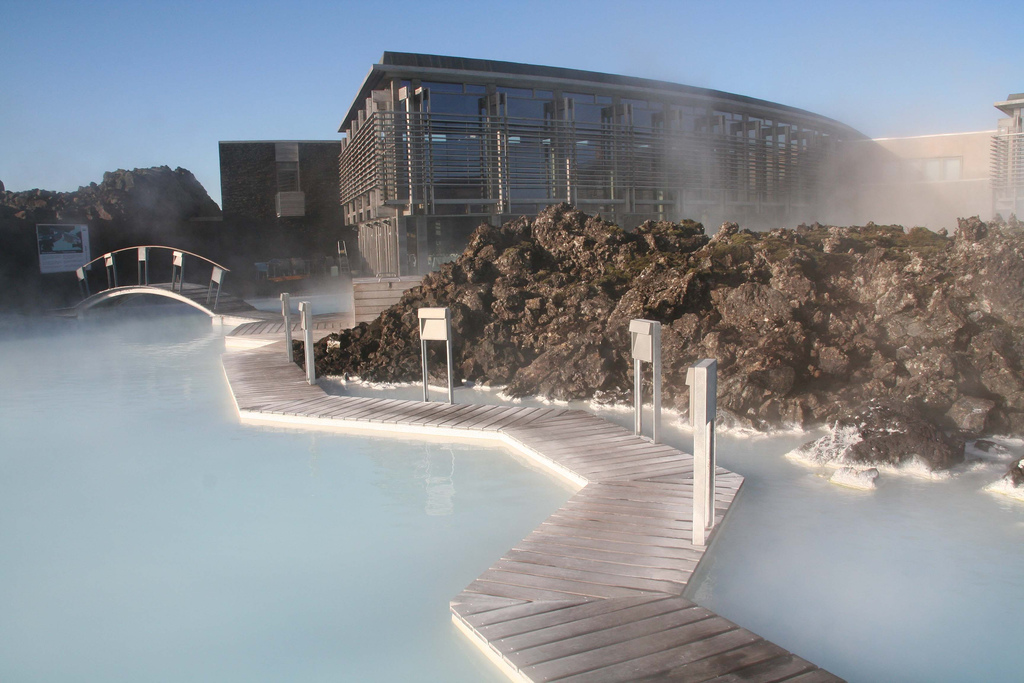
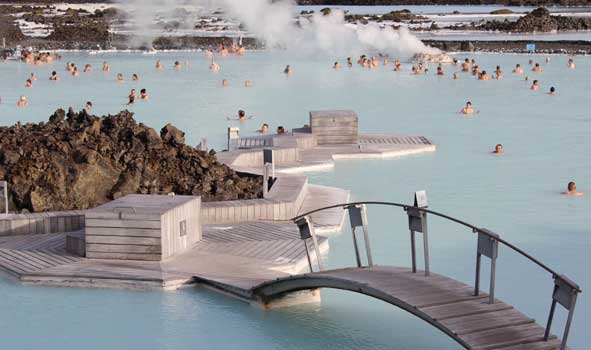
Next, you can drive to Hotel Bru where you can settle for the night. This hotel is one hour and thirty minutes drive from the Blue Lagoon. You will drive through Reykjavik on the way so feel free to stop and take in some sites.
At Hotel Brú try their deliciously mouth watering food at the hotels restaurant known for offering genuine Icelandic cuisine such as lobster soup and Trout. The first night and your first chance to view the Northern Lights, one of the best tourist attractions of Iceland. The hotel offers a wake up call if the lights show up in the middle of the night.
Below is the map for Day 1 for your reference.
Day 2: Snaefellsnes Peninsula
After a good breakfast you hit the road and drive to the Snaefellsnes Peninsula. Head towards the town of Stykkisholmur in the north of Snaefellsnes, a two hour drive from Reykjavík.
Stykkisholmur is the centre of services and commerce in the area with fishing and tourism as their main income. You’ll find great fish restaurants here to taste their unique and delicious menus. Try Fimm Fiskar, a popular fish restaurants serving Icelandic catfish, puffin, guillemot, seafoods and homemade pasta dishes.
After your meal, drive the circular route around Snaefellsnes. There are a number of attractions which are ideal for photo opportunities. We suggest visiting the Snaefellsjökull National Park at the end of the peninsula. Here you can get a very scenic view of the glacier. You can continue towards Arnarstapi, a small fishing village on the southern coast of Snaelfellsnes. Here you will get to marvel at the authentic and charming Icelandic houses, ragged cliffs and ocean views. The beach area here is also home to large colonies of arctic tern.
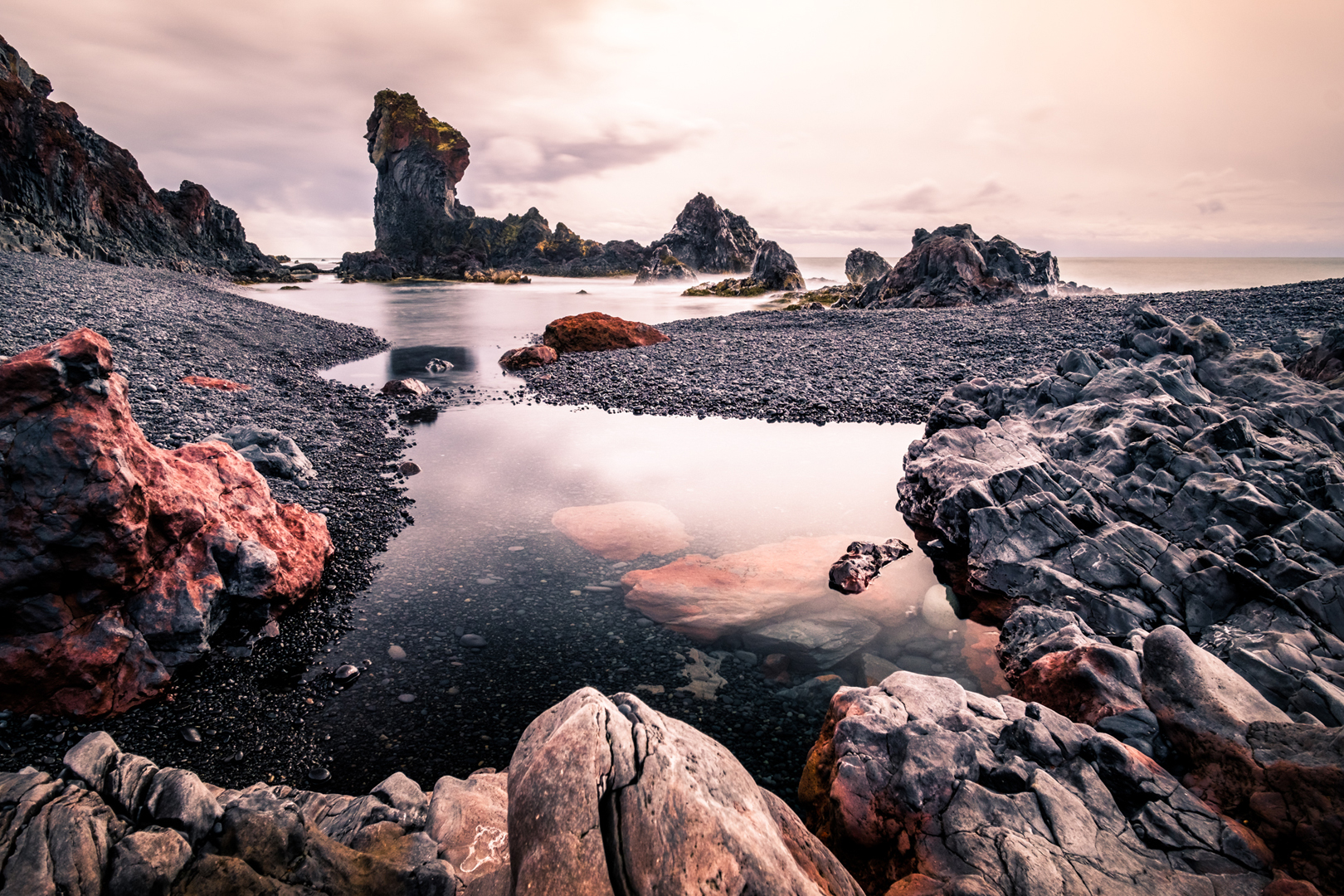
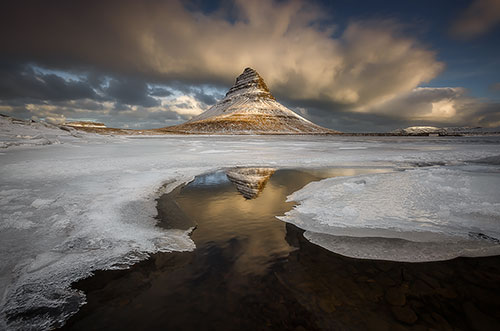
Make sure to check out Kirkjufellsfoss Waterfall, located a short walk away from the equally beautiful Kirkjufell mountain, Iceland’s most photographed mountain. You will recognise it by it’s unique cone-shape. Kirkjufell is known as ‘Church Mountain’ as it resembles a church steeple and has acted as a landmark for seafarers and travellers over the centuries. This area is very photogenic, you might also recognise this location from Game of Thrones.
Djupalonssandur Black Sand Beach was once a bustling fishing village, when Snaefellsnes Peninsula functioned as one of Iceland’s most active trading ports. Walking down towards Djúpalónssandura Black Sand Beach you will notice four large stones of varying sizes weighing between 23kg (50lbs) and 155kg (342lbs), used as lifting stones to test the strength of fishermen. The stones are named Amlodi (useless), Halfdreattingur (weakling), Halfsterkur (half-strong) and Fullsterkur (full-strong). If you walk around the beach you may discover rusty iron remnants of the 1948 shipwrecked scattered along the beach.
Heading back towards Borganes and Hotel Brú to relax and have another chance to glimpse the Northern Lights.
Day 3: Driving Back to Keflavik Airport
Check out and head back towards Reykjavik. Take a few hours to wander the back streets, taking in the local architecture and street art. Visit Harpa and Hallgrimskirkja, and have lunch or a coffee and cake in one of the many cafes.
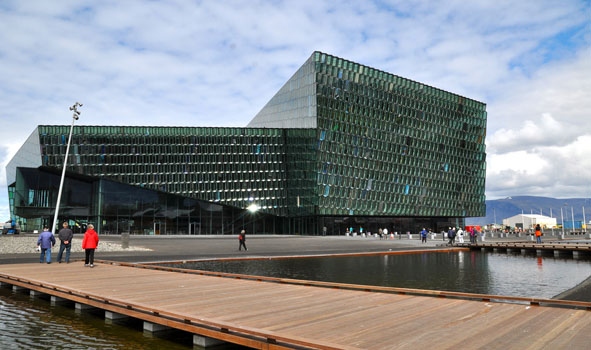
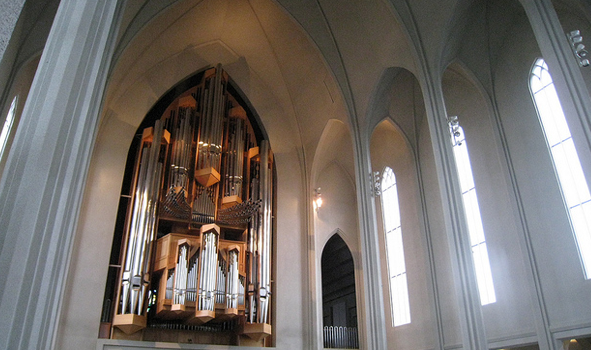
Head toward Keflavik to return your rental car before checking in for your flight from Keflavik Airport.
3 days self-drive idea to West and North
3 days self-drive tour to West and NorthEnjoy the west and north of Iceland with this 4 days self drive idea that has a combination of adventure, exloring and relaxation. |
|
|
This self-drive ideas is for those who want to experience adventure and relaxation in the west and part of north of Iceland. You will go to Akranes and Borgarnes in the west and Blonduos, Skagafjörður and Siglufjordur in the northern part where you can do many things and stay in great accommodations. This is one self-drive idea that will tell you the beauty of Iceland.
|
|
THE 3 DAYS ITINERARYDay 1 – Arrival in Keflavik Airport; Drive to AkranesYou arrive in Keflavik Airport at around late morning and do the necessary things needed for your 3-day vacation. The first thing to do is get your rental car in Thrifty and do the 1 hour and 30-minute drive your first destination, Akranes. Akranes is a beautiful town where you can just relax and enjoy the awesome sights since you just arrived in Iceland. No need to go on an adventure first, so this town is the perfect first stop. You can go to the Langisandurinn (The Long Sand), which is one of the best tourist attractions with its attractive bathing beaches where you can swim and just relax with family or friends. You can also visit the Museum Area in Gardar that tells the stories of the town. And from the town, you can get a great view of Mt. Akrafjall that is breathtaking. Afterwards, you can pick a great restaurant such as the Galito for a lunch full of great meals.
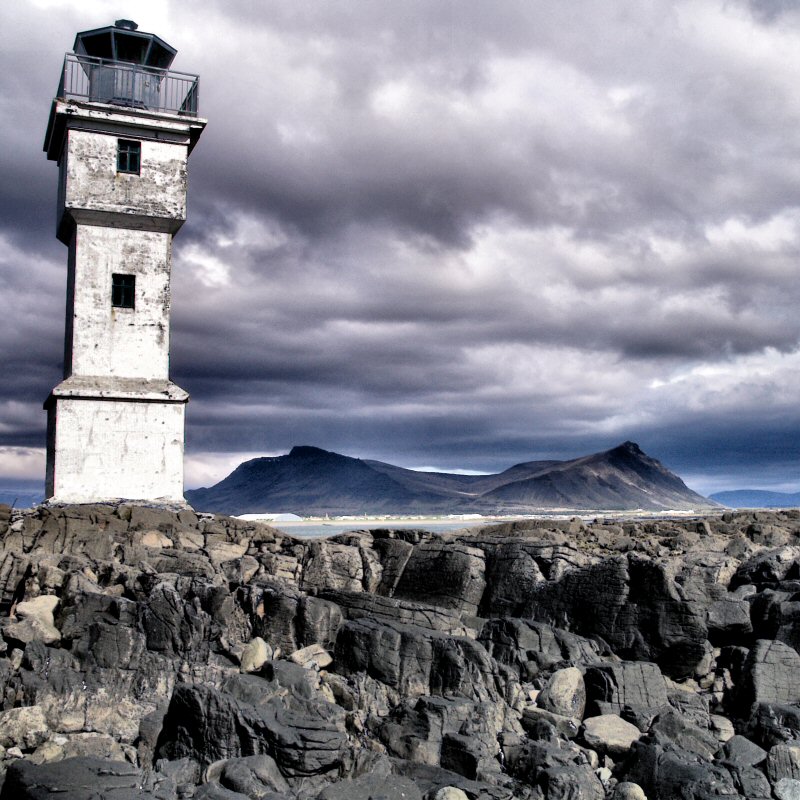
Source: Atli Harðarson After lunch, you can go to the small town of Borgarnes that is located on a peninsula at the shore of Borgarfjörður.

Source: Ulrich Latzenhofer One of the places of interest that you should go is the Church of Borgarnes. This famous tourist attraction is known for its great architecture and how it is visible throughout the town. Afterwards, you can go to various trourist attractions in the city such as Puppet Museum of Bruduheimar and a museum in The Settlement Centre. While the town is small, you can be assured you will see a lot of attractions here.

Source: yashima Afterwards, you can go straight to Hotel Bru for dinner and check in. And if you are lucky, you will be able to see the Northern Lights. And you don't have to worry because the hotel staff will give you a wake up call when the lights appear. Here is the map for Day 1:
Day 2 - Exploring the North: Blönduós and SkagafjörðurHave breakfast in Hotel Bru and check out. From there, you can do the almost 3-hour drive to Blönduós, a small seaside town in the north of Iceland. The first place of interest that you can go is the Blönduós Church, which is famous for its unusual architecture. The church was designed based on its surrounding mountains and landscape and has good acoustics, which make the sound carry well and beautifully for singing.
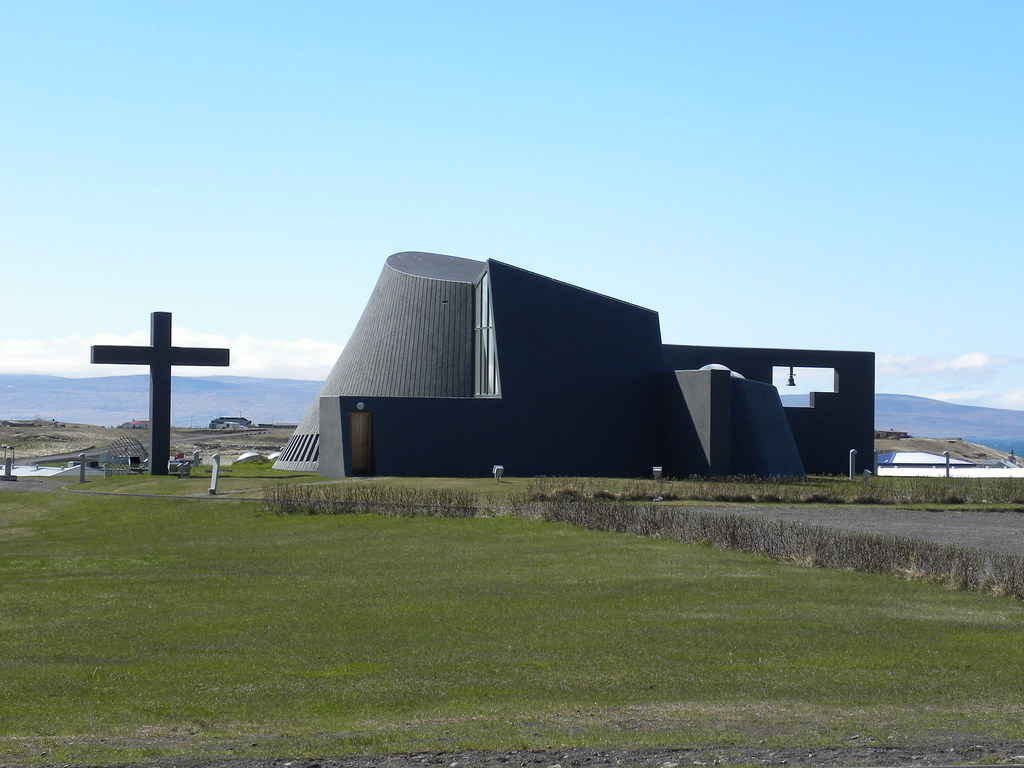
Source: JasonParis Another place that you can go to is the 9-hold golf course, especially if you are a golfer and want to get our more in your 3-day vacation in Iceland. The golf course is located just north of the town and you can inquire their golfing activities there. Afterwards, you can either fo bird watching, hiking (like in the Húnaflói area) and bird watching. Another famous activity that you can do is salmon fishing in Blanda River. You will never run out of things to do here in Blönduós. Before leaving Blönduós, have lunch in Potturinn Restaurant that offers a wide variety of delicious food at reasonable prices that includes Italian, Indian, Icelandic and vegetarian.

Source: eskimo_jo The next place you go is the municipality of Skagafjörður.
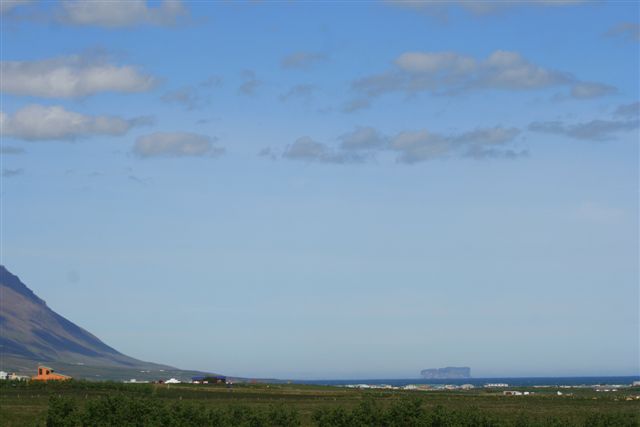
Source: Gúnna One of the things you can do is river rafting to continue the adventurous streak on this day. Skagafjörður is known as the capital of whitewater rafting in Iceland, where there are powerful and wild glacial rivers in remoteness of the municipality. The water is always on high levels, which adds more adrenaline when doing this extreme sport. You can ask tour companies such as Nordic Travel and Arctic Adventures regarding river rafting in this municipality.

Source: Stig Nygaard Afterwards, you can relax and rejuvenate in one of the seven pools of the municipality. You can try the hot springs and pools of Sauðárkrókur where you sit in a traditional hot tub and bond with your family and friends as the hot water relaxes your body. Then you can have dinner and check in Hótel Varmahlíð. Below is the map of Day 2:
Day 3 - Siglufjörður; Departure from IcelandCheck out of Hótel Varmahlíð and proceed to the small town of Siglufjörður, in which you can spend the whole morning exploring. it is surrounded by towering mountains and have the fishing industry as their source of income. If you just want to look around town and relax before your depart the North, this is the perfect place for a last stop.
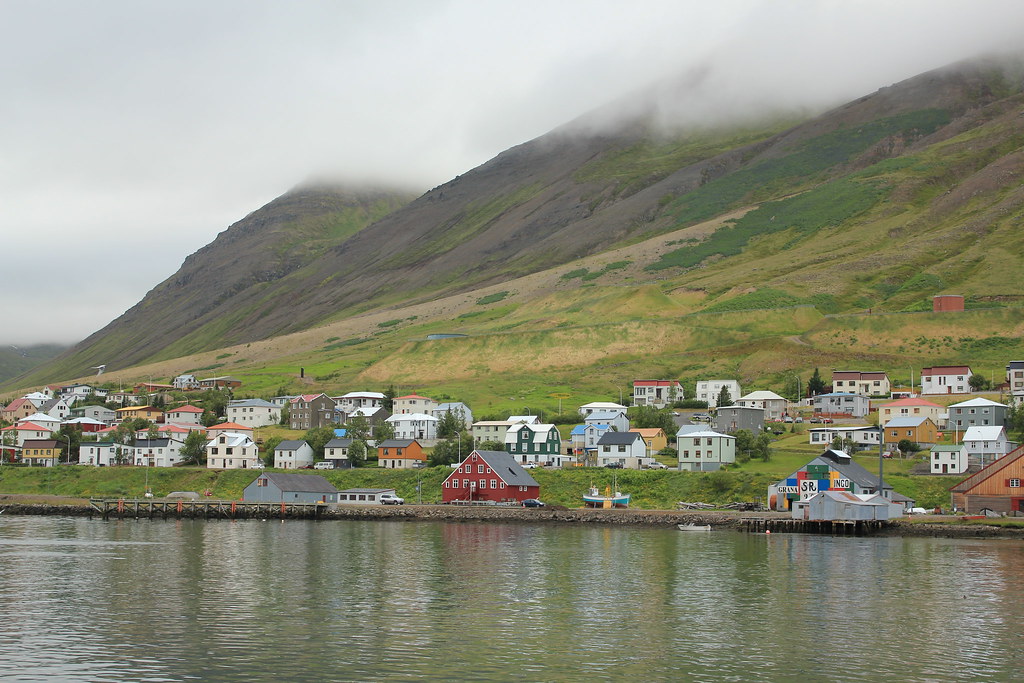
Source: Julien Carnot The first place you can visit is The Herring Era Museum. It has a big collection of stories of the town, the fishing industry of Iceland and other stories concerning the development of the country. It also has interactive presentations and has various displays of boats and various artifacts. Afterwards, you can do bird watching, walk around town, join in the Herring Festivals if given the chance, and eat your lunch befoe departing to

Source: thisishopelandic 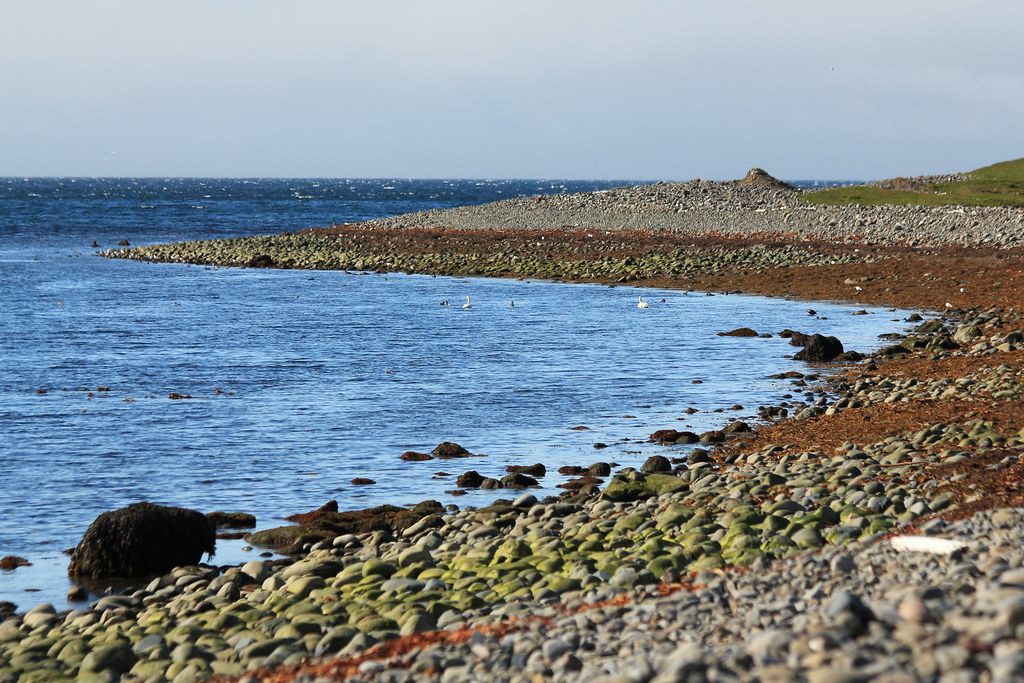
Source: Julien Carnot 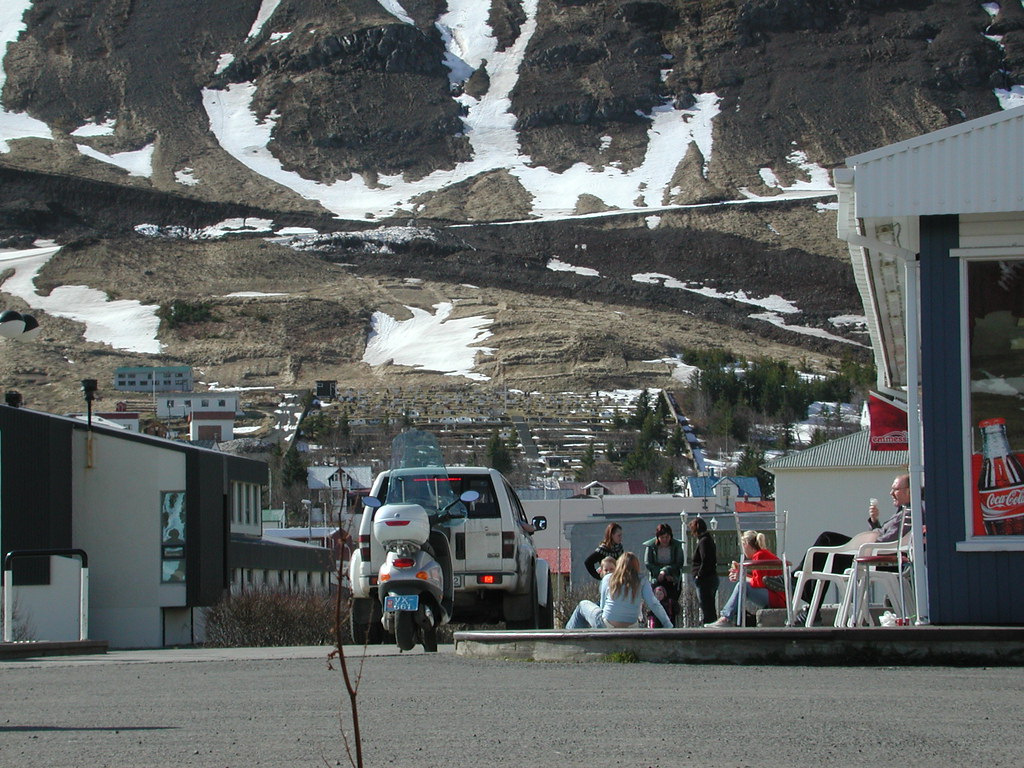
Source: sela-v You depart from Siglufjörður at around after lunch, do the five-hour drive towards Blue Lagoon for rejuvenation and re-energizing. You can have have some 1-2 stopovers in between the drive to rest. After Blue Lagoon, you can drop off your rental car in Thrifty then proceed to Keflavik Airport for your departure.

Source: Sarah_Ackerman Hope you had a wonderful time in Iceland. Here is the map of Day 3:
|

